SUSTAINABILITY REPORT







As of September 30, 2022
For more than 100 years, Helmerich & Payne (H&P) has been a trusted partner in the industry. The Company’s longevity results from our commitments to shareholders, business partners, employees, and the communities in which we operate. We are a leader in the drilling industry through our innovation, the value we bring to customers, and our support of sustainability across our operations. Our customer-centric approach will continue to underpin our service and product offerings as we evolve and deliver a wider array of drilling and digital technology solutions.
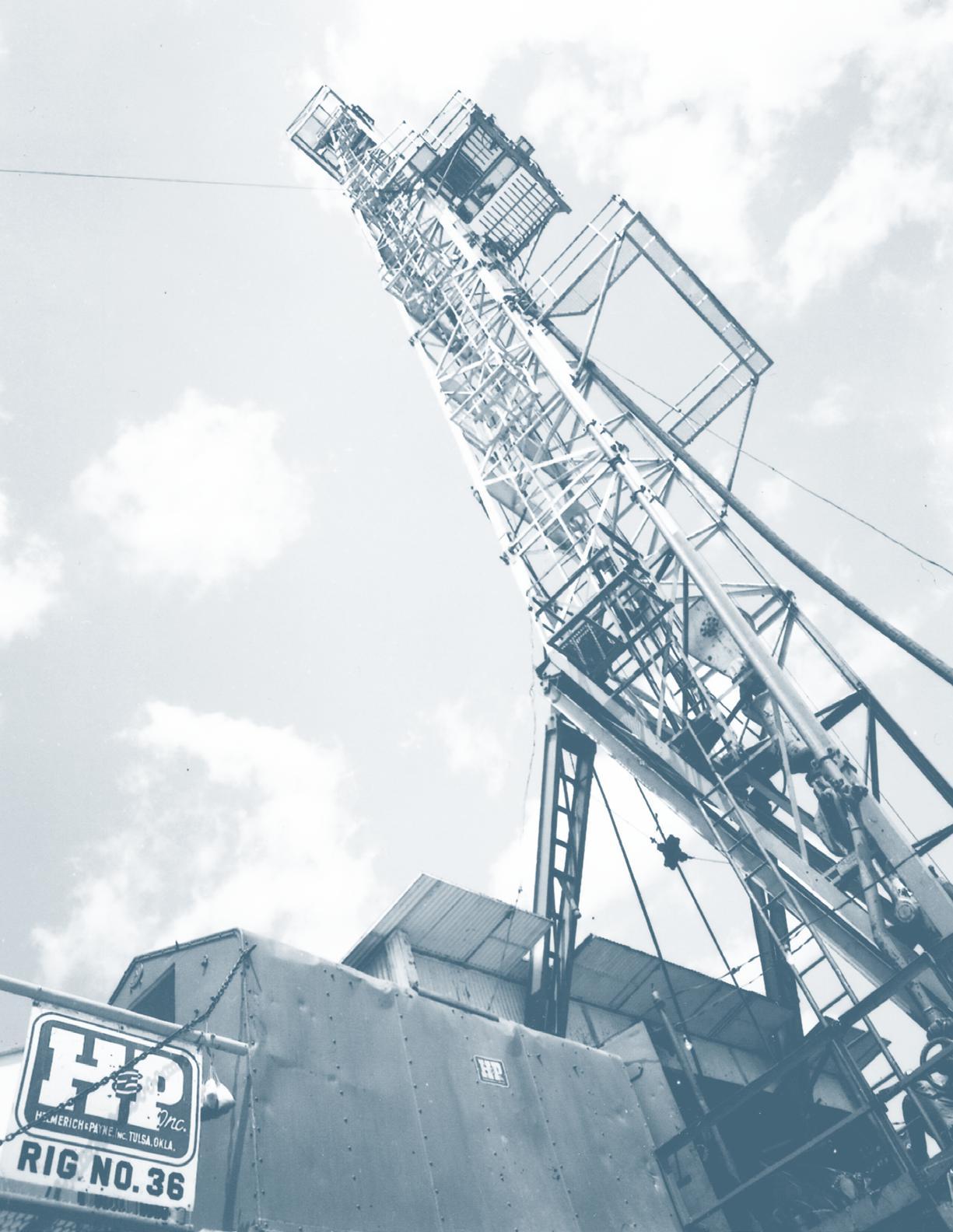
Women’s Energy Network of Greater Oklahoma (WENOK)
› Performed a robust quantitative scenario analysis aligned with Task Force on Climate-related Financial Disclosures (TCFD)
› Recognized successes within the 2022 Environmental Actively C.A.R.E. Goal
› Established new 2023 Environmental Actively C.A.R.E. Goal with continued focus on greenhouse gas emissions reductions
› Currently underway in certifying our Environmental Management System with ISO 14001
› Developed partnerships to help reduce emissions and fuel consumption as well as implement alternative energy sources at the rig site
› Introduced new products focused on power management and the ability to manage rig engine power efficiently
› Drilled the first horizontal geothermal well in the U.S.
› Achieved successes in Safety Actively C.A.R.E. Goals
› Improved scope 1 and 2 emissions normalized by revenue by 11% since 2021
› Reduced absolute emissions in Offshore Gulf of Mexico segment by 41% since 2018
› Our North America Solutions rig engine emissions normalized against distance drilled have dropped by 22% since 2018
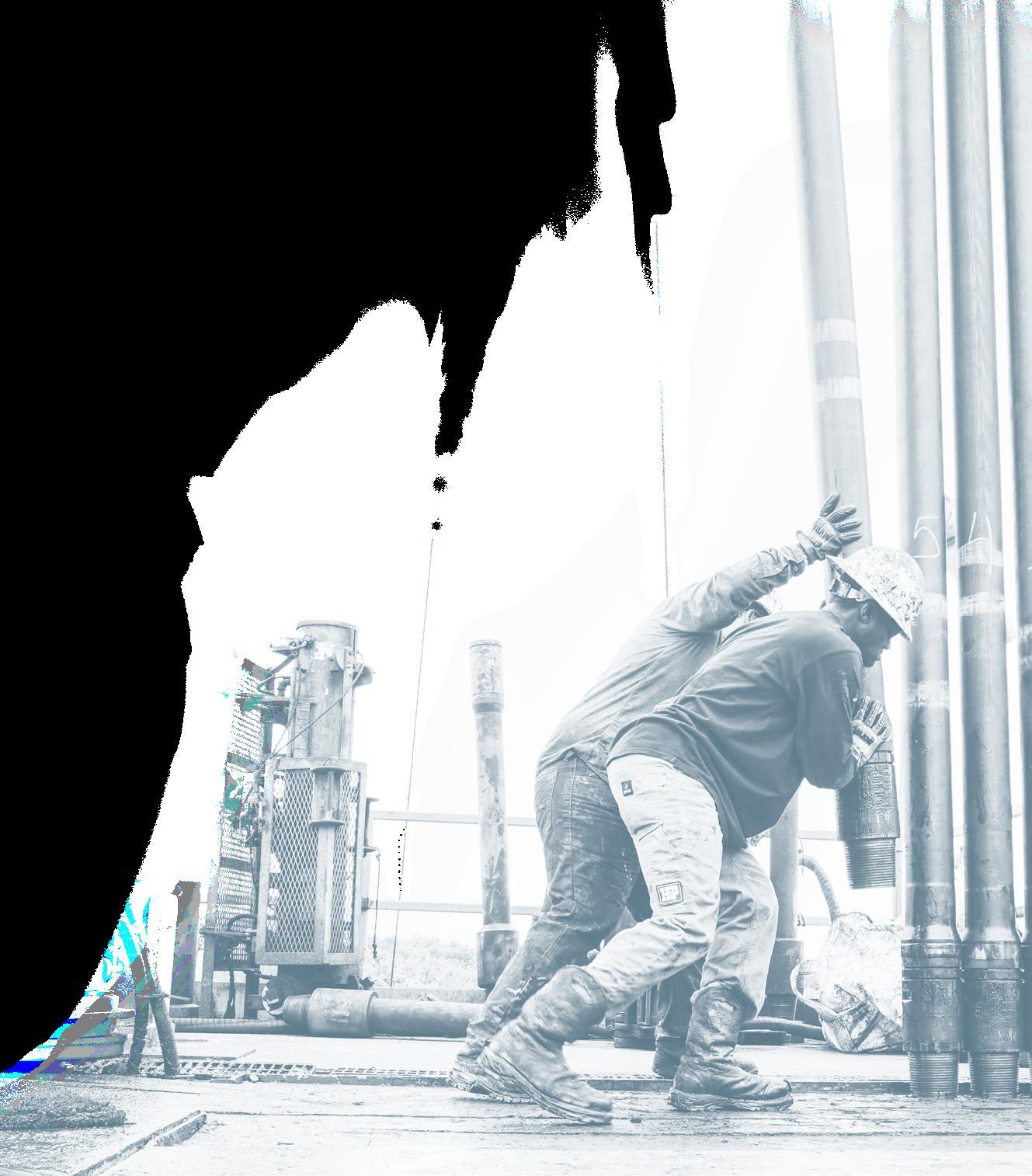
› Set a singular 2023 Safety Actively C.A.R.E. Goal focused on the H&P LifeBelts program
› Added new Employee Resource Group (ERG) Women of H&P – Latin America
› Focused on execution of Diversity, Equity, and Inclusion strategy for all employees, showing improvements in diverse representation of workforce
› Supported over 75 philanthropic organizations during fiscal 2022
› Aligned Human Rights Policy with Universal Declaration of Human Rights
› Provided transparency into our sustainable supply chain management processes, such as our scorecard and supplier engagement mechanisms
› Highlighted ongoing work with the International Suppliers Network to assess information on supplier health and safety practices
› Updated Corporate Governance Guidelines formalizing our commitment to include persons who reflect diverse backgrounds, including diversity of gender and race, in each search for Director candidates
› The Board of Directors has oversight of corporate sustainability and the Quantitative Scenario Analysis aligned with TCFD
› Enhanced internal controls over non-financial data to continuously improve consistency, comparability, reliability, and collection quality for emissions, safety, and diversity data

I am pleased to share H&P’s 2022 Sustainability Report highlighting our corporate stewardship and providing transparency to investors.
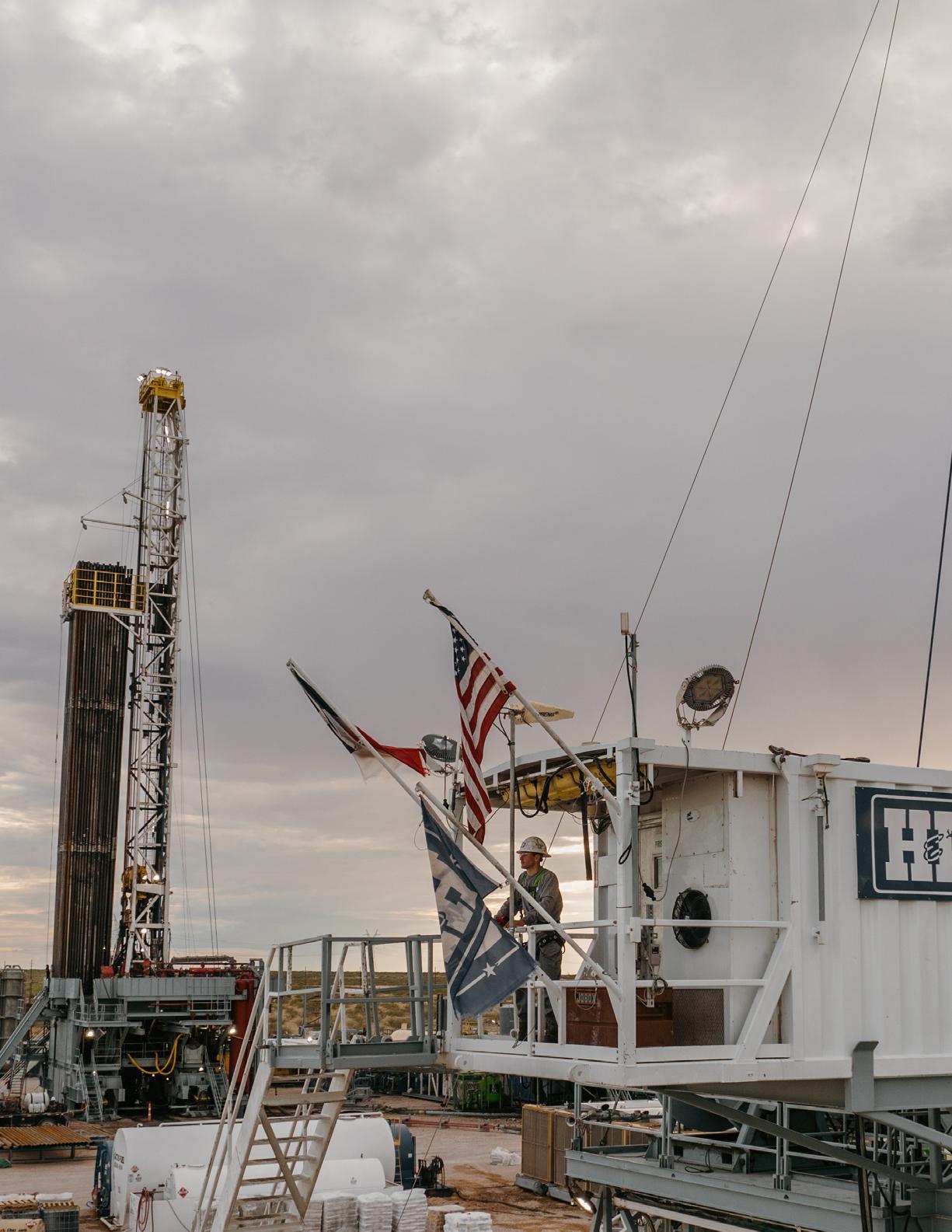
Access to reliable energy is fundamental to sustaining and improving the quality of all lives on a global basis. Unfortunately, events in the past year have served as a reminder of how critically important that is. Furthermore, these events make it more apparent that it will take a unified approach to address climate change, and that maintaining inflexible ideologies or socially popular one-size fits all approaches will not work and are often times counterproductive.
This is one of the reasons why we take our leadership position in the industry very seriously – in safety and human capital, in financial and environmental sustainability, and in providing transparency to our various stakeholders.
We continuously strive to be better than the day before; it is part of our culture. Some contend that the term ‘company culture’ often gets overused and is overly popularized such that it starts to lose its meaning. It does not at H&P. Our deep-rooted foundational elements in ‘Do the Right Thing’ have served as a basis in our culture for more than 100 years.
As we move forward in becoming more transparent and better custodians, we appreciate more of what we can control, what we have influence over, and frankly what we cannot control. Given our place in the overall oil and gas value chain, we acknowledge the important part we play. Absent the drilling of wells, the entire oil and gas value chain would shut down. With that realization, we are also aware of our ability to influence the efficiency, safety, and environmental impacts and will continue to utilize that influence to direct positive improvements in drilling a well.

Additionally, I am gratified by the accomplishments we have made during the past year, but I am equally proud to see the core values that are instilled in the employees of H&P. These values not only reflect who we are, but also how we interact with our stakeholders, including one another, our shareholders, our customers, our suppliers, and the communities in which we operate.
On behalf of everyone at H&P, we remain committed to our core purpose of improving lives through efficient and responsible energy.

Sincerely,
John Lindsay President and Chief Executive Officer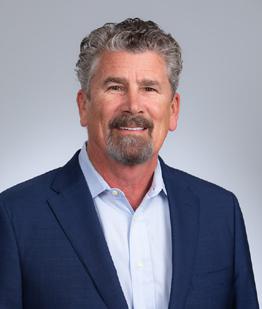 – JOHN LINDSAY
– JOHN LINDSAY
“
Given our place in the overall oil and gas value chain, we acknowledge the important part we play. Absent the drilling of wells, the entire oil and gas value chain would shut down. With that realization, we are also aware of our ability to influence the efficiency, safety, and environmental impacts and will continue to utilize that influence to direct positive improvements in drilling a well.”
Improving lives through efficient and responsible energy.
Almost every aspect of modern life depends on energy – its availability and access to it. Ensuring the availability of efficient and responsible energy requires innovation and planning. Planning for the known as well as the unknown – taking calculated risks and anticipating future needs. H&P is rich in history and that history helps form how we work today. With more than 100 years of innovation under our belts, we are uniquely positioned to assist in the enablement of energy production in an efficient and responsible manner to the benefit of people across the globe.
We safely provide performance-driven drilling solutions.
H&P has a reputation for reliability, operational excellence, and financial discipline as well as industry leadership in technological innovation. We provide performance-driven drilling solutions intended to make oil and gas recovery safer and more economical for our customers. We have a customer-centric focus and operate in the drilling segment of the oil and gas value chain. Our FlexRig® fleet combined with our software solutions help us to provide expertise and advanced technology and equipment to drill oil and gas wells for companies in the exploration and production (E&P) segment.
Our unique business model spans design, construction, fleet operation, maintenance, technology development, and implementation allowing us to maximize the value created through our integrated drilling solutions.


Our values reflect who we are and the way we interact with one another, our customers, partners, our shareholders, and the community.
Our values inform every aspect of our business and help us drive our commitment to continuous improvement. In a competitive industry and changing energy landscape, our values inspire our efforts to deliver industry-leading services and offer innovation in safety and environmental impact while making energy accessible globally. Said another way, we strive to “Do the Right Thing” at every turn.
We treat one another with respect. We care about each other. We are committed to Controlling and Removing Exposures for ourselves and others.
We do our part and more for those around us. We consider the needs of others and provide solutions to meet their needs.
We constantly work to improve and try new approaches. We make decisions based on our customers’ challenges and goals with a long-term view in mind.
We listen to one another and work across teams toward a common goal. We collaborate to achieve results and focus on success with our customers and shareholders.
We are honest and transparent. We tackle tough situations, make decisions, and speak up when needed.
EXPLORATION DRILLING COMPLETIONS PRODUCTION PROCESSING MIDSTREAM DOWNSTREAM END USEHelmerich & Payne (H&P, we, our, or Company) is pleased to present its second annual Sustainability Report, which outlines our sustainability efforts and performance during our fiscal year ended September 30, 2022.

Our approach to sustainability continues to be grounded in ‘Doing the Right Thing’ and our ongoing engagement with employees across the organization, our customers, suppliers, and our shareholders. We continue to demonstrate our commitment to transparent reporting by aligning the report to leading sustainability reporting frameworks, including the Sustainability Accounting Standards Board (SASB), the Global Reporting Initiative (GRI), and the Task Force on Climate-related Financial Disclosures (TCFD) and have reported our results against these frameworks, which are outlined in the Index section
Additionally, this report updates our sustainability data for fiscal 2022 and introduces our climate quantitative scenario analysis and the associated assessment of risks, opportunities, and related strategies which tests our strategy for resiliency against different scenarios, as detailed in the Quantitative Scenario Analysis section.
For questions or feedback regarding H&P’s sustainability efforts, please contact: Sustainability@hpinc.com.
One of the purposes of this report is to promote transparency and accountability in the data we provide to our stakeholders related to our sustainability initiatives. Though not required, we engaged Ernst & Young, LLP to provide limited assurance over select sustainability data and metrics included in this Sustainability Report. The scope of the thirdparty assurance includes:
• Scope 1 emissions;
• Scope 2 emissions;
• total fuel consumed,
– percentage renewable,
– percentage used in on-road equipment and vehicles and off-road equipment;
• gender diversity metrics;
• ethnic diversity metrics;
• Full-Time Equivalent (FTE) Fatality rate;
• FTE Total Recordable Incident rate; and
• FTE Lost Time Incident rate.
Corporate sustainability is a top priority at H&P. The Board of Directors (the Board) oversees our sustainability initiatives, with aspects of such oversight formally integrated into Board meetings. In addition, the Board’s committees focus on certain aspects of sustainability related to their functions and regularly report out to the entire Board. Management is responsible for planning, monitoring, and leading the implementation of our sustainability initiatives, and oversaw the development of this report.
Importantly, this year, the board and senior management played important roles in advancing the quantitative scenario analysis as part of our climate strategy and broader alignment with the TCFD. This is described further in the Climate Risk Management and Governance section.
Listed below are the committees of our Board and their respective responsibilities related to corporate sustainability.
The Audit Committee directly oversees H&P’s guidelines and policies with respect to risk assessment and risk management, including significant financial and other business risk disclosures, such as risks related to sustainability.
The Human Resource Committee oversees sustainability performance-based executive compensation metrics, such as those related to safety and the environment, and annually reviews a compensation risk analysis prepared by management. Additionally, the committee oversees many other aspects of human capital management such as benefits.
The Nominating and Corporate Governance Committee reviews the composition of the Board as a whole and recommends, if necessary, measures to be taken so that the Board reflects the appropriate balance of knowledge, experience, skills, and expertise. More on the Board’s sustainability expertise can be found in the Board Composition section. The committee also periodically reviews our Code of Business Conduct and Ethics and our Corporate Governance Guidelines, and recommends changes as needed.
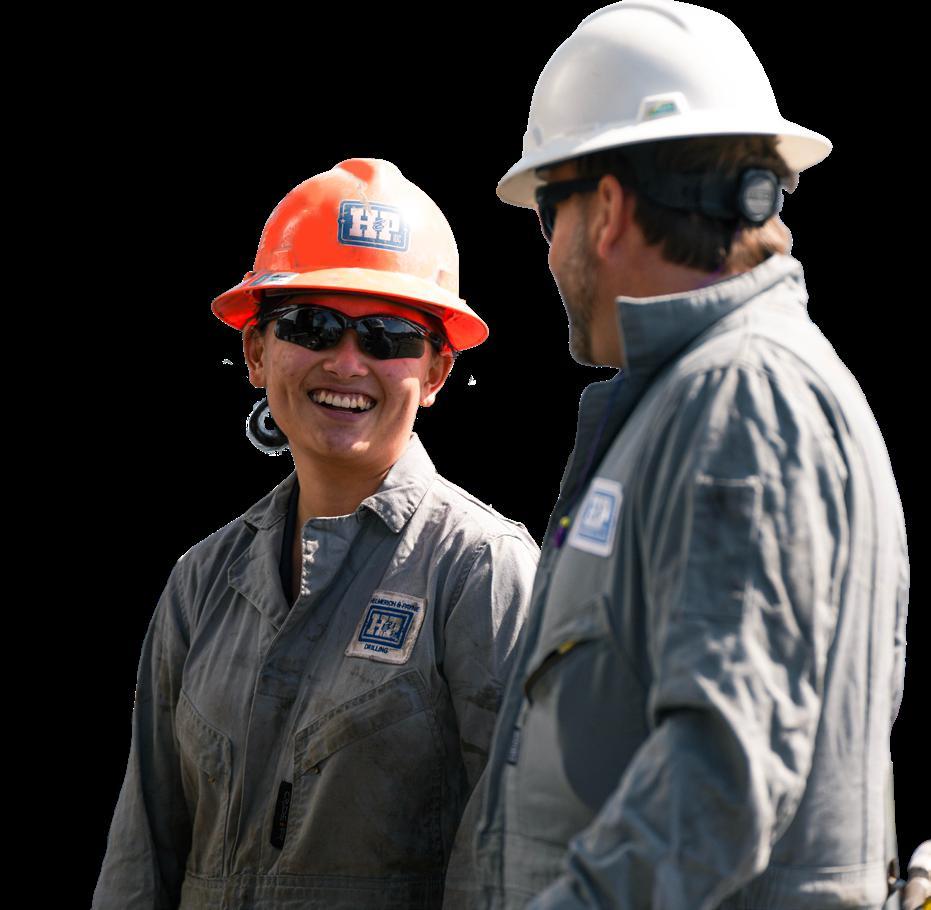

Environmental practices at H&P continue to mature and advance with a focus on reducing our own operational and, where possible, influencing our customers’ impacts on the environment. We utilize our vast mechanical and data capabilities, employee and stakeholder contributions, Environmental Management System (EMS), and understanding of environmental risks and opportunities when developing our environmental strategy.
Our Board provides environmental management oversight with input from senior management as part of its larger sustainability and risk oversight functions. The Board reviews environmental stewardship, climate change matters, and more. We have programs in place to manage climate and environmental risks as well as contingency planning and emergency response planning. H&P’s environmental specialist leads the EGT, while also serving as a corporate sustainability lead in coordinating our sustainability efforts across the organization.
A detailed graphic and corresponding definitions outlining environmental oversight is below:
Our technology and mechanical capabilities help us execute our environmental strategy and adapt to the evolving demand for energy resources. For instance, we continue to set emission reduction targets across our operations and progress our investments and solutions-based role in geothermal energy. To advance our environmental commitments and strategy, we deploy our various subject matter experts across our organization to work together to mitigate risks and capitalize on opportunities. Our cross-functional efforts strive to improve the environmental stewardship of not only drilling operations but also to other areas in the oil and gas value chain.
Our EMS is designed to outline the structure and approach of environment management through a series of cross-functional programs and practices within the organization. Our EMS includes reporting, targetsetting, reduction strategies, risk mitigation, opportunity capitalization, and crisis and incident response. For example, through the EMS we are currently in the process of obtaining our ISO 14001 certification.
Many aspects of H&P’s environmental strategy are developed and implemented by our Environmental Governance Team (EGT) which includes members from multiple departments and business units. The EGT monitors data, government regulations, customer feedback, and industry standards to refine our strategy and related objectives. The EGT helps develop our Environmental Actively C.A.R.E. Goals (ACGs) which are communicated to and acted on by the broader organization.
Audit Committee – oversees H&P’s guidelines and policies with respect to risk assessment and risk management.
Crisis Management Team (CMT) – oversees responses to any significant events or crises. The team includes members of the executive and senior management teams. In coordination with the CMT, our global security director oversees and updates H&P’s Crisis and Emergency Management Plan (CEMP).
Corporate Support Team (CST); Incident Management Team (IMT); Site Emergency Response Teams (SERTs) – work together with the CMT to respond to significant events or crises.
Health, Safety, and Environment Team (HSE)
– works to address all risk exposures. The HSE team reports to the senior vice president of operations who reports to the president and chief executive officer.

Enterprise Risk Management Team (ERM)
– supports Board-level risk management initiatives and assists in the review, collection, and disclosure of risks.
Environmental Governance Team (EGT) –manages climate and environmental risks through data collection, strategy development, and execution.
Together, the CMT, CST, IMT, and SERTs utilize our CEMP to prepare H&P for incidents that could introduce potential risks to our employees, facilities, operations, or the environment. Quarterly, our global security director provides an update related to physical safety and emergency management to the Audit Committee of our Board.
BOARD OF DIRECTORS ENVIRONMENTAL GOVERNANCE TEAM SVP OF OPERATIONS CRISIS MANAGEMENT TEAM GLOGAL SECURITY DIRECTOR HEALTH, SAFETY, ENVIRONMENT TEAM CORPORATE SUPPORT TEAMTo assist in preventing incidents, minimizing environmental impact, and monitoring progress in our operations, we have integrated policies, plans, processes, and teams dedicated to environmental management and emergency response.
Our EMS provides structure, guidance, and formalized practices to reduce environmental exposures and this system reflects our commitment to advance environmental practices in our industry.
As our Health, Safety and Environmental policy (HSE policy) states, we conduct our business as an environmentally responsible corporate citizen and make efforts to minimize our impact on the natural environment. Our HSE policy defines the environment as the physical assets and equipment that make-up our workplace as well as the earth, air, waterways, and communities that surround them. The policy contains specific commitments outlining the importance of environmental stewardship:
› Meeting or exceeding applicable health, safety, environmental, legal, and customer requirements
› Complying with industry accepted health, safety, and environmental practices
› Implementing practical processes that assist in reducing our impacts on the natural environment
› Continually improving the effectiveness of our EMS and our performance
Aligned with our commitments, we:
› Provide appropriate and adequate resources to implement the Company’s EMS
› Set annual environmental objectives and key results
› Monitor performance towards accomplishment of our objectives and key results
› Manage our processes, monitor our materials, and train our people in the Company’s incident prevention and response plans
› Report environmental incidents and share lessons learned among teams to prevent recurrence elsewhere in the Company
› Perform environmental audits to ensure compliance with legal requirements and conformance with client requirements and the elements of our EMS
› Implement corrective actions and preventive measures as appropriate
› Recognize individual employees and/or operations that demonstrate environmentally responsible behaviors, exceptional performance, and environmental leadership
› Review the HSE policy annually and revise as needed
H&P’s CEMP helps us to prepare for potential and realized incidents and crises and aligns with the following third parties:
› National Incident Management System – Incident Command System
› Federal Emergency Management Agency’s Comprehensive Preparedness Guide
› The National Fire Protection Association 1600 Standard on Disaster – Emergency Management and Business Continuity Programs Research
The CEMP also outlines the structure for managing a severe incident and works in collaboration with more specific H&P response plans tailored to different incident types and locations. By providing a structured framework and preparing, we believe our risk management programs enable us to deliver our services safely while safeguarding our personnel and the environment. In addition to crisis response training for employees, H&P has a confidential hotline for employees or non-employees to report compliance concerns; emergencies reported to the hotline are promptly reported to the relevant incident and crisis management teams.
Our CMT develops and implements H&P’s emergency preparedness and response training program, while the CST, IMT, and SERT work together to plan and conduct training. New and existing employees receive training which includes role specific training, fire-life safety training, and tabletop exercises.
We also use training programs to engage our employees and reinforce our Actively C.A.R.E. principles. This training includes topics pertinent to emissions reduction and other environmental matters, safety, and spill prevention. Our Recognition and Rewards (R&R) program rewards employees for their management and removal of safety and environmental exposures.
At H&P, we are committed to purposefully improving our environmental performance and impact. We track and report out on our progress to hold ourselves accountable. We set our Actively C.A.R.E. Goals on an annual basis which assists us in actively controlling and removing exposures. Each ACG is supported by a group of key results which are integral to achieving our goals. Our ACGs have been instrumental in helping us monitor our environmental performance while integrating sustainability into our business strategy, which is particularly pertinent from an environmental perspective as we determine how climate change can impact our business.
Environmental goal oversight is provided by our EGT, Executive Leadership Team (ELT), and Board. The EGT establishes our Environmental ACGs on an annual basis. These ACGs are approved by our ELT and reviewed by our Board before they are formalized and introduced to employees.
Our annual short-term incentive cash bonus plan (STI Plan) for executives and other employees includes environmental, safety, and social goals to incentivize the achievement of objectives in these areas. The specifics of our STI Plan can be found in our proxy statement
We use internal training, robust data tracking capabilities, and our R&R Program to pursue achievement of our ACGs.
Examples of ACG execution initiatives and programs include:
› online and in-person environmental training;
› regular communication on Environmental ACG progress through Weekly FlexCalls (a companywide communication), H&P’s intranet, My H&P Way, and CEO State of the Company meetings;
› rigorous and regular drilling data collection focused on H&P’s speed, time, accuracy, fuel consumption, GHG emissions, and equipment runtime; and
› environmental recognition and rewards for operational practices, such as proper fluid transfers and use of equipment.
Additionally, our strong customer relationships and our power solution product offerings support our ACGs
while promoting sustainability in our customers’ portion of the value chain. Through collaborative planning with our customers, we can manage the environmental footprint of our rigs and better manage emissions as we continue to provide beneficial outcomes for them and the environment. Our drilling solutions not only can produce more environmentally friendly outcomes, but can also reduce costs, and provide broader sustainability benefits as outlined in our Customers section.
As described in our inaugural Sustainability Report 2021 was the first year we introduced an environmentally focused ACG – Reduce Our Environmental Impact – which included reporting and striving for reduced greenhouse gas emissions.
We recognize the importance of reducing emissions from our operations and are committed to executing a strategy that includes efforts to do so. In 2022, we set an aggressive goal to continue our multi-year realized reduction in normalized emissions by 5%. While we did not achieve the 5% target, we made progress by reducing our normalized Scope 1 and 2 emissions by approximately 0.6%. 3
Through this process, we gained an increased understanding of the many intricate variables that impact our normalized emissions, many of which are outside of our control. For example, customer well design and operational parameters, performance of third-party downhole tools, and third-party well-site services that impact non-productive drilling time can all influence the emissions from operations. We are committed to improving our understanding of the variables that impact our normalized emissions and striving to help our customers improve their emission footprints.
Reduce the Amount of GHG Emissions per 1,000 Feet Drilled by 5%.
Some of the key results that are part of our 2022 Environmental Actively C.A.R.E. goal include:
REDUCE EXCESS ENGINE RUNTIME PER 1,000 FEET DRILLED BY 10% 4
PURPOSE: Specific emissions reduction target that helps drive positive behavioral and economic decisions. Current efforts to reduce excessive engine runtime include the development and implementation of technology advancements as well as more efficient on-site management.
PROGRESS: Achieved a 10.8% reduction in excess engine runtime in fiscal 2022.
PURPOSE: Create and implement engine management plans specific to a rig and customer to allow the engines to be run at maximum efficiency.
PROGRESS: Achieved 100% roadmap utilization.
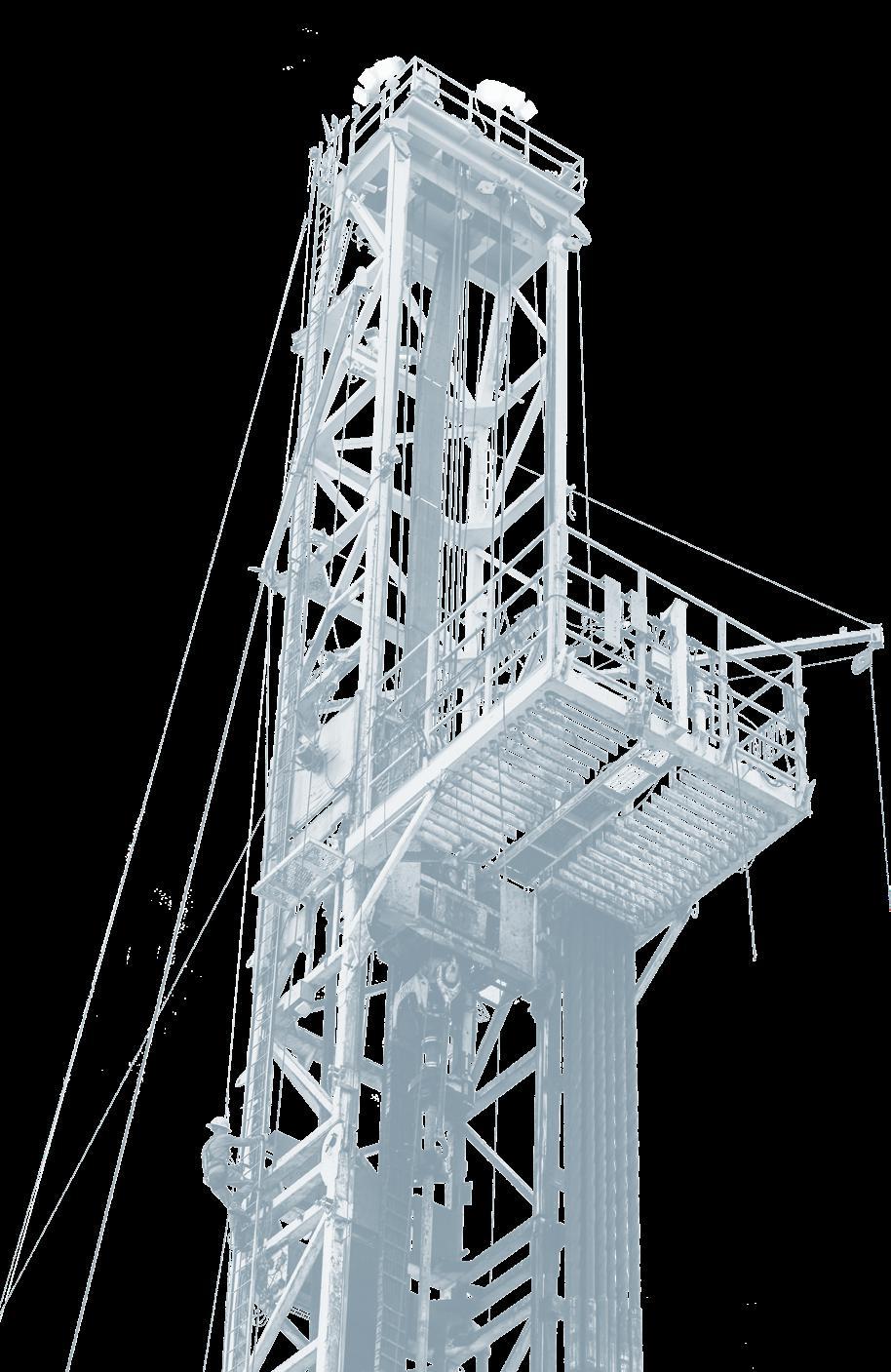
PURPOSE: Develop and implement technologies that build on existing programs to help automate, reduce, or change rig engines to improve efficiencies and reduce emissions. We continue to evaluate and implement technologies to aid in rig and engine efficiency.
PROGRESS: Implemented various new technologies on our rigs such as Engine Management.
PURPOSE: Elevated 2021 goal from annual to quarterly basis to help our employees recognize and manage climate risks in their day-to-day tasks, supporting our broader climate strategy.
PROGRESS: Achieved an 89% completion rate for environmental training. Notably, we are including updated environmental trainings in our 2023 environmental ACG key results specifically focused on GHG emissions.
As we continue to advance the management of power generation on our rigs, the EGT determined that continuing our normalized emissions reductions efforts remains a top priority for 2023. Utilizing new data and a better understanding of what impacts our emissions, we hope to execute on new key results that will continue our year-over-year trend of reduced normalized emissions.
Reduce the Amount of GHG Emissions per Drilled Distance by 1% with a reach goal of 2%.
Some of the key results that are part of our 2023 Environmental Actively C.A.R.E. goal include:
IMPLEMENT DRILLER’S SELECT ON 100 RIGS
PURPOSE: Driller’s Select allows our employees to remotely start and stop rig engines. This will allow our drillers to start and stop the engines based on current or anticipated operational requirements, helping to reduce excessive runtimes.
ACHIEVE 80% OF ACTIVE RIGS RUNNING BELOW 30% AVERAGE EXCESS ENGINE HOURS
PURPOSE: Reducing the amount of excess engine runtime is one of the greatest methods to reduce emissions that we can directly control.
ACHIEVE A COMPLETION RATE OF 98% FOR ASSIGNED GHG EMISSIONS TRAINING
PURPOSE: New specific training focused on the reduction of GHG emissions associated with our operations.
IMPROVE WINTERIZATION EMISSIONS MEASUREMENT CAPABILITIES AND BUILD WINTERIZATION ROADMAPS
PURPOSE: Focusing on the emissions associated with winterization equipment provides an opportunity to reduce emissions associated with equipment we directly control.
VALIDATE EMISSIONS AND FUEL DATA WITH EMPIRICAL TESTING
PURPOSE: Effort to confirm rig engine original equipment manufacturer emissions specifications with true exhausted emissions for greater transparency.
Demonstrated by our refreshed 2023 ACG, each year we will continue to identify and set new targets intended to help us reduce our overall environmental impact which is intrinsic in our values to go beyond “good enough” and strive for something better.
H&P recognizes the importance of managing our GHG emissions footprint. Our data and software capabilities allow H&P to monitor energy use during drilling and proactively identify real-time efficiency opportunities. We view rigorous data tracking and reporting as a tool to effectively monitor performance and develop future improvements. These efficiency improvements and access to data are included in new engine management product offerings to our customers to assist with mutually beneficial reductions in fuel consumption, which our customers generally provide, and lower emissions generation. Additionally, we have an increasing number of rigs powered by the generally more emissions efficient electrical grid, and we can utilize our data capabilities to specifically identify the reduction in emissions for those rigs.
Aligned with our fiscal years 2022 and 2021, Scope 1 and 2 emissions reporting, which received limited assurance from Ernst & Young, LLP, we have calculated our emissions utilizing an operational control approach in conformance with the Greenhouse Gas Protocol accounting standards (GHG Protocol) and derived emissions factors and global warming potentials from the Environmental Protection Agency (EPA). Through continued emissions data collection, calculation, and limited assurance engagements, we are inherently improving our approach to emissions reporting which is reflected in the emission figures reported herein.
Emissions from our equipment can also be counted by our customers. However, our operational control
approach counts emissions at the wellsite under our emissions inventory. We view this approach as one that provides better transparency to our stakeholders and signals our commitment to improving the sustainability of both our operations and our customers’ operations. Our solutions-based service offerings provide opportunities for customers to optimize the use of our rigs as part of their operations and reduce emissions.
Beyond our ongoing efficiency efforts highlighted later in this section, we provide our customers with options for alternative fuels and power sources that can mitigate environmental impacts. Specifically, we can often offer other energy sources besides diesel, including natural gas (dual fuel or natural gas engines) or electricity (highline or battery).
During 2022, we ran approximately 15 rigs on highline power which displaced roughly 5.8 million gallons of diesel fuel equivalent to 59 thousand metric tons of CO2e. Highline powered rigs during 2022 demonstrated a reduction in emissions of ~45% as compared to those running diesel.
There are benefits and drawbacks to using the various types of fuel configurations to power our rigs. For example, the use of natural gas can reduce regulated emissions such as nitrogen dioxide and sulfur dioxide; however, this same fuel type may increase GHG emissions from methane slippage, a problem resulting from varying load requirements and incomplete combustion of natural gas.
Specific case studies and spotlights of our solutions are outlined within our Customers section.
H&P continues to consider environmental and emissions efficiencies within our operations, whether direct emissions initiatives or byproducts of our broader business strategy. We have focused on emissions reduction strategies that include efforts we can control. Examples of these efforts include the reduction of excess rig engine runtime, reduction of fleet vehicle idle times, and overall engine management. H&P has also historically implemented strategies on drilling performance, ultimately improving rig efficiencies, and lowering associated emissions per kilometer drilled.
In fiscal year 2022, we sold our trucking business used to move rigs. This was a low margin, capital intensive, and high-risk business for the Company to retain. We now use third-party trucking services to move rigs to various customer well-site locations. As such, we reduced our cost and risk levels and decreased the share of scope 1 emissions coming from our owned and operated vehicles.
For similar reasons around the capital-intensive nature and higher-risk, H&P also reduced the number of vehicles owned by the Company that are provided for employee use and instead provides a monthly travel stipend for use of personal vehicles. We want to continue to encourage decreased travel where we can. H&P plans to capture business miles for some employees using an application that offers automated tracking and eliminates paper logs. Pool vehicles are also available for employees to use, which consolidates travel time and emissions.
We monitor emissions throughout the year and utilize data to track our progress. Through this process, we recognized reductions in various emissions sources from our rig inventory including onshore and offshore engines. In our Offshore Gulf of Mexico segment, we reduced our absolute emissions by 41% since 2018. Our North America Solutions (NAS) rig engine emissions normalized against distance drilled dropped by 22% since 2018.
Note: The emissions from our rig operations account for approximately 95% of the total emissions for our Company. These emissions are likely included in our customers’ Scope 1 calculations as well. In a vast majority of contracts, our customers provide the fuel needed to operate the rigs and thus include the emissions as a direct result of producing their hydrocarbon products.
Our energy consumption management strategy helps reduce energy consumption across our operations. Our efforts resulted in a 7.4% decline in total energy consumption normalized by drilling activity since 2020.
reportable onsite spills TOTAL ENERGY CONSUMPTION
2020
Much of our focus on energy consumption lies within achieving the key results of our Environmental ACGs. We also focus specifically on reduced energy consumption through engine power management systems, solar installations, and continued implementation of LED lights at our rigs. For example, in 2021, we installed solar panels at our Yopal, Colombia site. From September 2021 to September 2022, solar energy use increased by ~12K kWh PV, saving 3.6% in energy costs.
2.60 M 3 year-over-year improvement
or 0.00014 m3 per kilometer drilled
in fiscal year 2022
Spill management is a critical component of H&P’s environmental management strategy, and we maintain a preventative-focused approach intended to protect the ecosystems in which we operate. We work with our customers to implement stringent countermeasure mechanisms for any necessary impact reduction. Inspections of equipment such as hoses and process checklists for fluid transfer are two examples of our preventative approach.
Spill Prevention, Control, and Countermeasure Plans: SPCC plans are provided on every drilling site. Stormwater Pollution Prevention Plans are provided at any non-drilling facilities where it is required. These plans contain both proactive measures to prevent spills as well as measures to reduce environmental impacts if a spill does occur.
RESPONSE PRACTICES
Emergency Response Kits: Full emergency response kits are required on every rig site to address and mitigate the impacts of spills. These kits help keep contaminants from reaching waterways or other environmentally sensitive areas.

› Fluid containment – initially apply booms around spill area to prevent spread of fluid
› Fluid removal – vacuum trucks/on-sight vacuums are used to remove standing fluids
› Excavation – contaminated soil is removed, placed in open top containers, and disposed of at approved facilities with waste manifests
› Soil sampling – a baseline sample is taken outside of spill area and multiple samples are taken within the spill area to verify that all contaminated soil was removed
› Backfilling – excavated area is backfilled and groomed to return to pre-spill condition
Incident-based Learning: H&P conducts investigations of all serious spill incidents. Root causes are determined, and corrective actions are developed from these investigations. Corrective actions are tracked to completion in a database and investigation results are communicated to employees, focusing on lessons learned to prevent or mitigate future incidents.
In fiscal year 2022, 5,644 H&P employees completed Environmental and Emergency Response Trainings.7 This is a year- over- year increase in employees completing this training by 107%.
7 Average employee attendance is represented by average number of trainings completed for HAZCOM, HAZWOPER, SPCC, and Emergency Response Trainings. SPILLS NORMALIZED BY DRILLING ACTIVITY 0 0 0 0 0 m 3 per Kilometer Drilled FY 2021 FY 2022 0 0.00019 0.00014 2022 Spill Incident Rate: Only 0.04 Incidents per 200,000 Hours Worked Energy consumption for electricity and fuels derived from same methods used to calculate Scope 1 and 2 GHG emissions. H&P 2022 Sustainability Report 25 INTRODUCTION ENVIRONMENT SOCIAL GOVERNANCE APPENDIX
Employing waste management initiatives continues to play an integral part of H&P’s environmental strategy and we continue to look for ways to enhance our waste practices. We recognize the importance of properly disposing of general, hazardous, and toxic waste as well as reducing the total amount of waste generated. We educate our employees on the impact of our waste and how they can positively affect change with their behaviors. H&P works alongside its customers in the reduction and recycling of waste produced at our drilling sites. We maintain waste storage areas for chemicals and fluids, and receptacles are provided for general waste. Inspections are conducted to review that our waste management processes are being followed and are effective.
For H&P, recycling efforts are an important part of waste management. Recycling has provided us an opportunity to expand the lifespan of products, particularly lubricants & hydraulic fluids, while minimizing our total waste generated. We properly dispose of fluids, chemicals, and potentially hazardous waste through the use of contracted waste disposal experts. At our FlexRig Machinery Center, we invested in an environmentally friendly wastewater collection system where we dispose of wash bay waste.
Our Information Technology (IT) Service department works with a third party for pickup and destruction of IT and Rig Technology components. All devices with sensitive proprietary information are documented and we receive a certification of destruction for these items. If items can avoid destruction, we allow our third party to put them up for resale which avoids additional waste. This third party provides us with an environmental report that helps us track our emissions savings and recycling using this service.
We also encourage employees to recycle through corporate reuse initiatives. For instance, there are cardboard recycling bins on the loading docks and recycling bins in service areas for materials such as plastic, paper, and glass.
Some of our waste management and recycling practices include:
Lubricants & Hydraulic Fluids – Utilize various filtration technologies which expand the lifespan of products by reclaiming hydraulic fluid and lubricants.
Steel – Contract with local scrap dealers to cut-up and recycle excess steel from rig upgrades and repairs or when we scrap decommissioned rigs.
E-Waste – Contract with specialized outside vendors to collect and dispose of e-waste in our corporate and field locations.
Thoroughly clean rigs of drilling fluids or oil-based drilling muds after drilling completion and prior to moving to the rig yard or new well site.
Hazardous Waste – We inspect our parts and equipment to minimize the use of potentially hazardous material and strive to not use any products that contain materials such as lead and asbestos.
If we need to dispose of hazardous waste, we hire specialized remediation companies to handle and remove the waste.
At H&P, we recognize the critical nature of water as a global resource, and the important role of the oil and gas value chain in responsible water management. Since water use is largely controlled by our customers at well sites, our ability to manage and oversee its use is limited. Our role in the use of water at well sites is as follows:
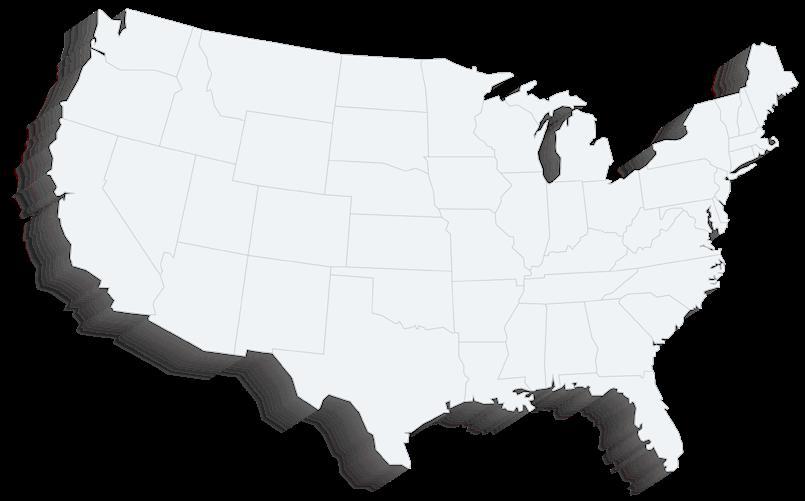
› Customers supply water for our freshwater tanks that we use for cleaning, drilling fluids, and other general needs.
› H&P typically provides tanks used to house drilling fluids that can utilize freshwater as a base. We work with our customers to monitor, measure, and maintain the drilling fluids.
› We facilitate the removal of fluids through customer and third-party supplied means.
Despite our limited role in controlling water use at well sites, H&P is committed to helping customers find solutions to reduce water use, and we work directly with our customers on an ongoing basis to meet their environmental goals. Additionally, we train our employees to properly handle water for customers and support their independent water management initiatives where possible.
Oversight of biodiversity initiatives largely falls within the purview of our customers in the areas in which we operate. However, H&P recognizes that biodiversity protection is a critical environmental issue, and we continue to support biodiversity efforts across our customers’ operations.
For instance, H&P’s drilling technologies inherently help provide environmental footprint reduction. By continued investment in mechanical and digital technologies, we improved our drilling efficiency while helping our customers produce more energy with less impact on the land. The technological efficiency of our products, services, and overall operations helps reduce the direct impact on local habitats and communities by having a smaller overall environmental footprint, reduced infrastructure at well sites, and a reduction of the number of people required per site.
One of the purposes behind H&P’s FlexRig design was to create a rig that was highly mobile, compact and fast-moving, which helps to reduce each well site’s footprint compared to conventional rigs. Our FlexRig fleet was designed to move without cranes, which helps to limit the number of loads on the road; thus, reducing the related costs, safety risks, and environmental impacts. Additionally, our FlexRig fleet is pad-capable, which has further assisted our customers in improving well economics while at the same time reducing the biodiversity impacts on the land and surrounding areas. Pad-capable rigs allow for the drilling of multiple wells on a single well-site location, even those with existing wellheads and production, thereby reducing the costs and the need to disturb land for new well locations.
Our customer-centric approach helps customers meet their goals, including those customers that want to reduce noise pollution during drilling operations. We have worked with various customers to help reduce noise and have tested noise levels on our rigs to help identify pieces of equipment that could benefit from efforts to reduce the overall noise generated. For example, we have worked with our customers to install noise reduction equipment such as engine mufflers and walls, and also identified the overall reduction of noise throughout the drilling location from running highline electrical power versus diesel engines.
We have reduced noise by ~28% in select areas on the rig by implementing highline electrical power.
President and CEO, John Lindsay, is on the Nature Conservancy Board of Directors, Oklahoma Chapter.
We recognize the important role supporting biodiversity and natural resource philanthropies plays in reinforcing the health of the environment and in our communities.
As such, H&P commits philanthropic efforts towards organizations like the Nature Conservancy. As a Corporate Conservator, our contributions help fund the Nature Conservancy’s work to “conserve the lands and waters on which all life depends.” Additionally, we contribute to Global Gardens which uses gardening to teach science and promote peace education in local schools and communities.
We are committed to enacting positive change within our own operations and throughout the oil and gas value chain for our stakeholders, the communities in which we operate, and future generations to come.
› Board of Directors: Provides oversight of corporate sustainability including climate-related matters.
› Audit Committee: Provides oversight with respect to risk assessment and management, including business risk exposures and climate-related risks.
While we are focused on mitigating our own impacts and supporting our customers’ sustainability goals, we recognize the prudency to also measure the impact of climate change on our business. This combined approach demonstrates our continued ability to develop, implement, and review strategies intended to produce positive outcomes for both our business and the planet.
In our inaugural Sustainability Report published last year, we highlighted our environmental reporting and target setting practices, identified the climate-related
risks and opportunities relevant to our business, and outlined Board and management oversight of climatespecific considerations.
Building upon these efforts, we executed a quantitative scenario analysis during fiscal year 2022, which has facilitated our consideration of climaterelated risks and opportunities across various time horizons. To summarize our efforts and provide further transparency for H&P’s stakeholders, our disclosures in this report utilize the recommendations outlined by the TCFD.
Similar to our broader sustainability oversight and management, we employ a comprehensive approach to climate change, which is overseen at the Board level and with Board specific committees addressing topics relevant to their duties.
We also practice cross-functional oversight of climate change through a variety of relevant teams, specialists, and functional leads, as depicted in the table below.
› Human Resources Committee: Provides oversight and evaluation of compensation and compensation plans of the Company’s executive officers, including performance compensation that includes certain sustainability goals related to the environment.
› Nominating and Corporate Governance Committee: Nominates candidates to the Board with knowledge, experience, skills, and expertise to enhance the Board’s ability to act as a fiduciary to the Company and its shareholders.
› Executive Leadership Team (ELT): The ELT manages all sustainability matters and provides climate-related updates to the Board and its committees on a quarterly basis.
› ESG Governance Committee: Cross-functional, high-level leaders who manage the EGT, environmental specialist, corporate sustainability lead, and other sustainability matters.
› Enterprise Risk Management Team (ERM): Supports Board-level risk management initiatives including those related to climate.
› Environmental Specialist: Plays an active role in H&P’s environmental management and directly leads the EGT.
› Corporate Sustainability Principal: Cross-functionally coordinates sustainability efforts including climate across the organization.
› Environmental Management Operational Oversight Teams: The teams directly responsible for H&P’s environmental management including HSE, CST, IMT, and SERTs.
› Environmental Governance Team (EGT): Manages climate and environmental risks through data collection and strategy enhancements including setting companywide yearly environmental targets and objectives.

Sustainability matters have been a longstanding discussion item at the Board level. The Board believes that climate change and related oversight of risks and opportunities are a corporate priority and are regularly reviewed and assessed by the entire Board with input from management. The Board receives a report on sustainability matters at least quarterly.
While the Board has ultimate oversight of climate matters, its committees oversee certain matters related to climate relevant to their duties, which are summarized below:
Audit Committee
1. Regularly reviews significant financial and other business risk exposures including those related to climate.
2. Oversees management’s monitoring and internal controls on climate-related metrics.
3. Provides oversight into the external limited assurance engagement for sustainability metrics including GHG emissions.
Nominating and Corporate Governance Committee
4. Reviews Board composition and implements necessary measures to have the Board reflect proper climate experience and expertise.
Human Resources Committee
5. Establishes the executive compensation program, including setting and evaluating the extent to which environmental performance targets in that program are achieved.
Performance objectives were directly tied to Environmental Actively C.A.R.E. Goals as we seek to reduce our environmental footprint and generate sustainable value for our stakeholders.
Our senior management provides direct input to the Board on H&P’s processes to monitor, control, and report climate risk exposures. As such, senior management cross-functionally leads the implementation of corporate climate strategy, practices, initiatives, and policies.
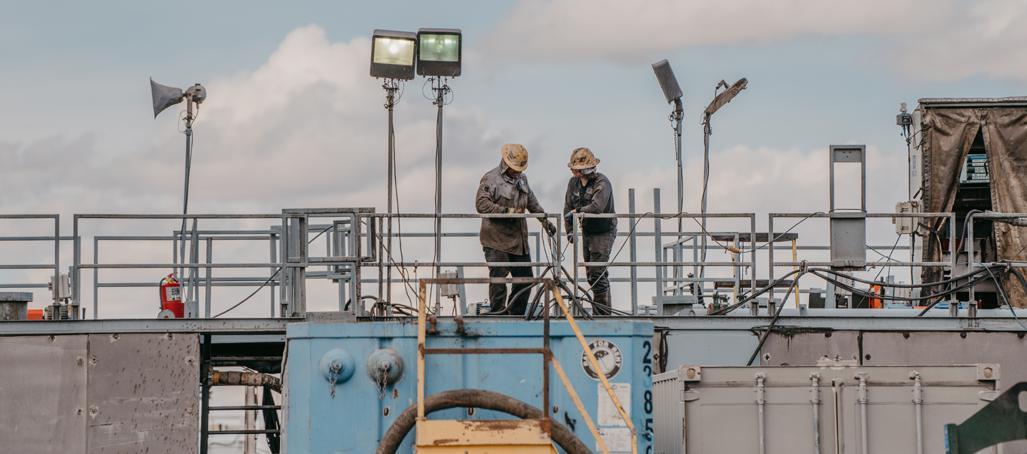
Each member of H&P’s ELT provides direct climate oversight and management as it relates to their operational duties. Specifically, H&P’s chief executive officer provides overall sustainability oversight through the development of Company strategy and manages our executive team who perform day-today management of sustainability matters, including environment and climate. Our senior vice presidents
(SVPs) help develop, manage, and work directly with the teams executing individual sustainability strategies such as safety, climate, environmental management, and Diversity, Equity, and Inclusion (DE&I) strategies. They also work cross-functionally together to help align each department’s efforts with the overall strategy.
H&P’s senior management team is supported by the efforts of those who directly operationalize H&P’s climate strategy, including but not limited to H&P’s ESG Governance Committee, environmental specialist, ERM team, and corporate sustainability principal. Additionally, there are a variety of environmental oversight teams, as outlined in the Environmental Management section, who provide further support, such as the HSE team.
SVP - US Land Operations
Provides direct oversight of H&P’s HSE functions and the development of our HSE strategies, goals, and practices
SVP - International and Offshore Operations
Provides direct oversight of international and offshore HSE functions and execution of environmental and safety strategies
SVP - Corporate Services and Chief Legal and Compliance Officer
Provides direct oversight of legal, environmental compliance, and other climate related corporate service functions
SVP - Information Technology and Engineering
Provides direct oversight of cybersecurity risk and mitigation strategies, climate data management, and engineering functions
SVP - Digital Operations, Sales, & Marketing
Provides direct oversight of digital operations, product management, marketing, and sales teams
SVP - Chief Financial Officer
Provides direct oversight of Enterprise Risk Program and corporate sustainability functions

H&P’s risk management functions are directly overseen by the Board and its committees. Management communicates any significant risk information including those related to climate directly to the Board and its committees on at least a quarterly basis.
Our enterprise risk management program is designed to identify significant risks. The Risk Management and Insurance Department oversees program implementation, which involves identifying and monitoring risks to the Company, assessing the Company’s risk mitigation plans, and consulting on further measures that can be taken to address new and existing risks. As such, the director of risk management and insurance reports to the Audit Committee and the full Board quarterly. The Audit Committee also reviews and works with management on risk assessment and management processes and policies which includes the Company’s enterprise risk management program.
During each regular meeting, the Board reviews potential future risk factors and receives a report on the Company’s most significant risks. In addition, the Board receives information from management concerning operations, safety, legal, regulatory, insurance, finance, strategy, environmental, social, and governance matters.
The Audit Committee plays a significant role in the oversight of risks, including those related to environmental and climate considerations. Beyond functional Board ERM oversight, H&P has dedicated management and operational teams which address climate risks, such as the Crisis Management Team (CMT) which oversees the response to significant environmental events or crises. All of H&P’s environmental teams and individuals provide direct and indirect support of the identification and mitigation of climate risks, through the purview of their day-to-day operations.
In 2021, the Board oversaw the review of climate-related risks and opportunities, leveraging internal stakeholder feedback from members across the organization, including those who directly oversee environmental management.
The climate-related risks and opportunities we have identified below underpin our climate strategy and quantitative scenario analysis discussed later in this report.
H&P’s ability to adapt its operations to support the shift to a low-carbon economy. Additionally, this risk includes the evolving perception of the industry due to the climate change dialogue and the financial risks to the organization associated with climate-related impacts.
Risks that arise from the constantly changing environmental regulatory landscape causing public and private sector perception to shift and possible limitations to capital access in forms of investment or lending.
The operational footprint and incident risk and/or occurrence can significantly impact the Company and increase perceived and realized risk exposure and reputational harm.
The Company’s exposure to and management of climate-related physical risks, such as inclement weather, could impact its ability to operate.
Any commercial activities in which the Company partakes including potential or realized investments and business ventures in alternative energy businesses.
Efforts taken to improve operational efficiency that benefits cost reduction and minimizes environmental impact.
The amount of money, time, and resources invested into developing increased efficiency and alternative technologies, which may drive revenue and H&P’s sustainable product offering.
Supporting Business Partners and Customers in Meeting Environmental Sustainability Goals
The ability of the Company’s current and future drilling solutions to support business partners and customers’ environmental sustainability goals through increased operational efficiency and continued innovation.
World demand for energy is projected to increase 47% by 2050 over 2020 demand. The U.S. Energy Information Administration projects that in 2050, natural gas and oil will supply nearly 50 percent of the world’s energy compared to 54 percent in 2020.
We believe global well-being is improved through efficient and responsible energy. Our values and the H&P Way drive our mission to provide performance drilling solutions which are safer, provide industry leading efficiency and economies of scale, and reduce environmental impact within our own operations, our customers, and across the value chain.
As a global drilling solutions provider our success is driven by H&P’s winning strategy:
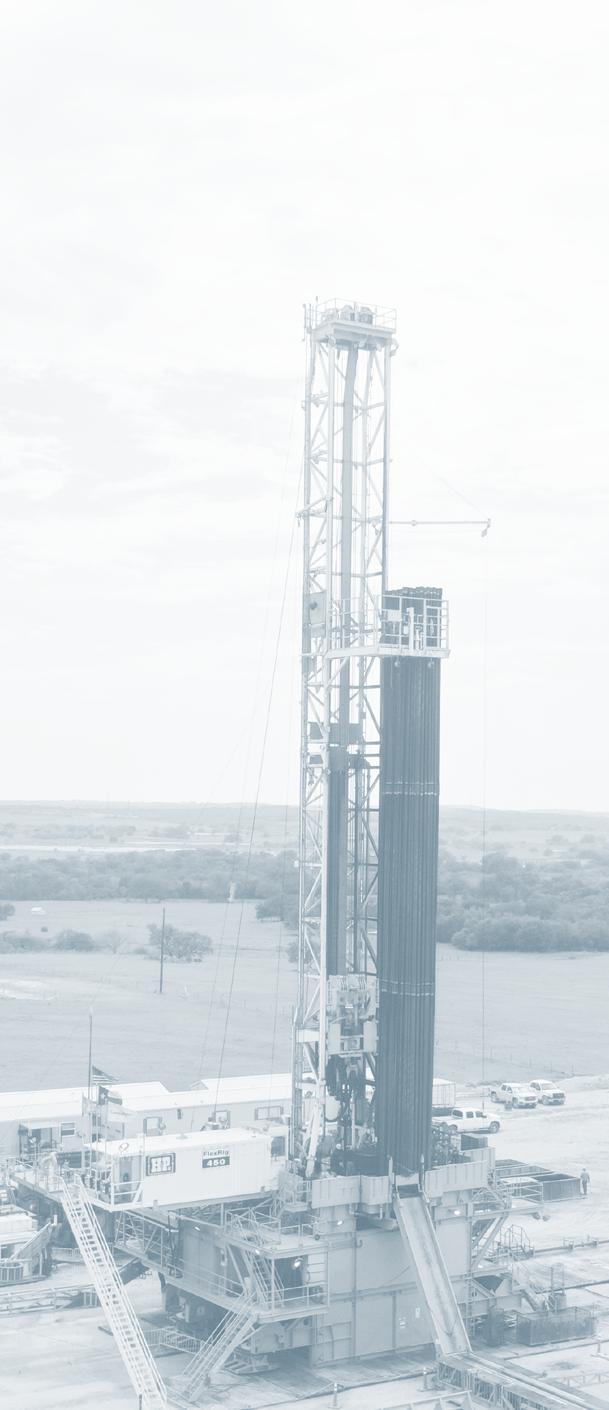
› Evolve commercial model to be customer centered and value driven
› Continue to lead industry in technology automation adoption and differentiation
› International expansion
› Maintain capital discipline
› Continued focus on cost management
› Adapt to changing market conditions and maintain solid financial foundation
Looking toward the future, we believe our strategy and corporate tenets position us to pursue our longterm plans through changing market conditions and the transition to a low-carbon economy. While world energy demand is predicted to increase 47% by 2050, we recognize that the transition to a low-carbon economy could have negative implications for our customers’ operations and across the value chain.
Although the timing of such impacts cannot be precisely determined, we recognize the prudency to perform forward-looking scenario analyses on the likelihood and magnitude of impacts related to climate change and the associated physical and transition risks and opportunities. Such analyses provide our business with the fundamental information necessary to execute our sustainability and climate strategies in a manner that best mitigates future risks and positions H&P to capitalize on available opportunities.
During the fiscal year 2022, as a way of testing its business’ resiliency H&P performed a quantitative scenario analysis (QSA) leveraging the TCFD’s recommendations and third-party scenario data.
In order to quantify and provide substance to the climate-related risks and opportunities identified we used climate scenario analysis to test them and the resiliency of our business. We performed such an analysis in 2022 with the intention to perform it again in subsequent years as part of our overall strategic process. As part of this analysis, we developed a climate scenario-based model that was created independently of our existing strategic planning process. The analysis was conducted separately and independently as it was based on third-party climate scenarios and our desire to avoid introducing pre-existing strategic bias into the analysis. The results of the climate scenario analysis are ultimately considered as part of our strategy setting process. This separate analysis tested the resiliency of our strategy, not only from a financial perspective but also from a climate-related perspective.
As part of this QSA process, we considered a number of scenarios across three leading independent organizations: 1) International Energy Agency (IEA); 2) Intergovernmental Panel on Climate Change (IPCC); and 3) Network for Greening the Financial System (NGFS). Our scenario selection assessment focused on the key outputs of each scenario and the applicability of the scenarios most relevant to our business and industry.
We found that the scenarios provided by the IEA’s 2021 World Energy Outlook (WEO) provided us with the most insightful and actionable information to execute our analysis given the focus on energy market supply, demand, and pricing.
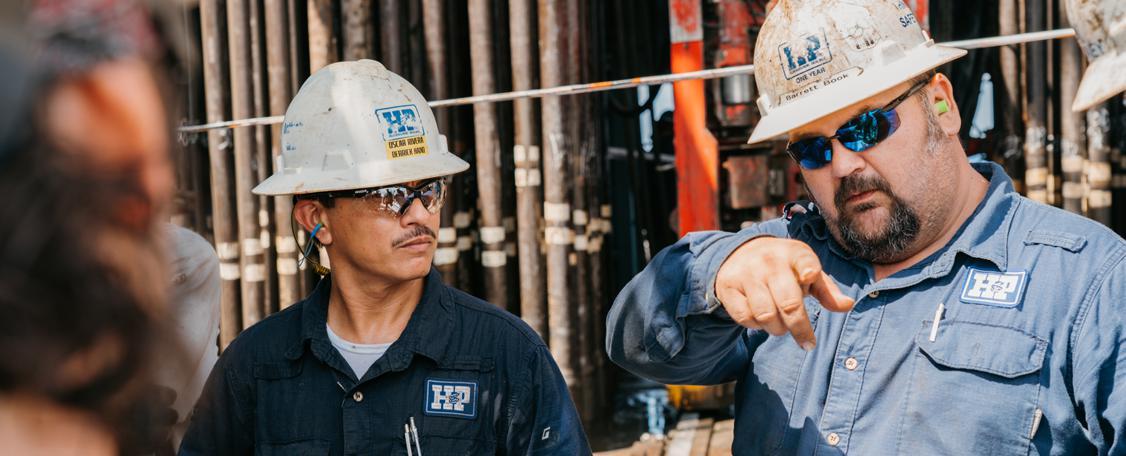
Specifically, the WEO provides four core scenarios each with their own respective policy considerations:
The STEPS scenario demonstrates current policy settings from sector analysis of current enacted policies, and future policies that are being created by governments. It assumes that governments will not reach all announced goals.
Announced Pledges Scenario (APS)
Scenario indicates all climate targets made by governments, including nationally determined contributions and longer-term net-zero targets, will be made. The APS scenario outlines society’s intention to address climate change.
In this scenario, energy-related United Nations Sustainable Development Goals (SDGs) are reached globally. SDGs aim to ensure universal access to clean energy systems that bolster strong economies, which align with achieving outcomes targeted in the 2015 Paris Agreement of a “well below 2°C” temperature rise.
The NZE establishes a strict yet feasible path to reinvent the global energy sector. The priority of this scenario is to create an energy economy that is predominantly powered by renewable sources rather than fossil fuels. To achieve net-zero CO2 emissions, this scenario does not rely on external sectors outside of energy but assumes that non-energy emissions will be reduced in the same proportion as energy emissions.
GtC0 2
40 35 30 25 20 15 10 0
5
STEPS SDS NZE 2010 2020 2020 2040 2050 2030
International Energy Agency (2021), World Energy Outlook 2021, IEA, Paris
Based on IEA data from IEA (2021) [WEO 2021], IEA (2021), www.iea.org/statistics, All rights reserved; as modified by Helmerich & Payne.
Note: STEPS = Stated Policies Scenario APS = Announced Pledges Scenario; SDS = Sustainable Development Scenario; NZE = Net Zero Emissions by 2050 Scenario.
APS
Key Point: The APS pushes emissions down, but not until after 2030; the SDS goes further and faster to be aligned with the Paris Agreement; the NZE delivers net zero emissions by 2050
International Energy Agency (2021), World Energy Outlook 2021, IEA, Paris
Based on IEA data from IEA (2021) [WEO 2021], IEA (2021), www.iea.org/statistics, All rights reserved; as modified by Helmerich & Payne.
Note: STEPS = Stated Policies Scenario APS = Announced Pledges Scenario; SDS = Sustainable Development Scenario; NZE = Net Zero Emissions by 2050 Scenario.
Key Point: The APS pushes emissions down, but not until after 2030; the SDS goes further and faster to be aligned with the Paris Agreement; the NZE delivers net zero emissions by 2050
Of the four WEO scenarios provided above, we chose to model against the STEPS and SDS scenarios to define and provide an insightful range of outputs against different scenario assumptions.
The charts below display select scenario historical and forward-looking data for the STEPS and SDS, as provided by the WEO, for U.S. oil production and Brent crude oil prices as well as U.S. natural gas production and price projections.
STEP 1
U.S. Oil and Gas Production and
We applied the WEO pricing and production scenarios to an internally developed model analysis.
H&P Forecasted Share of Rigs and Revenues H&P-specific assumptions necessary to execute the analysis were defined and we determined forwardlooking H&P rig count ranges based on historical trends and the selected STEPS and SDS scenarios.
The team then reviewed and compared models to existing financial planning models based on the scenario analysis.
STEP 4 Review of Strategy
Lastly, we stress-tested current strategy and resilience against STEPS and SDS scenario outputs as well as considering the financial implications of those outputs.
Ultimately, the assumptions within the above analysis process include both the assumptions inherent to the WEO scenarios and the H&P-specific assumptions necessary to execute the analysis. Notably, the WEO scenarios include assumptions across a variety of parameters including but not limited to, global gross domestic product and population, fuel and CO2 prices, and predicted policies.
H&P-specific assumptions are derived from the perspective of the post-pandemic era and are based on the actions of customers and the industry during the timeframe the analysis was performed. These include assumptions across H&P’s market share, trends and ratios of rig count and other inputs to production, customer behavior, H&P financial statement metrics, and exclusion of indeterminable macro events.
As part of our approach, we compared our QSA, which leveraged WEO’s STEPS and SDS scenarios to those scenarios we contemplated internally as part of our strategic planning. Ultimately, our QSA yielded output – STEPS on the high-end and SDS on the low-end –fell within the ranges we considered as part of our strategic planning. Consequently, the results of the comparison did not prompt any necessary deviations in our current strategy. While our quantitative climate scenario analysis focused predominantly on the neartime horizons over the next five years, it also considers further medium- and long-term scenario projections which ultimately underpin our approach to our energy transition investments such as our investments in geothermal companies and their related technologies.
Following the completion of the climate scenario analysis, our ELT reviewed the comparison of the output of climate scenario analysis, inclusive of the STEPS and SDS scenarios, to the output of the Company’s strategic planning and noted no change was necessary in the current business strategy. In connection with its oversight duties, the Board also reviewed a summary of the climate scenario analysis in relation to the current business strategy.
We believe we have a robust internal strategic process that supports the Company’s long-term financial sustainability. As part of the quantitative climate scenario analysis, we stress tested our current business and strategy with climate scenario analyses, including more stringent scenarios such as the WEO’s SDS scenario. This stress-testing did not result in changes to our current strategy.
Following the selection of the two WEO scenarios, which represented high-end and low-end possible outcomes, we established a comparison process to properly assess the implications of each bookend scenario to our business.
Through extrapolating the STEPS and SDS scenario data, we followed a multi-step analysis process outlined in the next section and compared the outputs of the scenarios to the outputs from our strategic planning process in order to ascertain the plausible impacts of a transition to a low-carbon economy on our business.
As our H&P-specific assumptions are subject to year-over-year adjustments per market events and operational changes and as the WEO updates its scenarios annually, we are committed to refreshing our analysis on an annual basis. This climate scenario analysis will serve as an input into our existing strategy setting and review processes.
While the purpose of the scenario analysis is to test our business’ resiliency, we also recognize the importance of using the analysis and our broader climate and sustainability strategies to mitigate climate-related risks and capitalize on opportunities.
Sustainability has long been a part of H&P’s broader business strategy. Therefore, enacting mitigation strategies to address identified risks, including climate-related ones, is inherent to how we approach our business. Specific to our identified climate-related risks we have provided an outline of each risk, the corresponding potential financial impacts and examples of H&P’s strategies that may assist in mitigation.
Increased direct costs
Increased indirect (operating) costs
Decreased access to capital
1) Our Environmental Actively C.A.R.E. Goals and key results and associated attainment strategies demonstrate our commitment to continued environmental impact improvement.
2) Our corporate strategy and objectives incorporate and support our sustainability program.
Transition to a Low-Carbon Economy
Increased capital expenditures
Increased credit risk
Decreased revenue due to reduced demand for products and services
3) Proactive corporate planning and strategy setting and financial modeling underpin mitigation of future risks including those related to climate.
4) The recently executed climate quantitative scenario analysis allows H&P to regularly assess the scenario implications for our climate and business strategies as well as provide our stakeholders with relevant disclosures via our annual Sustainability Reports.
5) Commercial investments into low-carbon and energy transition companies as outlined in the climate-related opportunities section.
Increased direct costs
2022 Sustainability Report: - Sustainability Oversight Section - Environmental Management Section - Risk Management Section - Customers Corporate Webpages: - 2022 10-K - 2021 Proxy - Corporate Governance Information - Drilling Outcomes - Drilling Automation - Technologies
Increased indirect (operating) costs
1) H&P’s EMS mitigates our operational and incident-based risk through reporting and enacting oversight and response mechanisms to incident-based risks.
2) Our Environmental Actively C.A.R.E. Goals and key results and associated attainment strategies demonstrate our commitment to continued environmental impact improvement.
2022 Sustainability Report:
- Sustainability Oversight Section
Decreased asset value or asset useful life leading to write-offs, asset impairment or early retirement of existing assets
Increased direct costs
6) Our efficiency driven drilling outcomes position H&P to provide environmentally prudent drilling to customers through the transition to a low-carbon economy.

1) Our environmental management strategy and Actively C.A.R.E. Goals and key results inherently continue to reduce our operational footprint.
Previous Sustainability Report: - 2021 Sustainability Report
Operational and Incident-Based Risks
Increased credit risk
Increased insurance claims liability
Decreased revenue due to reduced demand for products and services
3) Our EMS and strict approach to policies and compliance for our Company and employees allow H&P to continue to meet our environmental stewardship expectations. Examples include our HSE Policy and SPCC Plans. We are also committed to attaining our ISO 14001 certification in the near-term.
4) Our environmental employee trainings impart formalized practices and a culture of stewardship to reduce environmental exposures.
5) We continue to explore new technological advancements to improve the efficiency and environmental impact of our products and services as well as decrease exposure to incident risks (for example, human error).
- Environmental Management Section - Risk Management Section - Customers - Performance Data Corporate Webpages: - 2022 10-K - 2021 Proxy - Corporate Governance Information - Drilling Outcomes - Drilling Automation - Technologies
Previous Sustainability Report: - 2021 Sustainability Report
Increased direct costs
Increased capital expenditures
Decreased revenue due to reduced demand for products and services
2) Our sustainability program is included within the objectives of our corporate strategy which includes efforts to monitor and/or improve upon current and potential regulatory requirements.
3) The Company takes the regulatory environment into account and adjusts its financial planning modeling accordingly.
4) H&P’s balance sheet strength and conservative capital structure naturally hedge the Company against regulatory driven business impacts.
5) Our quantitative climate scenario analysis which refers to future WEO policy scenarios from the IEA allows us to plan for, test our resiliency, and strategize against different regulatory situations.
2022 Sustainability Report: - Sustainability Oversight Section - Environmental Management Section - Risk Management Section - Customers
Corporate Webpages: - 2022 10-K - 2021 Proxy - Corporate Governance Information
Previous Sustainability Report: - 2021 Sustainability Report
Other Documents: - Investor Presentation
Decreased access to capital
6) The Company’s proactive and stringent approach to governance and oversight
Increased indirect (operating) costs
Increased capital expenditures
Increased insurance claims liability
Decreased revenues due to reduced production capacity
Decreased asset value or asset useful life leading to write-offs, asset impairment or early retirement of existing assets
1) Our inclement weather strategies and emergency preparedness processes and teams directly mitigate the physical risks which could face our organization.
2) Our EMS including robust employee training, prepares our workforce and Company to properly respond to acute physical risks.
3) Our Environmental Actively C.A.R.E. Goals and key results support the transition to a low-carbon economy which may reduce the likelihood of future physical risks.
4) We seek to maintain adequate levels of insurance to mitigate against potential financial losses
2022 Sustainability Report:
- Sustainability Oversight Section
- Environmental Management Section - Risk Management Section
Corporate Webpages: - 2022 10-K - 2021 Proxy
- Corporate Governance Information
Previous Sustainability Report: - 2021 Sustainability Report
Climate change presents risks and challenges for society, our industry and H&P, but it also presents new opportunities. We have outlined identified climate-related opportunities and their corresponding potential financial impacts and examples of H&P’s strategies that may assist in taking advantage of the opportunities.
Increased revenues resulting from increased demand for products and services
Increased revenues through access to new and emerging markets
1) H&P Corporate Ventures, LLC was established in 2019 to focus on the longer-term horizon strategies.
CommercialVenture New Energies Businesses
Increased access to capital
2) H&P focuses on increasing investment into new and lower carbon intensive sources of energy, including geothermal and natural gas as outlined in the Commercial-Venture New Energies Investments section.
3) We utilize our existing knowledge and drilling expertise to collaborate and provide drilling solutions directly to our investments as well as broader transition energy companies.

2022 Sustainability Report: - Environmental Management Section - Customers
Corporate Webpages: - 2022 10-K - 2021 Proxy - Corporate Governance Information - Drilling Outcomes - Drilling Automation - Technologies
Increased revenues through access to new and emerging markets
Increased diversification of financial assets
Returns on investment in low-emission technology
4) We are also investing in lower carbon intensive energy technologies that can be levered across the value chain such as liquified natural gas and continue to build our relationships in the alternative energy space.
Reduced direct costs 1) We have a proactive focus on driving forward efficiency improvements, including engine power management, rig automation, and integrating software advancements.
Reduced indirect (operating) costs
Operational Efficiency Improvements
Increased revenues resulting from increased production capacity
2) Our environmental reporting demonstrates our awareness of our current environmental footprint such that we can implement improvement strategies for our operations and our customers.
Previous Sustainability Report: - 2021 Sustainability Report
Other Documents: - Investor Presentation
Increased access to capital
3) Environmental Actively C.A.R.E. Goals, key results, and reduction strategies demonstrate our efforts in environmental improvement, efficiency enhancements, and supporting our customers’ environmental footprints.
Returns on investment in low-emission technology
4) Our commitment to innovation exemplified through our FlexRig® Fleet and technological solutions supports overall efficiency and decreased environmental footprints (such as, reduced emissions) for our customers.
2022 Sustainability Report: - Environmental Management Section - Customers
Corporate Webpages: - 2022 10-K - 2021 Proxy - Corporate Governance Information - Drilling Outcomes - Drilling Automation - Technologies
Previous Sustainability Report: - 2021 Sustainability Report
Other Documents: - Investor Presentation
Supporting
Increased revenues resulting from increased production capacity Returns on investment in low-emission technology
1) We invest in our expertise to continue to be the industry-leading innovator, exemplified by our FlexRig® Fleet and technological solutions.
2) We continue to allocate capital toward research and development, which supports the execution of both our sustainability and overall business strategies.
3) H&P also spearheads innovation and automation within the industry to improve our customers efficiency and accuracy.
4) We acquire companies to help drive innovation.
2022 Sustainability Report: - Environmental Management Section - Customers
Corporate Webpages: - 2022 10-K - 2021 Proxy - Corporate Governance Information - Drilling Outcomes - Drilling Automation - Technologies
Previous Sustainability Report: - 2021 Sustainability Report
Other Documents: - Investor Presentation
Increased revenues resulting from increased demand for products and services
Reduced direct costs Reduced indirect (operating) costs
1) Our customer-centric approach and valuedriven and performance-based model helps support sustainable outcomes for our customers.
2) We offer customers solutions to improve their sustainability positions and to help attain their ESG commitments. These efforts and partnerships have helped us increase the number of rigs on highline power to around 9% in NAS and increase the alternative energy opportunities for use by our customers.
3) We leverage our own Actively C.A.R.E. Goals to inherently move forward customer ESG efforts and commitments.
2022 Sustainability Report: - Environmental Management Section - Customers Corporate Webpages: - 2022 10-K - 2021 Proxy - Corporate Governance Information - Drilling Outcomes - Drilling Automation - Technologies
Increased access to capital
Returns on investment in low-emission technology
4) Our continued innovation provides customers with sustainable solutions.
Previous Sustainability Report: - 2021 Sustainability Report
Other Documents: - Investor Presentation
H&P continues to explore existing and new investments outside the traditional drilling space. We possess the direct expertise and assets that we believe could be utilized to capitalize on investments related to other sources of energy.
Geothermal technologies are particularly promising because it utilizes our existing rig assets and drilling expertise while targeting an alternative energy source with great potential. Specific expertise includes our autonomous drilling and digital technology, which delivers wellbore quality and placement required by modern geothermal drilling applications.
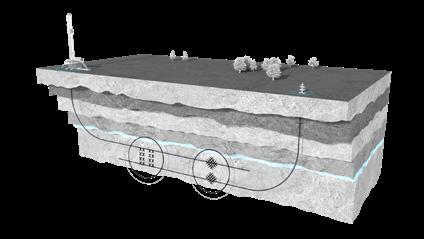
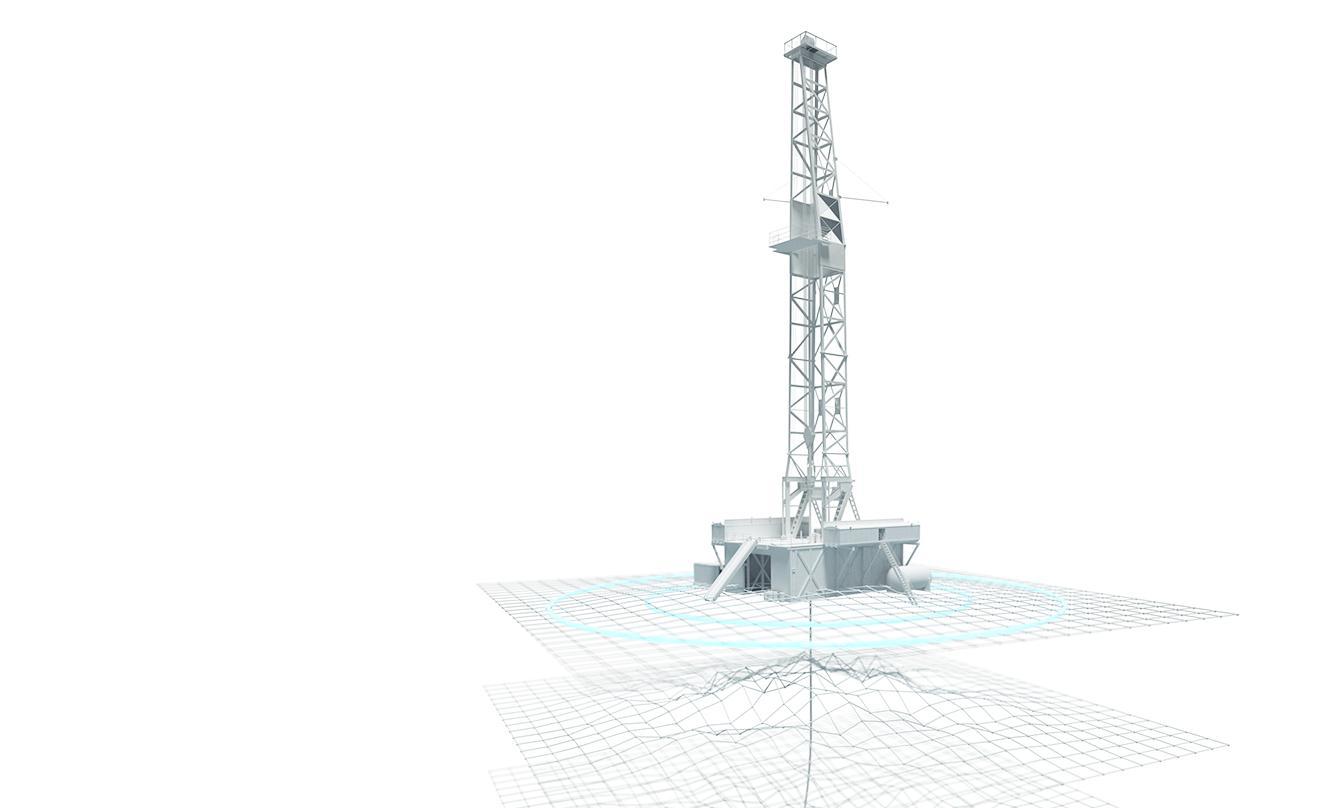
We have continued to invest in unconventional geothermal companies that are targeting the ambitious goal of affordable, reliable, and clean 24/7 on-demand energy on a global scale, in short – “geothermal anywhere.”
To achieve the goal of “geothermal anywhere,” we are strategically partnering with companies developing Closed-Loop Systems and Enhanced Geothermal Systems (EGS):
In Closed-Loop Systems, sealed pipe systems are placed in hot rock to extract geothermal heat without the necessity for the working fluid to make direct contact with the formation.
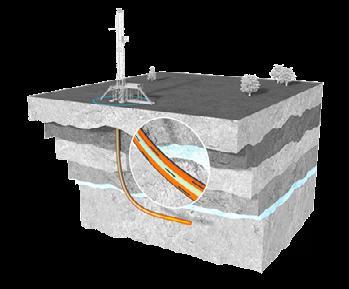
Company Overview H&P Drilled Project
Investment in Eavor
H&P also provided the drilling services and technologies in New Mexico for Eavor-Deep, the deepest and hottest multilateral geothermal well in existence.
✓ Yes
Investment in Geothermic Solution, LLC ✘ No
Investment in Greenfire Energy ✘ No
In EGS, permeability and working fluid are introduced in a wide variety of geologic settings to create geothermal reservoirs from which geothermal heat is extracted.
Company Overview H&P Drilled Project
Investment in Fervo Energy
Provided drilling services and technologies in Nevada for the project, which contained the first two horizontal geothermal wells in the U.S. ✓ Yes
Investment in Geothermal Technologies, Inc. ✘ No
In April of 2022, H&P invested $33 million in Galileo Technologies (Galileo), a company that deploys technology to capture natural gas from any source and convert it into liquefied natural gas (LNG) on site. Galileo specializes in the liquification, natural gas compression, and re-gasification modular systems and technologies to make the production, transportation, and consumption of natural gas, biomethane and hydrogen more economically viable.
In September of 2022, H&P invested $14 million in Tamboran Resources, the largest acreage holder in the Northern Territory of Australia. Tamboran aims to support the transition to a low-carbon economy through the development of low-CO2 natural gas resources in the Beetaloo sub-basin. Beyond its investment, H&P will provide its drilling solutions to Tamboran’s Beetaloo sub-basin site.
We continue to demonstrate transparency and a commitment to improving our operational footprint through proactive data tracking and environmental footprint reporting. This is communicated in detail in our Performance Data tables which include our environmental impact metrics.
Additionally, our commitment towards continued improvement is demonstrated by our efforts and successes around the 2022 Environmental Actively C.A.R.E. Goals and key results. H&P’s updated 2023 Environmental Actively C.A.R.E. Goals and key results, illustrates our continued commitment to progress. Specifics are included within our Environmental Management section and Performance Data tables.

We take pride in our reputation as a trusted drilling partner for customers in the oil and gas industry. Ultimately, our customers control many steps in the drilling process that drive our environmental outcomes, including emissions.

To demonstrate our role in the oil and gas value chain, we’ve illustrated a simple summary of what falls within H&P’s areas of focus versus within other sectors in the oil and gas industry:
› Makes drilling for oil and gas safer and more efficient
› Builds and renovates drilling rigs at two industrial facilities in Texas and Oklahoma
› Buy, lease, prepare, manage, or restore land or are responsible for the protection of wildlife on or biodiversity of property
Some steps in the drilling process where the customers’ decisions impact the Company’s environmental outcomes include:
› The design of the well, the depth, length, and type of well. These considerations all impact how long a rig is in operation and how much energy output is required.
› The desired energy source for the rig – whether the rig is operated with diesel engines, from a highline source, or natural gas.
› The type of drill bit and other downhole thirdparty tools, which impact the efficiency rate of drilling the well. Quality and reliability of these third-party items impact the productive running time of the rig.
› The number and power levels at which our engines are operated.
As a drilling solutions provider, we continue to create partnerships to improve environmental and safety stewardship while minimizing risks and reducing impacts, and our customers frequently look to us to help advance their own sustainability programs. For instance, we assist in reducing customers’ environmental impacts including but not limited to, emissions and fuel consumption, and provide new and existing technologies to help customers execute their environmental strategies and ultimately achieve their environmental performance targets.
› Oversees drilling operations on its rigs on customer sites
› Drills predominantly onshore in the U.S.
› Makes significant investments in research and development and new technologies
› Engage in hydraulic fracturing
› Pump oil or gas from the ground
› Procure, transport or pump water
underground, or treat or remove wastewater from the site, or arrange for its disposal
› Assume responsibility for the prevention of fugitive releases or emissions associated with the oil and gas production process
› Engage in midstream operations, such as oil and gas transport or storage
› Engage in downstream operations, such as refining
With more than 100 years of experience, we continue to deliver performance deliver outcomes for our customers.
Over 60 years of experience across 30 countries 1.1% total fleet downtime Largest land driller in the U.S.
H&P has a global fleet of 271 rigs Reduced excessive engine hours by 10.8%
First horizontal geothermal well in the U.S. with Fervo Energy
25,000 wells drilled globally since 2014
Drilled 52 wells in Bahrain and drilled the longest lateral section in Bahrain history
Driven an 88% drilling performance improvement on average in the three largest U.S. unconventional basins since 2014
Power Management team was a finalist in 2022 World Oil Awards
Launched four new products to enable increased drilling efficiency Geosteering team was a finalist in 2022 World Oil Awards
Randy K., Rig 201 (Mars), Gulf of MexicoAt H&P, we understand the importance of working side by side with customers to deliver unparalleled outcomes. Our customers deserve innovative products that provide solutions for tough challenges, and our suite of solutions delivers. H&P’s FlexRig fleet, engineering design expertise, operational efficiency, software technologies, safety, partnerships, environmental performance, and investments are all key components of delivering the bespoke outcomes sought by our customers.
Help our customers optimize placement in the pay zone
H&P’s Quality Policy and Quality Management System (QMS) further validate the commitment we make to our customers, making sure safety is the priority. We provide best-in-class performance-driven drilling solutions for customers. Our QMS was developed, aligned with, and is certified to the ISO 9001:2015. The controls here help H&P go above and beyond the expected product and service quality and certify safety for each of our customers and their employees.
The QMS enables us to:
Identify and address risks
Explore how we create efficiency with reliability using our suite of technologies and experts
Discover the ways in which we protect our customers by enhancing bit and BHA integrity through reduced failure and repair costs
Ascertain how we help our customers find efficiencies across their drilling operations, using various software and technologies developed to increase operational efficiencies
Provide increased wellbore quality through placement and maximizing frac stages
Empower increased safety and performance, by implementing technologies that reduce human variability
Meet regulatory requirements Meet customer needs
Align processes & organizational activities
Establish clear objectives Enhance customer Satisfaction
The focus on customers success and our commitment to safety and quality has bolstered the Company’s industry leading position. We look to continuously improve our drilling solutions and deliver reliability, value, and innovation to our customers.
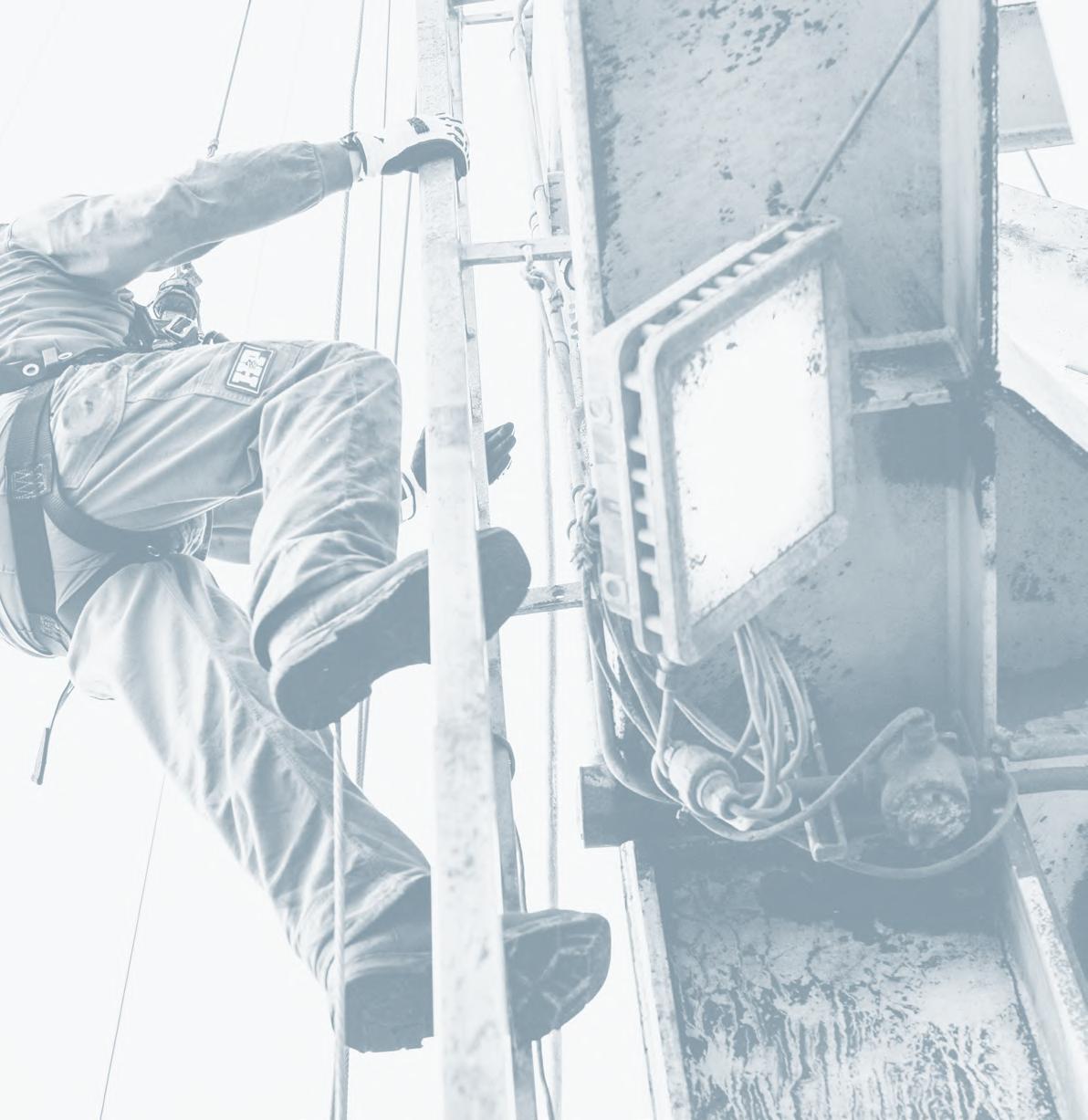
The H&P FlexRig ® fleet was developed with safety and efficiency in mind, which has enabled us to deliver optimized drilling performance for our customers. The Company’s award-winning fleet is flexible, fast, and safe, and we continue to engineer excellence across our service and product offerings.
H&P’s fleet is the largest super-spec land rig fleet in the U.S. and offers solutions that are customizable for every drilling environment. These rigs enable our customers to drill in both conventional and unconventional ways by offering varied design, draw works, mast ratings, top drive, setback capacity, mobility packages as well as engines, generators, mud pumps and pipe handling that exceed their needs.
For more information, see our drilling automation outcomes and FlexRig Fact Sheet
The Company’s technology and software offerings have been instrumental in enhancing our performancedriven solutions while helping customers achieve their goals. We believe with the advancement of technologyenhanced drilling solutions, we have driven greater accuracy, efficiency, and speed across our operations. Importantly, it has also helped us to make strides towards the Company’s goal of reducing its overall environmental impact.
There are three primary ways in which our technological capabilities offer value to customers:
› Reducing Human Error – By reducing human error, downhole tool failures and the related repair costs, we help reduce the number of trips, which in turn reduces fuel and emission impact for customers.
› Preventing Delays – We help reduce manual inefficiencies that lead to flat time and delay time to target. Delays add more days to the well and in turn, increases fuel consumption and associated emissions. We are also committed to continually improving timely wellbore placement and wellbore delivery services.
› Mitigating Wellbore Challenges – By proactively mitigating wellbore challenges, we help reduce backoffs and sidetrack frequency to deliver a more reliable wellbore with less downtime and risk. These reduced risks lend to more repeatable and consistent execution, requiring less fuel and thus lower emissions.
› Reducing Excess Engine Hours – Our Engine Management solution enables operators to reduce excess engine hours, lowering fuel consumption and reducing GHG emissions. By targeting a minimum engine count, we can communicate to the driller when there are excess engines online, so that one these can be safely turned off.
2) INCREASED LIKELIHOOD OF HIGHER PRODUCTION PER EMISSIONS INVOLVED IN EXTRACTING HYDROCARBONS FROM THE GROUND
› Maximizing Production – Our automated and geological technologies help deliver a tighter curve at an orientation that helps maximize the completable lateral length of the asset.

› Enhancing Accuracy – By optimizing wellbore placement, we can provide more control and precision to maximize contact with the reservoir, in turn increasing efficiency in reaching the target zone then maximizing production by reliably staying on target. For instance, our AutoSlide® automated drilling platform responds by autonomously executing slides that minimize tortuosity and sliding footage with increased precision. This combination simultaneously helps deliver better rate of penetration (ROP) and wellbore quality with continuous economic impact.
› Supplying Better Data – Wellbore positioning comes with high levels of uncertainty due to error sources inherent in the surveying process. If not accounted for, these errors can result in loss of production, equipment failure and nonproductive time, leading to potential exposures and/or costly situations. By reducing this uncertainty with better data, we can contribute to better overall performance for optimal outcomes. Success relies on the accuracy of the wellbore survey, and our Survey Management solution works to increase the accuracy and consistency of borehole measurement data.
3) THROUGH AUTOMATED TECHNOLOGY, WE ARE ABLE TO PROVIDE EXPERTS WITH THE ABILITY TO BE IN MORE PLACES AT ONCE
› Driving Efficiency – Utilizing automated technology helps reduce the possibility of human error and increases drilling accuracy, both of which drive efficiency and optimize operations from beginning to end.
› Monitoring Multiple Wells – H&P specialists can remotely monitor several wells at once from one central location at the same time, eliminating the requirement to be at the well-site location.
› Providing Remote Maintenance Support – H&P also provides remote maintenance and support for our drilling operations. Our Rig Systems Monitoring and Support Center and Remote Operations Centers are staffed around the clock every day of the year to monitor rigs and provide feedback to crews to optimize operations.
› Ensuring Employee Safety – The Company’s real-time platform DrillDown™ is designed to help improve alignment, communication, safety, and overall drilling performance. It not only improves our daily efficiency but is also frees up more time that can be dedicated to safety and improving logistics planning.
Specifically, in fiscal year 2022 we introduced and improved three new core technological service offerings supporting the outcomes outlined below:
Detect, mitigate, and recover from downhole stalls
Lower emissions and enhance sustainability
An industry-first that enables smooth drilling using differential pressure
We work with customers to determine fit-for-purpose solutions that help meet their needs and goals. We utilize the operational data of each power system to better understand their specific benefits and environmental impacts, such as GHGs. The Company offers several products and systems, and in some instances a combination, to provide customized solutions for customers.
Standard reliable method of providing power for rig operations in remote settings
Ability to power the rigs using natural gas which may have economic and regulated emissions benefits
Powering the rigs with diesel as the primary fuel supplemented with natural gas, as available.
This option provides power to the rigs with grid electricity as provided by the local utility company or customer developed system. Generally, it provides power at lower greenhouse gas rates compared to on-site combustion.
A newer approach to providing power which may utilize equipment such as batteries to supplement on-site combustion power generation and reduce fuel consumption.

Performance-based contracts are a component of our long-term strategy and service provision. As we make technological advances and enhance our suite of offerings, the performance-based contract model allows us to be compensated for our performance, linking value creation to our operational outcomes. We work closely with customers to help each of them achieve their desired outcomes through our software solutions.
Customer partnerships are an important part of the work we do, particular to the part of the crude oil and natural gas value chain where we participate. When we partner with customers, we are committed to deliver improved economic performance at a high level of safety as well as various solutions to decrease environmental impacts, namely carbon emissions.
In 2022, approximately 15 rigs utilized highline electrical power in North America Solutions. Additionally, 35 rigs had dual fuel capabilities installed for use in FY2022 allowing for the supplementation of natural gas in our diesel engines.
H&P partnered with a supermajor in Colorado to utilize a highline power package, which enabled the rig to be fully operated on grid power. The diesel power package remained as an emergency backup in the event utility power was unavailable. As of September 2022, we have saved the customer an estimated 13,400 metric tons of CO2 and diesel fuel and the related combustion at the well site has been nearly eliminated.
A new era of economical geothermal heat extraction is being explored, and H&P is on the forefront of its development. Next-generation, unconventional geothermal consists of harvesting heat from a wide variety of geologic settings, creating the possibility of “geothermal anywhere” thereby scaling carbon free, 24/7 geothermal energy.
Fervo Energy (Fervo), a leader in next-generation geothermal, is driving technological innovation to bring previously inaccessible geothermal energy to the U.S. by developing unconventional geothermal resources. To help do this, Fervo is employing innovative well designs along with complex unconventional drilling, reservoir engineering, and advanced data analytics.
H&P and Fervo have formed a strong strategic alliance, wherein H&P is not only the preferred drilling
provider but also an investor in Fervo. As part of the alliance, H&P drilled Fervo’s pilot project in Nevada in fiscal 2022, which included the successful drilling of the first two horizontal geothermal wells in the U.S.

A crucial aspect of this new geothermal opportunity and H&P’s involvement is H&P’s ability to deliver consistent and reliable outcomes for customers, including accurate wellbore placement, which is essential when drilling next-generation geothermal wells. Notably, H&P deployed various technologies while drilling Fervo’s pilot project, including Survey Management, a technology that contributes significantly to proper wellbore placement.
Tim Latimer, Fervo CEO commented, “H&P’s drilling rig, expertise, and technology were key factors in the successful drilling of Fervo’s pilot project. The strategic alliance between H&P and Fervo will continue to play a pivotal role in the future of nextgeneration geothermal energy.”
At the closing of 2021, H&P implemented an energy storage system on a rig working in South Texas for a major operator. The energy storage system enables “peak shaving,” which helps reduce overall fuel consumption and carbon emissions. Within nine months, the energy storage system has reduced the operator’s carbon emissions on the rig by 289 tons and saved over $240,000 in diesel fuel.
For more information on other successful drilling outcomes, please visit our website at helmerichpayne.com/drilling-outcomes.
At H&P, we often say that our people are our greatest asset, the driving force that differentiates our business. The safety and well-being of our employees is critical, and we continue to make strides in creating a safe, diverse, engaged, and healthy workforce. The importance of this is key to our ongoing success. As such, our employees are also crucial stakeholders who regularly provide valuable insights into the direction of our sustainability programs.
A detailed graphic and corresponding definitions outlining oversight is below:
We champion a culture of controlling and removing exposure for ourselves and others. At H&P, we refer to this as a culture of Actively C.A.R.E., and we strive to improve our processes to safeguard the health and safety of our employees, customers, and third parties. This culture includes open and honest feedback which allows us to better identify safety exposures. All employees are authorized to recognize and report unsafe working conditions. To reinforce this value, we employ coaching on safety and accountability.
H&P has positions dedicated to providing face-toface coaching and training to our employees. We also provide education through Actively C.A.R.E. training and coaching on the consequences of health, safety and environmental exposures encouraging every individual to control and remove exposures within their purview. In addition, we recognize and reward our employees for removing SIF exposures from their work environment through our Recognition and Rewards program.
Our public HSE Policy formalizes our safety approach and leadership, SIF strategy, as well as our commitment to continuous improvement. We discuss this in greater detail in the Environmental section of this report.
Oversight is integral to our continued improvement in health and safety. Our Safety Leadership Team (SLT), with members from multiple departments and all business units, monitors data — on a weekly basis at minimum — along with employee feedback to refine our strategy and objectives related to safety.
Our SLT has established cross-functional teams to address key objectives and monitor progress. These cross-functional teams help promote an inclusive safety culture in which everyone’s input is valued.
The SLT reports to the SVP of operations who is provided monthly updates on the progress of the Actively C.A.R.E. Goals and other safety issues.
Members of the ELT provide support to the SLT including participating in a weekly review of SIF incident investigations and corrective actions for those incidents. H&P’s executives manage health and safety under the active oversight of the Board, and provide health and safety reports to them on a quarterly basis. These reports incorporate data on safety efforts including but not limited to our health and safety goals.
Strategic Safety Pillar– These teams set the strategic direction for the planning and implementation of the core Health, Safety, and Environmental (HSE) processes known as C.A.R.E. (Controlling and Reducing Exposures) across the organization and oversees the suitability, adequacy, and effectiveness of the HSE processes to control exposure for all H&P employees at the rigs and related worksites.
› Actively C.A.R.E Goal Team – represents the crossfunctional teams that are responsible for establishing and executing on the ACG key results to achieve the overarching ACGs
› Action Teams – represents the cross-functional teams that are formed to address an exposure that needs immediate attention
› Steering Teams – represents the cross-functional teams that are responsible for overseeing H&P’s core HSE processes

Tactical Safety Pillar – These positions assist operations in the day-to-day execution of the core HSE processes in the business units, regions, and rigs.
› HSE Director/Manager – responsible for overseeing the execution of H&P’s safety program in their business unit
› HSE Specialist – responsible for overseeing the execution of H&P’s safety program in their particular region or facility
› HSE Representatives – responsible for assisting assigned rigs in following HSE procedures and processes
› HSE Lead Investigators – responsible for conducting SIF investigations and assisting operations in creating effective corrective actions
Safety Training Pillar – These groups provide education and training to employees that reduce exposures and improves safety performance.
› Human Resources (Organizational Development Department) – creates and delivers training content for employees
› Safety Leadership Coaches – assist in creating and delivering content for leadership training
H&P has a history of safety excellence. The safety of our employees and customers is paramount to our values and is ingrained in our business strategy and culture. As reflected by the H&P Way, we are committed to nurturing a culture highlighted by an Actively Caring workforce. We strive to ACTIVELY C.A.R.E. for:
› Our own safety and health
› The safety and health of others
› The protection of our environment
Safety performance in the drilling industry is typically measured based on Occupational Safety and Health Administration (OSHA) recordable injuries and the active rig years worked without an OSHA recordable injury, lost time, or disabling injury. We view these metrics as lagging indicators to safety concerns, which can encourage wrong behavior such as under reporting incidents. While we still track these metrics for regulatory purposes, we have enhanced our safety efforts using a prevention-based methodology called C.A.R.E. (Control and Removal of Exposures).
Our employee safety program now focuses on serious injury and fatality (SIF), which places more emphasis on near misses and injury exposures, especially those with SIF potential. We believe it is important to take a

more holistic and proactive approach to identify safety issues. By focusing on both actual and potential safety events, we use our SIF system to prevent serious injuries and fatalities as opposed to relying purely on incidents reported after they happen. In addition, our FlexCheck tool helps with pre-job planning and safety risk mitigation.
Our data has identified that approximately 10% to 12% of all OSHA recordable injuries are events in which valuable lessons learned are produced and inform mitigation efforts to reduce potential serious injury in the future. The remaining recordable cases may not provide the necessary learning opportunities to prevent future serious injury.
› SIF Actual – An incident in which there was an actual life-altering, life-threatening, or fatal injury
› SIF Potential – An incident in which the potential was there for a life-altering, life-threatening, or fatal injury
› SIF Mitigated – An incident in which the potential was there for a life-altering, life-threatening, or fatal injury but the potential was mitigated due to an intended barrier or control being in place
› SIF Incidents – Collectively SIF Actual, SIF Potential, and SIF Mitigated
We continue to mitigate, manage, and prevent safety events through the control and removal of exposure in our operations. We also recognize that our SIF Potential, Mitigated, and Actual rates have seen variation in year-over-year change; however, we are still seeing improvements since 2020, despite a large increase in new employees, which we believe indicates that our mitigation efforts are having a positive impact over time.
When SIF events occur, we take immediate action by utilizing our HSE lead investigators to evaluate incidents, and along with input from employees involved and leadership, create a long-term action plan to manage or eliminate exposures in an effort to prevent recurrence. Our HSE lead investigators, with assistance from our HSE software, are responsible for managing the actions created in the long-term action plans.
While we do track TRIR and Lost Time Incident Rate (LTIR), we focus primarily on tracking data associated with our SIF program to report and prevent injuries and fatalities. Since 2019, we have achieved a 52% decline in potentially serious injury incidents.
One example of our employees’ commitment to Actively Caring is through our Recognition and Reward Program. All employees are eligible to participate in this program which was put together based on employee input and is focused on the removal of SIF exposure. We believe this proactive program has played a large part in the decrease of SIF potential incidents since 2019. On average, over the last three years, there have been over 10,000 submissions a year rewarded monetarily.
SINCE 2019, WE HAVE ACHIEVED A 52% DECLINE IN POTENTIALLY SERIOUS INJURY INCIDENTS.
We reinforce our strong safety culture through our training for all employees. Our rig-based employees complete a minimum of 26 hours of safety training each year. New field employees complete 41 hours of training during their first year (26 Rig Safety Management training sessions and 15 hours of New Employee Safety training). We believe these continuous safety training efforts contribute to decreases in SIF rates.
We comply with multiple third-party safety programs to further confirm our efforts track industry benchmarks and take advantage of available resources. Third-party certifications add value to the ways in which we manage our health and safety.
Our third-party compliance includes:
› HSE training is International Association of Drilling Contractors (IADC) Rig Pass accredited
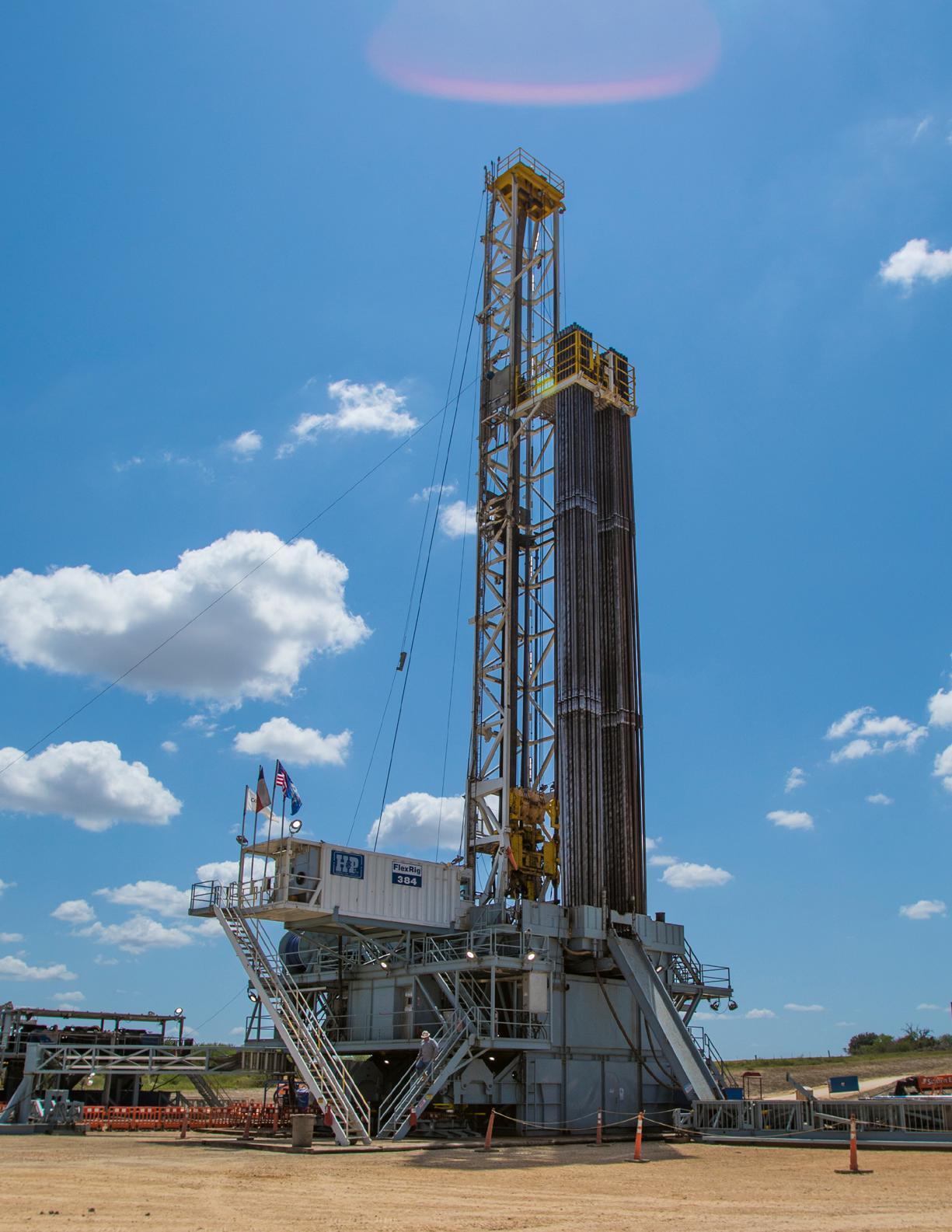
› Quality control vetting of HSE policies and procedures by customer-selected third parties
› ISO 9001 certification for the provision of management support for certain oil and gas contract drilling services, including (but not limited to) the following processes:
– Health, safety, and environment
– Preventative maintenance
– Supply chain management

– Offshore training
Executive compensation is tied in part to internal safety performance goals to align organizational incentives around our safety values. Through SLT reporting and coaching for all levels of employees, H&P incorporates a commitment to safety throughout the organization.
Our annual Health and Safety ACGs are based on H&P’s SIF data and field input. The determination of these goals takes place every year in September (our fiscal year-end) by the SLT and are approved by the ELT before they are formalized and introduced to employees. These goals help our teams stretch to achieve targets that go beyond the status quo. Processes and actions taken to achieve our goals remain in place after the yearly ACG focus concludes as part of our continuous improvement efforts.
H&P continues to focus on the reduction of life changing or life altering incidents through our efforts to control and remove exposures for self and others. Since implementing our Actively C.A.R.E. focus and program, we have reduced SIF incidents through a culture and a dedicated workstream devoted to pre-job planning. Our annual Health and Safety ACGs continue to build and expand upon the prior year’s goals, as we push for continual improvement. Some of these efforts are reflected in that. Despite seeing a large increase of new employees and employees in new positions in 2022, which typically heightens safety concerns and potential for incidents, we were able to maintain our 2021 rate for tubular handling and only saw a minimal increase in our dropped object SIF rate.
PURPOSE: The reduction of unmitigated SIF incidents drives us to tangibly minimize actual safety incidents.
PROGRESS: Goal achieved with only 5.2% of SIF incidents occurring on rigs that had been recommissioned within the last 90 days. This was a 78% reduction from our percentage in 2021.
PURPOSE: Building upon our 2021 tubular handling goal, we focused on reduction of unmitigated SIF incidents to reduce actual safety incidents and protect our employees.

PROGRESS: The SIF rate for unmitigated tubular handling incidents remained at 0.16 in 2022 despite a considerable rig count increase and an influx of employees new to the industry. The 0.16 rate result did however fall short of our stated goal of a 10% reduction in unmitigated SIF tubular handling incidents.
10%
PURPOSE: Building upon our 2021 dropped objects goal, we focused on reduction of unmitigated SIF incidents to reduce actual safety incidents and protect our employees.
PROGRESS: The focus on reduction of unmitigated SIF incidents to reduce SIF Actual incidents was challenging as several rigs were put back to work in 2022 and a large number of new employees were added to our workforce. Although we sustained no SIF Actual incidents due to a dropped object, we ended the year with a 2.7% increase in our SIF potential dropped object rate, from 0.36 in 2021 to 0.37 in 2022.
At H&P, the term “LifeBelt” outlines the Company’s safety rules that highlight actions individuals must take to protect themselves and others from serious injury or fatality (i.e., maintain 100% tie-off when working at heights). These rules have been developed to create awareness and accountability for behaviors that may lead to life-altering, life-threatening, or fatal injuries. The program applies to all H&P employees, contractors, and vendors. The key results that will be completed to accomplish our LifeBelt goal include:
PROVIDE TRAINING ON H&P’S LIFEBELTS ALONG WITH EXPECTATIONS FOR H&P PERSONNEL THAT HAVE COMPLETED THE TRAINING IN THE PAST TO RE-ESTABLISH THEIR KNOWLEDGE OF LIFEBELTS BY FEBRUARY 1ST, 2023
PURPOSE: LifeBelt rules set clear, simple, and consistent expectations focused on activities with the highest SIF exposure making it critical that everyone follows LifeBelt procedures in order to be protected. Additionally, we recognize the importance of re-establishing and refreshing LifeBelt training to confirm knowledge and skillsets are up to date with our workforce’s safety needs and practices.
PROVIDE RIG CREWS WITH EFFICIENT AND RELIABLE PRE-JOB PLANNING (PJP) TOOLS BY THE END OF Q2 2023
PURPOSE: PJP directly supports the planning to control and remove SIF exposures.
IMPLEMENT TECHNOLOGY SOLUTIONS TO ADDRESS LINE OF FIRE, DROPPED OBJECT AND TUBULAR HANDLING INCIDENTS BY THE END OF Q4 OF 2023
PURPOSE: Implementing new technology solutions that have the effect of preventing Line of Fire, Dropped Object and Tubular Handling incidents will directly mitigate safety exposures for our employees.
AUDIT EXISTING FALL PROTECTION SYSTEMS TO IDENTIFY OPPORTUNITIES TO IMPROVE TRAINING, SITUATIONAL AWARENESS, FALL PROTECTION ANCHORS AND ADDRESS SITUATIONS IN WHICH 100% TIE-OFF IS NOT POSSIBLE
PURPOSE: Audits of existing fall protection systems can help us to identify opportunities to improve our existing practices to prevent falls.
H&P’s Diversity, Equity, & Inclusion (DE&I) strategy is reflective of our core values and strengthens our Company and our commitment to the H&P Way. We believe that creating an environment where our employees feel welcomed, respected, heard, and valued drives overall engagement, better leverages the unique talents and perspectives of our people to innovate and supports our ability to attract, and retain a diverse workforce.
Aligned with our strategic approach to all ESG and sustainability matters, we deploy a structured DE&I oversight mechanism across all levels of the organization. Specifically, our DE&I team reports into our human resources department, which has its responsibilities monitored up through the ELT and the CEO.
As our commitment to fostering a diverse, equitable, and inclusive workforce grows, so does the diversity of our employee base. The total U.S. employees represented by minority groups increased by 4.5% since 2021; both the field and corporate offices showed year-over-year increases in representation. At H&P, we know that our employees’ unique experiences and perspectives are an asset to our business, and ultimately drive employee satisfaction, engagement, and retention.

We strive to build and promote a diverse, equitable, and inclusive environment for our current and future employees in our efforts to advance our DE&I strategy.
Specifically in 2022 we had the following initiatives related to that strategy:
› Reviewed Company policies and procedures through a DE&I lens and made recommendations on improving inclusivity and equitability
› Developed online and in-person training content to encourage continuous education on DE&I matters for all employees
› Enhanced the Women of H&P ERG by establishing a Latin America chapter
› Integrated DE&I content into existing workforce development initiatives within the organization such as H&P 101, Change Champions, and coaching sessions
By making educational advancements and continuing to express our commitment to integrating DE&I directly to our core values, we encourage our employees to further their professional development while considering and progressing purposefully on DE&I matters.
Specifically on employee training, we built an educational program to enhance our employees’ understanding of DE&I while giving them practical ways to apply this knowledge in the workplace. We have conducted trainings through both in-person and online sessions.
The three training programs include: 1) Introduction to Diversity, Equity, and Inclusion and Traits of Inclusive Teams; 2) Unconscious Bias and Microaggressions; and 3) Allyship and Privilege. These three courses take employees through an exploratory and educational journey to discover how unique perspectives and curiosity can create an environment to understand, welcome, respect, and value one another.
In order to provide employees with more frequent learning opportunities, we have also introduced an exercise called Introduction to DE&I, which has been released on our Workday learning platform. This training provides a base-level understanding of DE&I and how to apply best practices within the professional setting. In addition to this introductory course, there are several other continuous learning sessions in development for our Workday platform that include, unconscious bias and microaggressions.
As one of our initiatives in 2022, a DE&I subcommittee reviewed existing policies and procedures through a DE&I lens to enhance our mission of promoting a welcoming, diverse, and discrimination-free workplace. Sixteen policies were reviewed, and recommendations were made for more inclusive language. The impact of these recommendations is meant to create greater equity between our corporate workforce and those out in the field, reduce turnover, build morale, strengthen organizational health, enhance operator satisfaction, and bolster the H&P brand.
The policies that most explicitly describe our DE&I efforts, and are publicly available, include our Code of Business Conduct and Ethics and Human Rights policies. Additionally, our efforts to assess candidates impartially is described in the Talent Attraction section of this report.
In 2022, H&P’s DE&I Advisory Council further encouraged employees with diverse backgrounds and experiences to join through increased engagement with our workforce. Applications for the council were reviewed with a lens to verify proper representation across the organization to provide the best, most inclusive strategy. One of the primary goals of the Advisory Council is to build DE&I Champions to promote DE&I across the organization. This is accomplished through training sessions with council members to provide education on key DE&I practices while providing communication to spotlight each area of the organization. Our DE&I Advisory Council meets monthly to discharge its duties and develop new strategies to embed DE&I practices in all levels of the organization.
H&P has developed a framework to support the establishment of Employee Resource Groups (ERGs), which are employee-driven groups that maintain and promote diversity, equity, and inclusion throughout the organization. These employee identity groups provide an opportunity for employees to build a community within the Company, support one another, and develop future leaders. Over the last year, we have progressed on the education of employee groups and the benefits of ERGs and how they positively impact our Company culture.
H&P continues to provide access to our ERG framework that encourages employees to create ERGs that support the organization, our people, and our communities. The first ERG that formed at H&P was the Women of H&P which has 125 global members.
Women of H&P’s core mission is to:
Empower women professionals within the organization to advocate for themselves, their team members, and the business
Promote the interests of women employees in driving business objectives, strategy, and culture
Retain and develop women at H&P by providing exposure, networking communities, and development opportunities
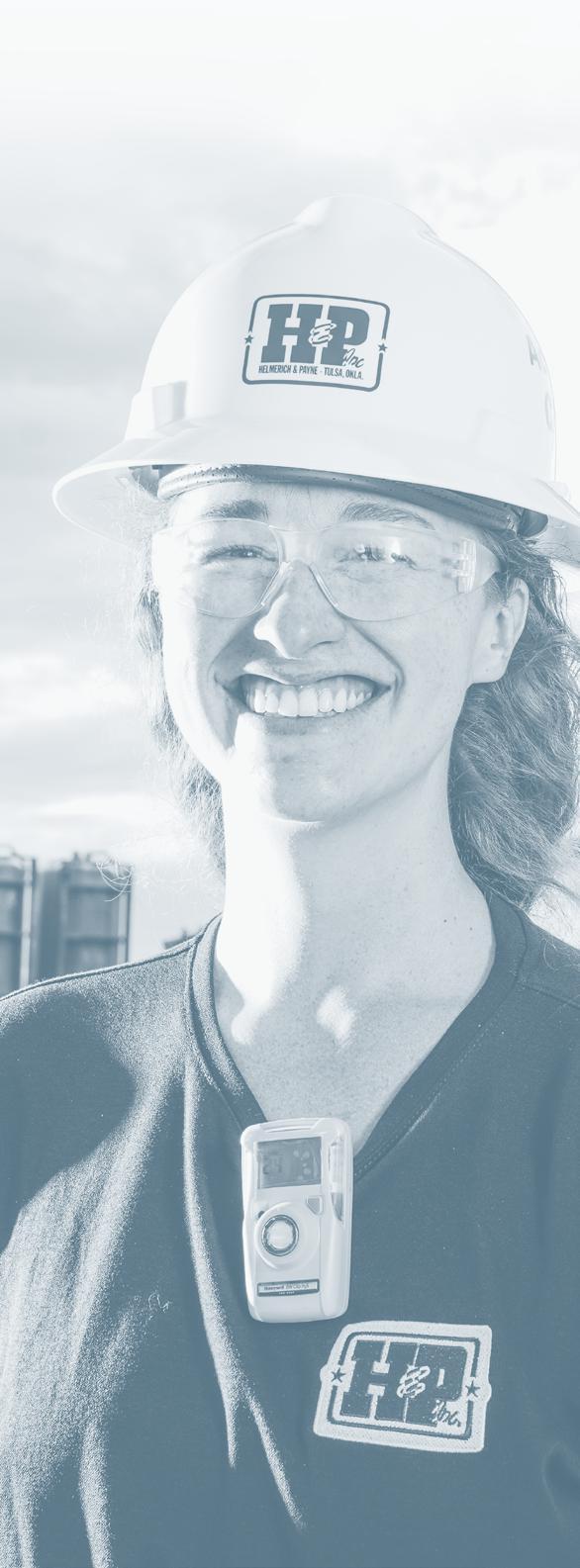
Bring cultural awareness within H&P in alignment with business objectives
Building upon our Women of H&P, we have developed a regional focused ERG – Women of H&P Latin America (WHP-LA) – to better recognize the geographically bespoke needs of our employees. WHP-LA was started by four officers from our Argentina and Colombia offices to create a space to support employees in their native language. The ERG has around thirty members and is inclusive to all employees. Over the last year their primary focus has been fostering an environment for conversations around unconscious bias, balancing work, and family time, and introducing DE&I to the field operations in the area.
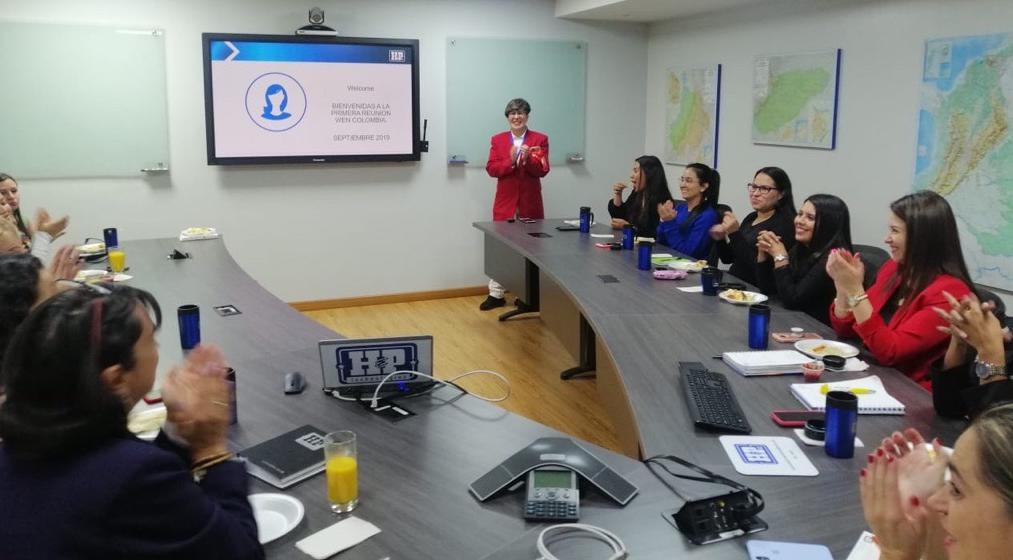
We rely on targeted data to enhance our understanding of the demographic information and diversity trends of our workforce. These insights are integral as we identify opportunities and key areas for improvement.
Building leadership diversity is a key component of our DE&I strategy. Providing opportunities for all parties to grow into senior management positions is important to
H&P and our commitment on this front is reflected in our continued improvement in diverse representation across the organization. We are seeing continuous improvement in the percentage of women in senior management positions as well as increased minority representation across our entire U.S. employee base. We look forward to further enhancing representation across H&P in the years to come.
0
Total U.S. Employee Represented by Minority Groups
Workforce development is essential to employee engagement and growth. Our Organizational Development team takes an integrated approach to talent management and training and development programs, helping our employees grow and develop new skills as well as foster future managers and leaders from within our organization.
Training and development programs are a blend of in-person workshops, virtual classroom, and interactive selfpaced E-Learning modules. This begins with onboarding and orientation and continues throughout our employees’ careers both in corporate positions and in the field. H&P offers a variety of training programs ranging from job specific programs to leadership, including topics such as safety, ethics, teamwork, cybersecurity, leadership, problem solving, change management, organizational health, compliance, and environmental training.
Some of our prominent training offerings include:
› Change Champions – This program teaches employees to solve complex problems using structured processes, tools, and data to drive results while emphasizing leadership and public speaking.
› Leadership Training – The Company’s leadership strives to empower the entire H&P workforce to deliver the best performance and customer service in today’s market. H&P’s leadership training consists of on-the-job mentorship, formal online classroom instruction, leadership webcasts, and on-demand programs via eLearning.
› New Employee Safety Training – This training is an onboarding program for new hires in field positions. The purpose of the program is to prepare employees to work safely on our rigs and provide necessary certifications to do so; including all OSHA and IADC Rig Pass training, as well as Company culture education.
› Specialized Short Service Employee (SSE) Program – This specialized training program is a continuation of New Employee Safety Training basics and is intended to provide the technical on-the-job training guided by a mentor. Mentorship is important for our new employees as it affords H&P employees the ability to teach and learn from one another. The goal of the program is to reduce SIFrelated events, increase skills and knowledge and retain talent at H&P.
› Ethics, Compliance, & Safety Training – H&P is strongly committed to conducting its business with integrity, in an ethical manner, and in compliance with all applicable laws and regulations. As part of this commitment, H&P has implemented a comprehensive ethics and compliance training program. Topics include ethics, anti-corruption, export controls, harassment, sexual harassment, anti-trust, data privacy, insider trading, and environmental compliance.
› Rig Safety Management Training (RSMT) –This program is developed and implemented by internal training and safety experts for all field employees to learn, discuss, and understand various safety topics including OSHA and International Suppliers Network (ISN) compliance, Actively C.A.R.E., and environmental topics, SIF reviews, leadership development, as well as personal and positional skills.
› H&P 101 – This workshop is geared toward professional level employees and involves the immersion into H&P’s culture, values, Company knowledge, and industry foundations.
› Field Employee Trainings – These offerings include position-specific training designed to develop and enhance the skills of our workforce. They include programs and courses covering job skills, expectations, safety, well control, and leadership.
› Technical Training – Technical training for H&P crews is delivered by internal subject matter experts, third parties, on-the-job mentors, and self-paced E-Learning. Training encompasses specialized courses in mechanical and electrical systems, including hydraulics, electrical circuits, AC drives, top drives, and pipe handling.
20%
15% 15%
30% 20%
Leadership
Actively C.A.R.E. Position Specific SIF Review
100% completion rate for Ethics & Compliance Trainings among targeted employees for the past five years
An outline of our training programs included throughout different sections of this report can be seen below.
General Training > Workforce Development
Environmental Training > Environmental Management
Safety Training > Safety Culture
DE&I Training > Diversity, Equity, & Inclusion
Ethics & Compliance Training > Ethics & Compliance
General training programs focused on employee and career development. General training items also cover and emphasize safety and environmental procedures and learnings.
Environmental training programs focused on improving operational environmental management.
Safety training programs focused on improving operational health and safety.
DE&I training programs focused on enhancing employees’ understanding of DE&I while providing practical ways to apply this knowledge in the workplace.
Ethics and compliance training programs focused on improving employee compliance and ethical behavior.
Cybersecurity training programs focused on mitigating operational IT risks. 62 CHANGE CHAMPIONS GRADUATED THROUGH THE 56-HOUR PROGRAM DURING FISCAL 2022.
Cybersecurity Training > Risk Management
Beyond our suite of workforce training services, H&P also looks to develop our employees based on their sought-after career goals. We offer employees internal mobility opportunities, both vertically and laterally within the organization, to further develop different skills and further promote organic growth.
Additionally, we encourage our employees to receive training outside of H&P. We reimburse employees for professional certifications and continuing education and offer an Educational Assistance Plan for eligible employees pursuing an undergraduate degree and, in some cases, post-graduate degrees.
Our workforce and talent are the engines of H&P’s continued success. Maintaining strategic recruiting and hiring practices is integral to our business. Over the course of 2022, H&P’s Human Resources department took steps to further our formal talent attraction and retention strategy. Actions included a talent campaign dedicated to attracting and mobilizing international talent, competitive compensation analysis, maturing our foreign assignee and mobility management program, increasing our social media recruiting efforts, and improving our new-hire onboarding experience.
The Global Human Resources team collaborates to meet new workforce needs as H&P expands internationally.
The Talent Acquisition team includes a network of domestic and international HR team members who work together to source all levels of diverse talent to meet domestic and international workforce needs including technical, professional, rig-based, and leadership roles.
Our Workforce Staffing team anticipates staffing needs for our North America Solutions and Offshore Gulf of Mexico operations by understanding sales forecasts and building an appropriate talent bench to meet those needs on-demand. The team is also
responsible for sourcing, hiring, onboarding, training, assigning and reassigning rig-based employees.
We maintain a strong bench of talent available for redeployment as needed which helps to safeguard our ability to operate effectively in different business cycles. In addition, we utilize social media, local job fairs, employee referral bonuses, and educational organizations across the U.S. to find diverse, motivated, and responsible employees.

We continue to progress our rig staffing strategy to attract and retain talent as well as create future leaders. Specifically, we attract talent by focusing on key areas of strength throughout our Company and recruitment process including:

› our focus on training and development;
› our emphasis on organic growth and internal promotion opportunities;
› our brand recognition;
› emphasis on safety and protecting our workforce;
› our workforce’s ability to engage top of the line equipment; and
› the scale of our services.
To develop and retain talent, we deployed a standardized training and development program for each Short Service Employee (SSE) during their first six hitches at H&P. This program creates a clear path of technical on-the-job training for employees, as well as visibility of superintendents and managers into the developmental progression of their newest employee.
Our SSE training and development program involves participation from all members of the team. For instance, SSEs are assigned on-site mentors that are nominated by superintendents and rig managers and are identified within Workday, our companywide HR system. Mentors engage in concurrent training – receiving mentorship training alongside SSE program facilitation.
Our SSE training program demonstrates investment in our talent through on-the-job, technical training guided by a mentor. Mentorship is a core part of our new employee onboarding process, as it provides our newer employees with the ability to learn from more experienced teammates. The goal of the program is to reduce SIF-related events, increase skills and knowledge, and retain new talent. This robust mentorship program increases early talent retention and serves as a value-add program for our customers.
We also have a referral program in place, in which employees can earn a cash bonus if a candidate they refer is hired by H&P for a rig-based position. We constantly engage with our team to identify leadership training opportunities and monitor overall satisfaction. Additionally, exit interviews are regularly conducted and turnover reports are reviewed on a regular basis to build a comprehensive understanding of our field talent planning team’s needs.
During 2022, we hired 3,034 new employees which was 38% of our workforce.
Kyle L., Rig 244, West TexasWe are committed to sourcing a diverse, motivated, and responsible employee base across the U.S. We do this by utilizing diverse panels of interviewers and leveraging training for leaders on unconscious bias. Our work attracting and retaining a strong and diverse workforce across all levels within our organization reflects our core values and plays a key role in determining the success of our business.
Our conscious effort toward improving our diversity companywide has shown tangible success as we have seen the total U.S. employees represented by minority groups grow 7.6% since 2020. Specific data can be found in the Using Data to Advance Diversity & Inclusion section. We know that there is more work to be done, and we look forward to continuing to make more progress.
College recruiting plays an important role in the overall talent strategy at H&P. Our internship program offers college and university students an opportunity to gain real-world experience, develop a professional network, build business acumen, and be considered for future employment at H&P. In 2022, we hosted 14 interns across operations and corporate. We have forecasted 43 internship positions for 2023 as we leverage our talent data analytics to better inform the future needs across the organization.
H&P is focused on hiring locally for our operations. We are proud to focus on local hiring at all of our domestic and international sites, and prioritize hiring the best candidates throughout our recruitment processes. At the local level we focus on developing talent to create a strong global workforce. In 2020, we transitioned senior leadership positions in Argentina and Colombia from long term expatriates to local leaders. Additionally, our United Kingdom, France, and India locations are led by local leaders. H&P complies with country specific requirements for all citizens hired.

The voice of the employee drives our organizational health and strategic people practices. We have successfully developed and deployed an organizational listening strategy to create meaningful opportunities to receive employee feedback throughout their journeys at H&P. Our annual engagement survey, pulse survey, onboarding survey, and exit survey results are synthesized on an ongoing basis to quickly address opportunities to improve upon the overall employee experience. In 2022 we increased our employee response count to the annual engagement survey by 33% and will continue to optimize access and availability for more employees to participate in this process.
H&P values its employees and believes offering competitive compensation as well as a robust benefits package are essential to prioritizing their well-being. Select highlights of our benefits programs for eligible U.S. based employees include:
› medical, dental, and vision insurance for all full-time employees, and all part-time; employees working more than 20 hours per week, and their dependents;
› a 401(k) plan with Company match incentive for all fulltime employees, and all part-time employees working more than 20 hours per week;
› employer-paid life insurance benefits, which include a life assistance program, identity theft protection and travel assistance plan;
› the Employee Assistance Program which offers wellness support with counseling, legal assistance, financial coaching, and identity theft resolution;
› the H&P Way Fund which provides financial assistance to U.S. H&P employees during emergencies;
› employee discounts for phone, computer, personal vehicle, car rental, and hotel purchases; and
› an Educational Assistance Plan, which offers reimbursement of tuition fees for any employee pursuing an undergraduate degree and, in some cases, postgraduate degrees.
H&P’s Flexible Work Policy allows for eligible employees to work flexible schedules and from various locations – including the employees’ homes. Eligible roles have the option to work fully remote, traditionally in a H&P office or a hybrid combination of the two. We believe this policy improves employee morale, increases access to top-tier talent, reduces our real estate footprint, and reduces overall employee commuting time.
Annually, we review our benefit options considering employee feedback and industry benchmarks with a goal to provide meaningful benefits to our diverse employee groups.

H&P is committed to supporting the non-profit and professional organizations serving and positively impacting our communities. As an organization, we are intentional in aligning our time and financial contributions with philanthropic initiatives that reflect our Company’s values and dedication to enhancing the quality of life and economic well-being of the communities in which we operate. Together with our employees, H&P has expanded its community relations program this year and will continue to invest in programs that make a difference for the people in our communities.
Over the years and through our Company’s participation in charitable events and fundraising efforts, H&P has fostered and strengthened our connections to the communities where we do business.
At our corporate headquarters, the Tulsa Area United Way (TAUW) employee campaign and Day of Caring provides an annual opportunity for H&P employees to volunteer time, resources, and financial support to build value in our surrounding communities. H&P matches employee donations to TAUW and participating in their annual Day of Caring is a favorite volunteer event for Tulsa-based employees.
In Denver, the Colfax Marathon has become a highly anticipated team-building and fundraising event. This year, one H&P team “Between a Rock and a Hard Pace” finished first in the Energy, Environment, and Geology division and 15th place overall, securing a donation to the Food Bank of the Rockies. The Denver team also actively supports the Special Olympics Colorado and can often be found teaching energy and STEM related subjects to underserved students.
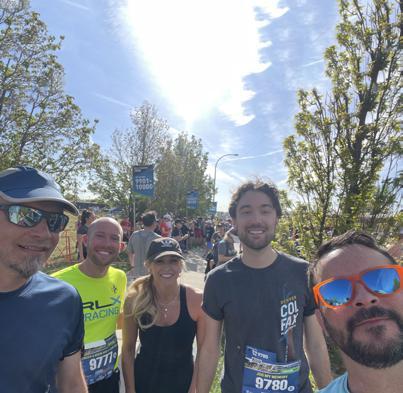
In addition to corporate philanthropy and employee volunteering, we recognize local hiring and procurement practices as important forms of social investment, which supports communities and strengthens local economies. H&P hires locally in the countries where we do business and seeks to form strong relationships through procurement with local suppliers. We believe a strong focus on our communities and employees is critical in the development of a resilient business model and strong service delivery.
Not to be outdone, our field districts are equally involved in their respective communities and give time and money to area volunteer fire departments, schools, and community organizations. Our offshore team has worked with the Northshore STEM Coalition and this past year helped the organization’s “Brain Food Truck” trailer program. This unique service provides hands-on STEM and team building activities for children and families in the Northshore region of Louisiana.
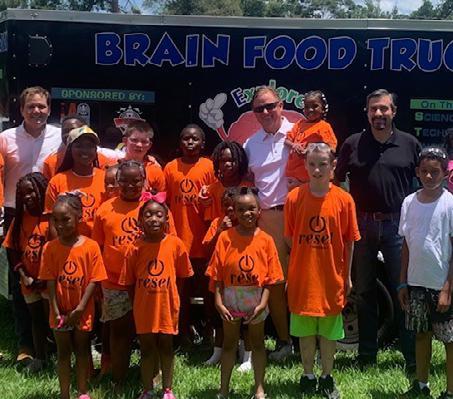
H&P deeply values our ability to be involved in a variety of philanthropic initiatives throughout the communities where we live, work, and play. We have a long history of serving our communities, and we are eager to see these efforts continue in the years to come.
During fiscal 2022, H&P supported over 75 philanthropic organizations across our local, employee, and environmental communities, a 42% increase from 2021. Just under 50% of those organizations were outside of our corporate hometown of Tulsa.
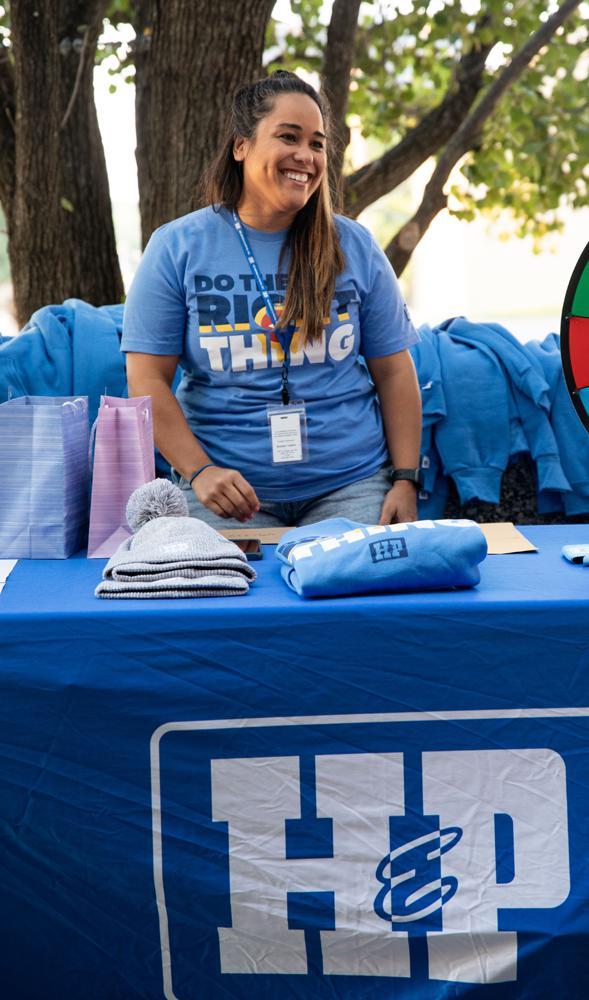

A. Day of Caring, Tulsa, OK B. See it, Be it’ Girl Scouts STEM showcase, Tulsa, OK C. Northshore STEM Coalition, Northshore, LA D. Colfax Marathon, Denver, CO
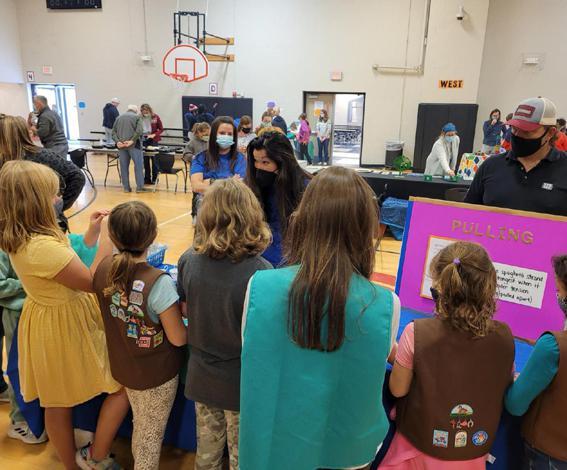 Celeste M., TAUW fundraiser, Tulsa, OK
A. B. C. D.
Celeste M., TAUW fundraiser, Tulsa, OK
A. B. C. D.
The growth and success H&P has experienced over the last 100 years would not have been possible without the talent, energy, and passion of all of our employees. H&P recognizes and values the efforts of every employee as we all do our part in reflecting the H&P Way. Philanthropic efforts to support our employees allow us to demonstrate our commitment to the hardworking individuals that make up and better our Company.
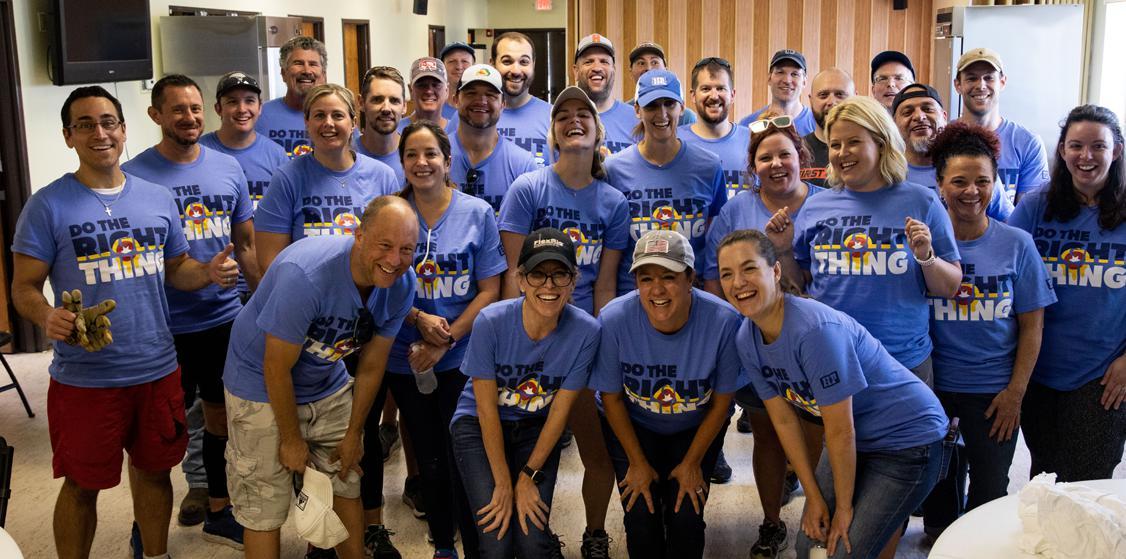
The H&P Way Fund is a program created to provide short-term assistance to U.S. employees experiencing severe financial hardships due to unexpected and unavoidable circumstances. The program, funded by current H&P employees and matched by the Company, focuses on assisting H&P employees facing emergencies such as:

› Home Catastrophe/Natural Disaster
› Funeral of Immediate Family

› Emergency Travel for Immediate Family
› Medical Emergency (emergency hospitalization, injury, etc.)
› Personal Emergency (theft, partner laid off, acts of violence)
The H&P Way Fund exemplifies the values central to our Company, such as our commitment to the well-being of our employees and their families. The critical financial aid offered through this program has strengthened the overall culture of caring within H&P, emphasizing the importance of the welfare and health of our workforce in adequately serving customer needs.
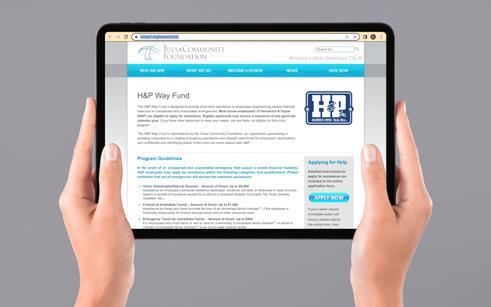

The H&P Way Fund relies on the expertise of the Tulsa Community Foundation, an organization devoted to creating and administering emergency assistance and disaster relief funds for employees. As administrator, the Tulsa Community Foundation fields requests for aid and guarantees applications are confidential. Information specific to crises and hardships is never shared with H&P.
For more information, please go to the Tulsa Community Foundation’s H&P Way Fund webpage
H&P recognizes that the future of our industry relies on equitable access to education and research opportunities for students within our communities. The Phyllis Dotson Scholarship Program, named in honor of retired H&P executive George Dotson, and his wife, Phyllis, is a scholarship opportunity made available to children of current H&P employees that provides a financial pathway to continued learning and growth through higher education. In alignment with the Dotson family’s philanthropic vision and our ongoing effort in the community to provide greater access to education, H&P has awarded 150 scholarships to students, both domestic and abroad, since the program’s launch in 1999.
We are committed to protecting human rights and preserving human dignity throughout our business activities. We recognize international human rights principles, and our Human Rights Policy is guided in some of the principles encompassed by the United Nations Universal Declaration of Human Rights.
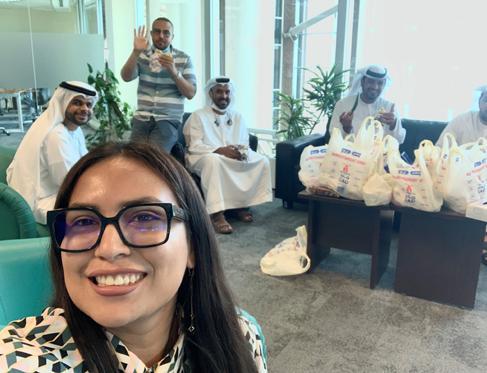
Our focus on preserving human rights is reinforced through our Code of Business Conduct and Ethics, Vendor Code of Conduct, and our Human
Rights Policy, as well as within our values and ethical employment practices. Additionally, H&P’s policies and principles include compliance with all applicable employment laws relevant to the countries in which we operate including, but not limited to, laws around child labor, forced labor, human trafficking, any form of modern slavery, as well as data security and privacy regulations.
We also strive to provide a safe work environment that is free from harassment. H&P does not discriminate on the grounds of race, color, sex, sexual orientation, religion, national origin, citizenship status, age, genetic information, physical or mental disability, veteran status, pregnancy, or any other legally protected status. For more information please see our Equal Employment Opportunity and Prohibition Against Discrimination and Harassment policy.
We continue our commitment to human rights globally and continue to look to improve our policies to protect those rights with our global partners.
H&P’s Workplace Violence Policy is contained within the Code of Business Conduct and Ethics and explicitly states that we do not tolerate threats, potential or actual violence while on any worksite or premises or conducting Company business.
Day of Caring - Salvation Army team, Tulsa, OK A. B.At H&P, we know that our sustainability impacts expand beyond those of our direct operations, and we actively engage with our suppliers to promote sustainability across the value chain. Through engaging our suppliers, we build strong business partnerships which support our sustainability strategy and achieve our business objectives.
The Global Supply Chain team is at the center of overseeing our supply chain and procurement practices, and works closely with many other departments to drive forward successful supply chain management.
Specifically, the Global Supply Chain team works directly with our operations teams to review suppliers, analyze inventory, and make process improvements. The Legal and Compliance team supports on contracts review while working alongside the ERM to support the general vendor review process. Oversight of our supply chain practices is provided by the chief financial officer and the Board’s Audit Committee.
We take a pragmatic, risk-based approach to our supplier engagements, allowing us to dedicate the appropriate amount of due diligence to each supplier. Additionally, we work with the International Suppliers Network (ISN) to retrieve information reported to OSHA and assess the most up-to-date information on supplier health and safety practices when a supplier may work directly within our operations. Our Global Supply Chain team works with our HSE and Operations teams to review scores and feedback to make the ultimate determination of who we work with. We take these steps to help safety performance within our operation.
All suppliers, across all categories and amounts of spend, are screened by our Trade Compliance department’s sanctions review system as part of their initial onboarding process, and then subsequently screened on a daily basis until they are offboarded.
In the face of ongoing supply chain disruptions over the past several years, we have engaged in regular conversations with our business partners to understand their evolving needs, help prepare and create a supply chain that remains resilient despite macroeconomic challenges.
We are also committed to creating opportunities for local suppliers whenever possible. We regularly work with local suppliers and integrate region-specific considerations into our approach in the regions in which we operate. This local approach gives us a competitive advantage, while simultaneously supporting local businesses and communities. Our corporate team regularly reviews suppliers, including local suppliers, with field personnel addressing topics such as inventory min/max planning, long lead-time spare equipment concerns, and back ordered materials.
At H&P, we know it’s important that we only engage with businesses that share our high ethical standards and respect for human rights. This is underscored in our Vendor Code of Conduct, which states our firm policies against modern slavery and labor abuses. More information on our commitment to Human Rights across our value chain is described further in the Human Rights section.
We evaluate suppliers that provide critical equipment and services to our operations through scorecards that assess their performance across a range of key metrics, including, but not limited to, communication, timeliness, cost competitiveness, innovation, and product quality. Our internal sourcing analysts aggregate the quantitative and qualitative information to provide each selected supplier with a final score output. The scorecards allow H&P to engage with suppliers directly and tactfully on improvement processes and, in turn, creating lasting business partnerships.
We solicit feedback from our field employees across operating regions, and the information and data we collect through the scorecard process has facilitated cross-functional improvement plans that engage HSE, operations, and suppliers. When certain supplier ESGcentered risks become apparent, we work closely with
our HSE team to drive our engagement strategy and determine next steps. Our suppliers play a key role in ensuring the success of our business, and we are focused on ensuring quality engagement and communication around HSE matters.
When we engage with suppliers, we require that they abide by the environmental, health, and safety standards described in our Vendor Code of Conduct which outlines qualifications and expectations for our suppliers. All suppliers engaged in providing goods or services to H&P are expected to act in accordance with the Vendor Code of Conduct, and at a minimum comply with all applicable laws, rules, regulations, and standards within the jurisdictions in which they operate. Our employees on the Global Supply Chain team aided in the development of the Vendor Code of Conduct and through internal compliance and policy review channels are aware of our policies for interaction with vendors.

Two words: Shared Expectations. Our favorite time of the year comes in six-month intervals, when RPS Manufacturing Solutions receives our supplier scorecard from H&P’s valiant supply chain team. Together, we use this bi-annual scorecard to push each other to new heights, prevent stagnant programs and set new industry bars. It is through both these continuous improvement discussions, and the positive recognition praises, that RPS’ teams find our strength. The best kind of client to have is the one that wants to make our partnership stronger. We can confidently say that H&P is able to share critical information RPS needs to advance as a company, via their scorecard process.”
Chief Customer Officer, RPS Manufacturing Solutions
We very much value our supplier scorecards as a vital tool for maintaining, and more importantly, improving service with H&P. Specific metrics enable us to hone in on the areas where we need improvement. It also provides a channel for H&P to emphasize the areas where we excel. The fact that we can respond with open and candid discussion reassures us that we are in a supply partnership and not working on a one-way street. We wish more of our customers would critique and reward us with measurable data!”
Kirk Tumlinson Director of Business Development, LHR Services and Equipment, Inc. OPERATIONS TEAM GLOBAL SUPPLY CHAIN TEAM LEGAL & COMPLIANCE AUDIT COMMITTEE CHIEF FINANCIAL OFFICER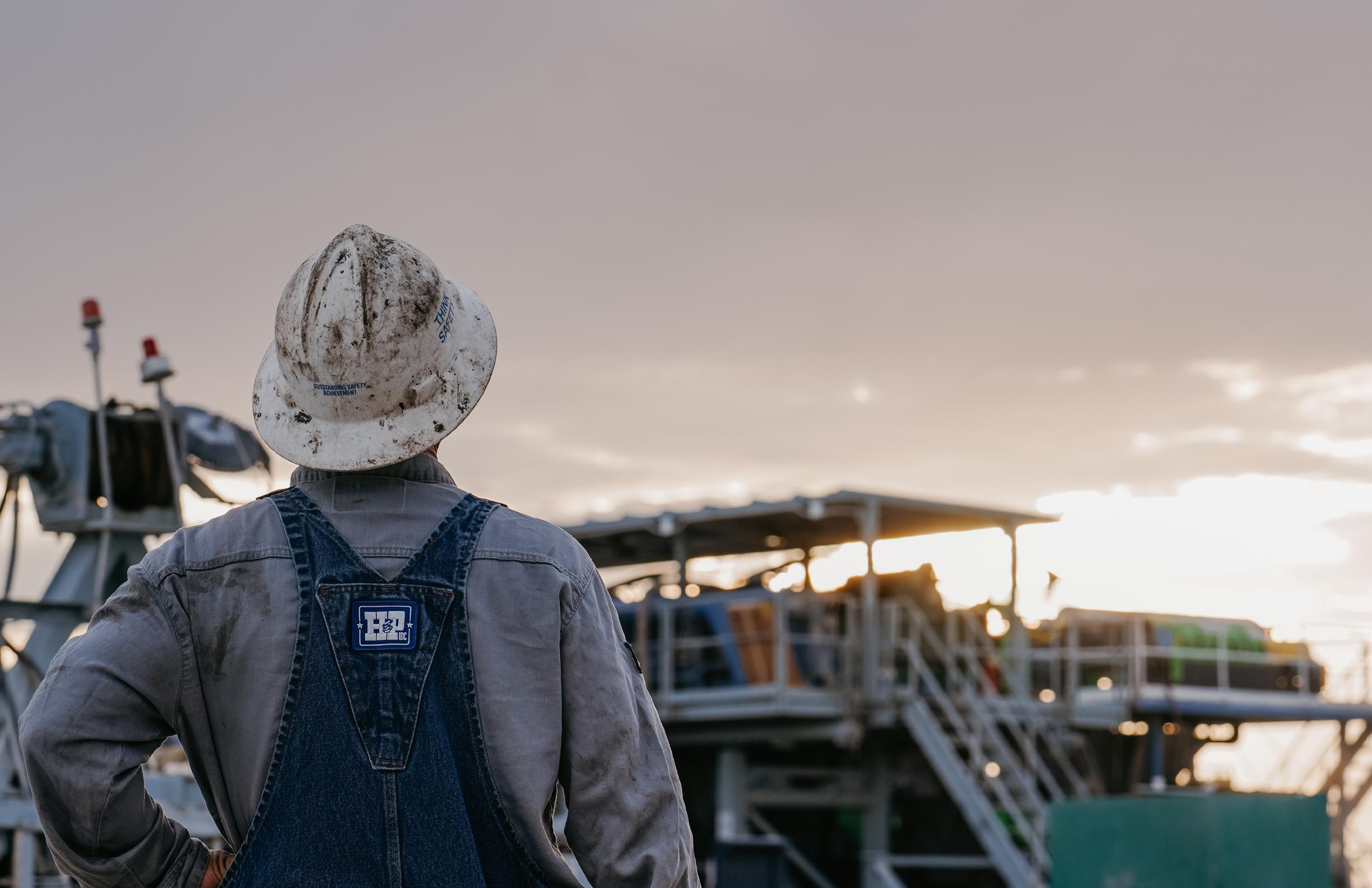
Corporate governance practices at H&P, rooted in our core value of “Do the Right Thing,” permeate through all functions within the organization. These practices are core parts of our strategy to act ethically and sustainably. Corporate governance at H&P encompasses the oversight mechanisms that help us mitigate risk and facilitate the execution of environmental, social, and governance initiatives. The strength of our governance position is demonstrated by our employees’ commitment to live by H&P’s values and abide by the expectations laid out in our corporate governance programs.
Our Board values a diverse group of Directors who possess the background, skills and expertise and the highest level of personal and professional ethics, integrity, judgment, and values to represent the long-term interests of H&P and its shareholders. As part of the nomination process, the Nominating and Governance Committee considers diversity in professional background, experience, expertise, perspective, age, gender, and ethnicity with respect to Board composition as a whole. We believe the combination of the skills, background, and experiences of our Directors make our Board as a whole well-positioned to provide effective oversight and strategic advice to our management.
The Nominating & Corporate Governance Committee is committed to including in each search for new director candidates, persons who reflect diverse backgrounds, including diversity of gender and race.
H&P’s Corporate Governance Guidelines more fully describe the criteria for Directors that the Nominating and Corporate Governance Committee considers. As further described in the Corporate Governance Guidelines, the Nominating and Corporate Governance Committee is committed to including in each search for new Director candidates nominees who reflect diverse backgrounds, including diversity of gender and race.
In the past five years, shareholders have elected five new Directors, four of whom are considered diverse by gender and/or ethnicity.
80% of recently added Directors are considered gender or ethnically diverse.

Ethnically
Ethnically
10
Diverse
Diverse
Ethnically Diverse Female Not Diverse
H&P’s Board is composed of three committees: the Nominating and Corporate Governance Committee (the NCG Committee), the Human Resources Committee (the HR Committee), and the Audit Committee.
These committees generally meet at least quarterly or more frequently as needed. Each committee is entirely composed of independent Directors. A copy of the charters of all three committees and our Corporate Governance Guidelines are available on our Investor Relations website
H&P’s NCG Committee, which is entirely composed of independent Directors, regularly reviews the Board’s leadership structure to ensure that it fulfills its responsibility to provide independent oversight of the Company.
Randy A. Foutch
Hans Helmerich (Chairman of the Board)
John
H&P’s HR Committee, which is entirely composed of independent Directors, functions as a compensation committee and has the responsibility for establishing, implementing, and monitoring our executive compensation program.
H&P’s Audit Committee, which is composed entirely of independent Directors, plays a significant role in oversight of risks associated with the Company’s financial performance, internal and external audit functions, legal and tax contingencies, compliance, cybersecurity, physical security and other exposures.
We regularly engage with our shareholders through several mediums, including investor conferences, meetings, quarterly conference calls, and written communication to respond to questions and receive their input on our corporate practices.
Through our engagement, we communicate to our shareholders the strong governance and shareholder protections we have in place. Our shareholder protections are outlined within our proxy statement.
Our compensation program not only aligns the interests of our executives and shareholders, but also provides the necessary incentives to attract, retain and motivate our people to meet or exceed our financial and operational goals.
To align the interests of our executives with those of our stockholders, our executive compensation program is designed to place a substantial emphasis on variable compensation which fluctuates based on both the Company’s stock price performance and our executives’ achievement of short- and long-term corporate goals that enhance stockholder value. Our fiscal 2022 short-term incentive bonus plan includes, among other things, performance objectives are tied to Health and Safety and Environmental Actively C.A.R.E. Goals, with the recognition that keeping employees and customers safe and reducing our environmental footprint are important to generating long-term value.
More details on compensation practices are outlined in our proxy statement
Performance objectives are tied to Health and Safety and Environmental Actively C.A.R.E. Goals, with the recognition that keeping employees and customers safe and reducing our environmental footprint are important to generating long-term value.
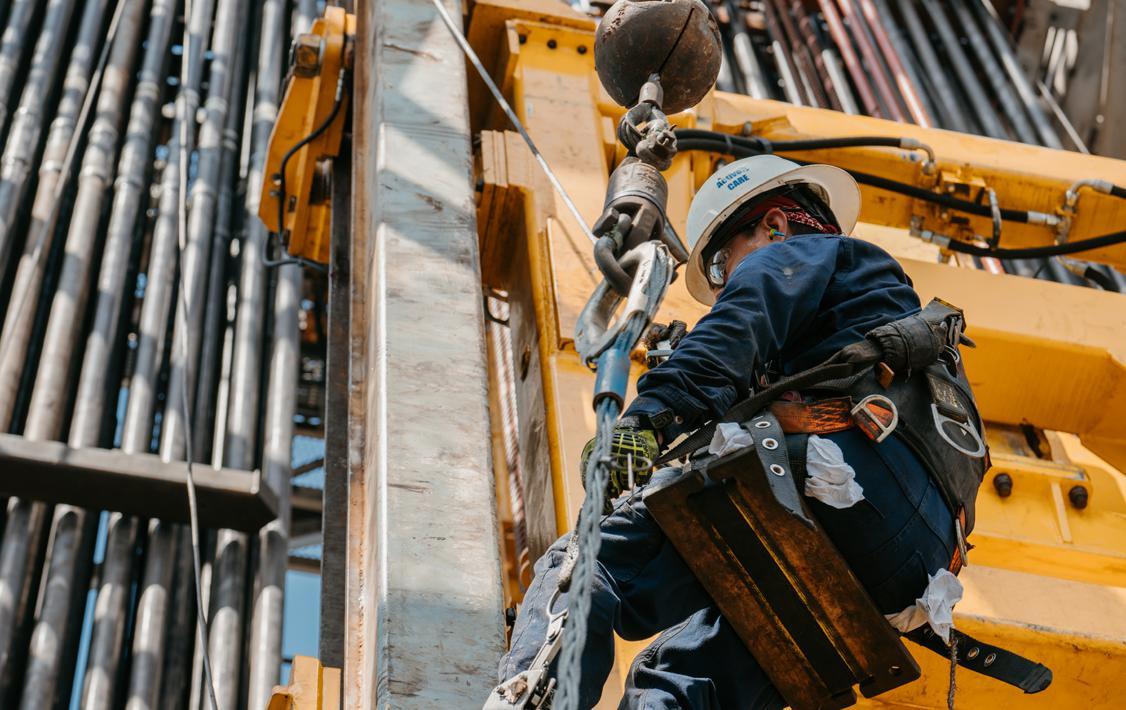
Mary M. Vandeweghe
John D. Zeglis
Ethics and Compliance has been a part of H&P’s DNA for over a century. We promote a culture of honesty and transparency in our actions and foster an environment where employees can work ethically on their daily tasks.

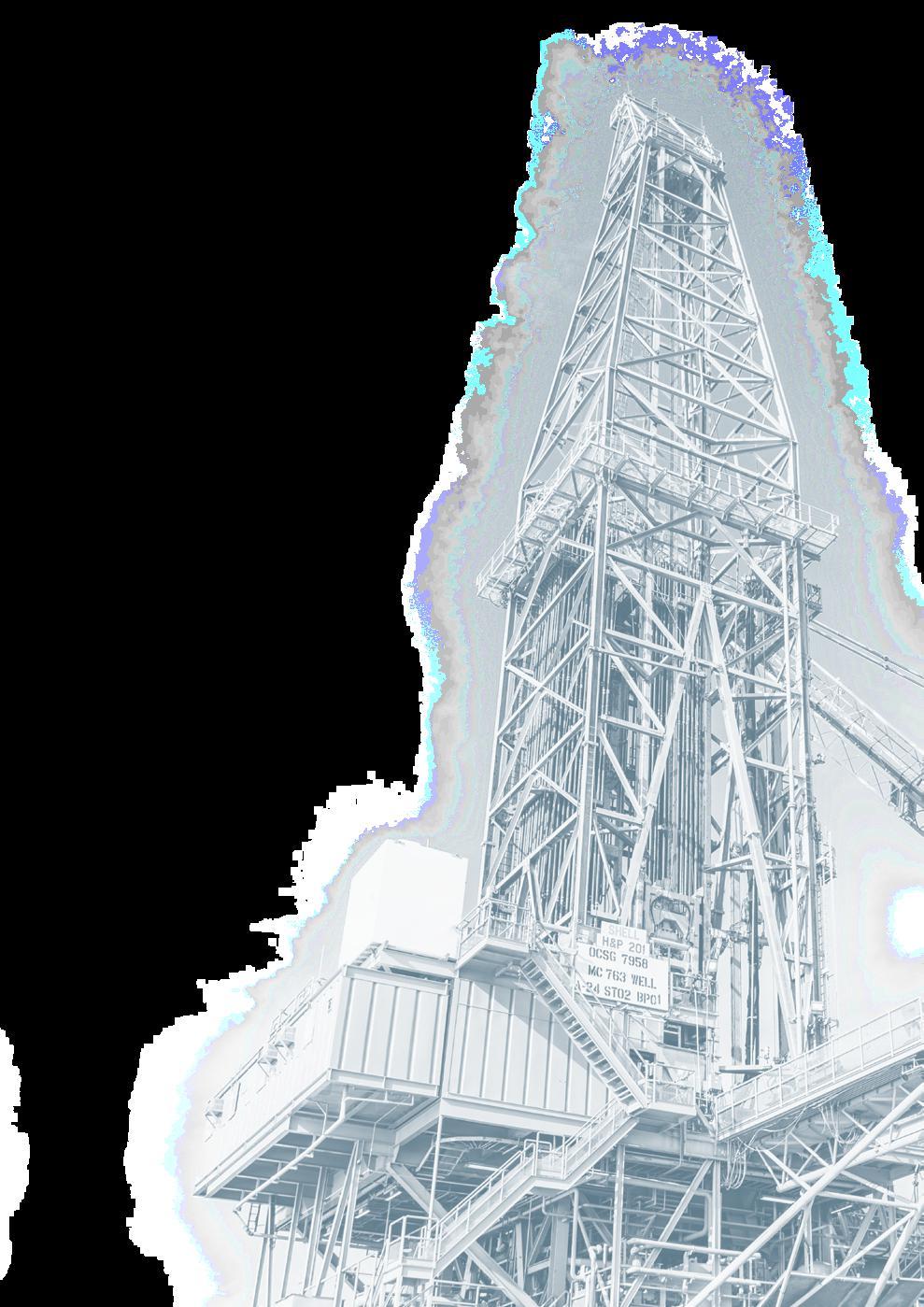
We seek to provide every employee with the necessary support to uphold ethical standards on an ongoing basis, and therefore provide periodic Code of Conduct trainings. Additionally, subject matter courses on topics such as anti-corruption, trade controls, and anti-discrimination and harassment are provided on an annual basis to applicable employees. Updated and periodic trainings on topics such as antitrust and insider trading provide greater awareness of our ethics and compliance program and confirm that all employees are made aware of our current policies.
Our commitment to ethical behavior is clearly documented in our policies. The Code of Business Conduct and Ethics (the “Code of Conduct”) provides employees with tools that enable them to make consistent, ethical decisions and emphasizes the duty to report any concerns or violations. The Code of Conduct also reflects every employee’s responsibility and commitment to each other, our customers, our suppliers, our shareholders, and the community. It is how we preserve our culture and guide our people in embodying the H&P Way, which builds upon our reputation of integrity, excellence, and ethical conduct. The Code of Conduct applies to all who work in any capacity for H&P, and each employee has the responsibility to know and apply the standards set within.
Periodically, all U.S.-based employees are required to re-certify that they have read, understand, and will abide by the Code of Conduct.
While all employees have a responsibility to act responsibly on an individual basis, employees are also responsible for holding others accountable, which includes reporting any violations for potential concerns, as well as helping to detect or prevent violations of the Code of Conduct. Our Whistleblower Policy prohibits the Company or any of its employees from retaliating or taking any adverse action against whistleblowers. Concerns may be submitted anonymously through the Ethics Hotline. H&P’s compliance department carefully monitors, tracks and delegates the investigation of allegations of violations of the Code of Conduct to the appropriate department. All ethics hotline complaints are shared with the chair of the Audit Committee in real time and significant complaints are reported to the Audit Committee at least on a quarterly basis. Employees can access the confidential ethics hotline at the Ethics Hotline webpage.
Political activity by our employees within their community is encouraged. However, such activities are only to be done using employee’s personal time and resources. Employees may not use their roles at H&P to explicitly or implicitly suggest that the Company shares their political views. More details about our Political Activity Policy can be found on our Corporate Governance Information webpage
In order to hold ourselves accountable to our Code of Business Conduct and Ethics, we have active Compliance and Internal Audit departments. Our Compliance Department is responsible for maintaining corporate policies including the Code of Conduct, training, high-risk vendor management, anti-corruption, trade compliance, and high-risk transaction monitoring. The activities of, and audits conducted by, the internal audit department serve to monitor and strengthen our corporate governance practices, as well as our internal controls and business and accounting processes — which ultimately results in increased compliance and higher accountability. Both our Compliance Department and internal audit functions have direct reporting lines to the Audit Committee to create transparency, oversight, and communication of these matters with our Board.
Our Vendor Code of Conduct outlines expectations and associated relevant information for our suppliers. All suppliers engaged in providing goods or services to H&P are expected to act in accordance with our Vendor Code of Conduct and comply with all applicable laws, rules, regulations, and standards within the jurisdictions in which they operate. More information on our supplier expectations and our approach to maintaining a sustainable supply chain can be found in the Suppliers section.
Enterprise Risk Management is guided by our ELT, which meets quarterly to review the enterprise risk register and to discuss additional risks and risk management activities. The Risk Management and Insurance Group maintains the risk register and initiates reviews and assessments. Enterprise Risk is a permanent agenda item for the Board of Directors and the Board Audit Committee meetings each quarter, who enact oversight on our risk management practices, including the ERM.
H&P maintains a separate register made up solely of risks that are owned, monitored, and mitigated by the Information Technology (IT) group and its Cybersecurity function. The IT group utilizes an external contractor to survey and monitor its network systems at the base level. We also deploy an internal team to focus on higher level threats and to conduct specific threat hunting activities.
As communicated in our annual report on Form 10-K (pg. 22), we believe a cyberattack could:
› disrupt our rig operations including operational technologies as well as our corporate information technology systems;


In 2020, H&P’s internal audit department began using a Governance, Risk, and Compliance (GRC) platform, and in late 2021, Enterprise Risk along with Cybersecurity and Compliance departments adopted the same GRC platform. When fully implemented, the platform will enable the sharing of risk information across the Company, reducing the tendency of risks and related management activities to become siloed.
H&P began its ERM journey in 2006, and the process has continued to develop intentionally. There are currently 26 main (“parent”) risks on our enterprise risk register across operations, safety, legal, regulatory, insurance, finance, and other strategic matters. Each parent risk is owned by one or more of the ELT members, and is informed by three or more “child” risks. The child risks are in-turn co-owned by two or more personnel selected by the ELT owners. Notably, each child risk is assigned key risk indicators and mitigation activities.
We document all 26 parent risks with a risk summary which defines the risk, highlights where the risk is mentioned in the Company’s 10-K risk factors, and includes every child risk and each of their owners, key risk indicators, and mitigation activities. Parent risks include those that specifically address health, safety, and environment, as well as governance and employment practices. Related to corporate sustainability, we also include a specific risk on the register pertaining to the management, adherence, and communication of ESG principles.
H&P’s Board, in addition to providing oversight to the entire ERM process, provided oversight to the review and identification of climate change-related risks that apply to H&P, which was part of our process in building a robust climate strategy and aligning with the TCFD. H&P takes climate-related risks into consideration within its broader business strategy and these risks are underpinned by our quantitative scenario analysis, which is described further in the Climate-related Risks & Opportunities section of the report.
The identified climate-related risks, which have been fully integrated into our ERM, include the following:
› Transition to a Low-Carbon Economy
› Regulatory Risks
› Operational and Incident-Based Risks
› Physical Risks
› negatively impact our ability to compete;
› enable the theft or misappropriation of funds;
› cause the loss, corruption or misappropriation of proprietary or confidential information;
› expose us to litigation, regulatory action, and potential liability; and
› result in injury to our reputation, downtime, loss of revenue, and increased costs to prevent, respond to or mitigate cybersecurity events.
During 2022, an average of 1,504 employees completed the 12 assigned IT training modules.
At H&P, we require all users to complete trainings geared to raise awareness of cyber risks and to eliminate behaviors that increase vulnerabilities. We also conduct periodic exercises to test IT security protocols and coordinate across the entire organization on initiatives aimed at maintaining appropriate crisis management and business continuity capabilities.
Further, dedicated intellectual property risk management includes training for appropriate personnel regarding patents and related processes and protocols. Our Technology Committee led by the SVPs of software, IT and engineers, and the general counsel, reviews new technologies and determines appropriate IP treatments. To assist the Technology Committee and supplement its decision practices, we also enlist specialized outside counsel.
While still in the early stages, this process is gaining more traction as usage increases and becomes more familiar. The GRC platform is currently being used to house the ERM risk register, enabling the risk team to easily modify changes in risk mitigation and ownership, as well as survey risk owners efficiently and accurately. ERM plans to survey risk owners twice per year using the GRC platform.
We also maintain a relationship with a GRC consulting group where several departments have access to resources, materials, training, and consultants across the spectrum of internal audit, cybersecurity, compliance, and enterprise risk. We also utilize the GRC consultant to administer an annual survey directed at a wider breadth of H&P management with the goal of detecting new risks and identifying areas of significant concern.
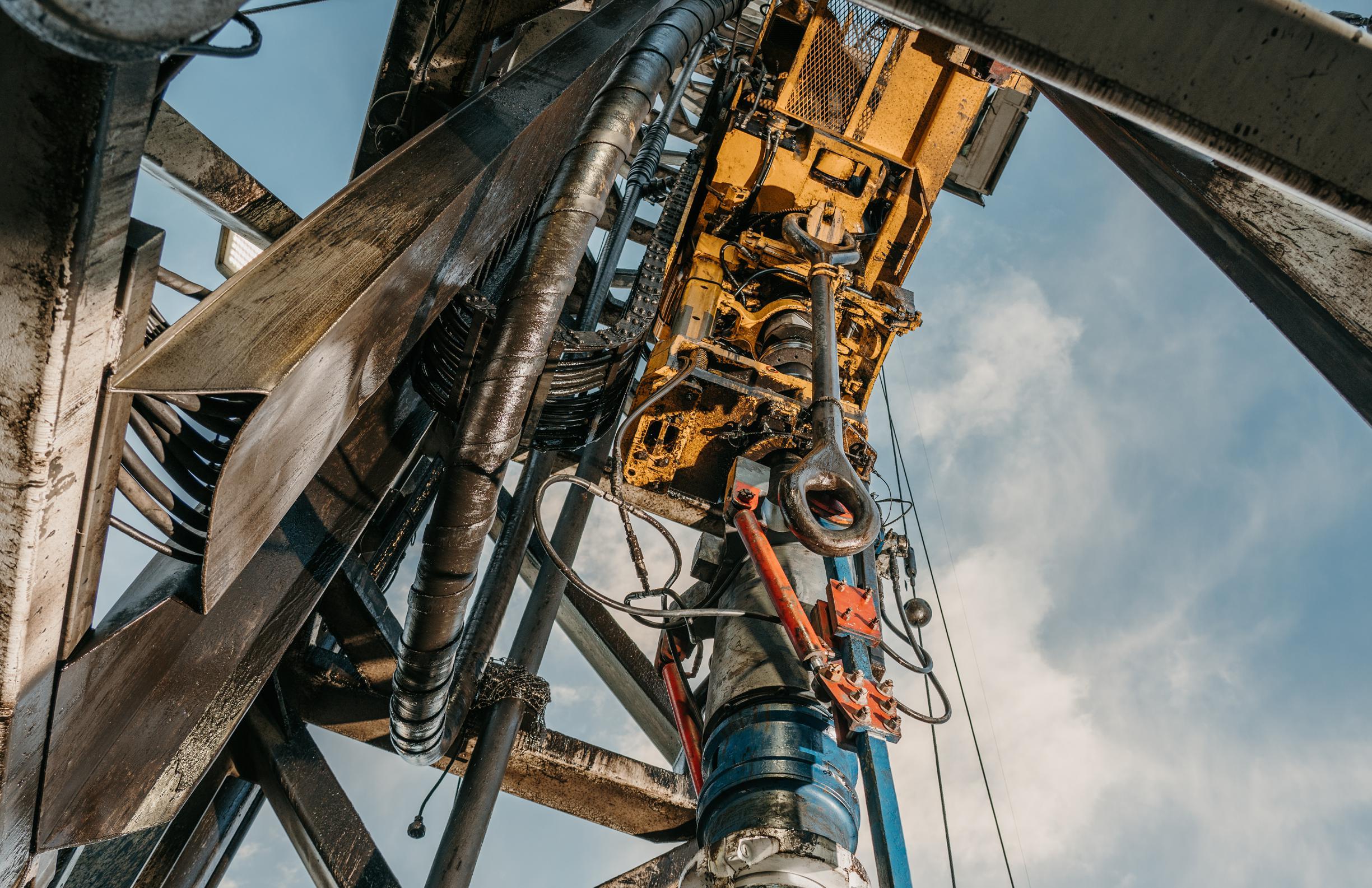
ACG Actively C.A.R.E. Goals
Actively C.A.R.E. Actively Control and Remove Exposures
API American Petroleum Institute
APS Announced Pledges Scenario
Backoffs or Sidetracks Occurs when the wellbore being drilled is off target or encounters unexpected geological formation and the drill bit is retracted to start an offset drill path
BHA Bottom-Hole Assembly
CEM Crisis and Emergency Management
CEMP Crisis and Emergency Management Plan
CIRT Cybersecurity Incident and Response Team
CMT Crisis Management Team
CO2e Carbon Dioxide Equivalent (includes all greenhouse gases listed calculated by utilizing equivalency factors as defined by the EPA)
CST Corporate Support Team
Curve The degree of which and the turn in the wellbore from vertical to lateral
DE&I Diversity, Equity, and Inclusion
Driller’s Select Tool which allows our employees to remotely start and stop rig engines
E&P Exploration & Production
EGS Enhanced Geothermal Systems
EGT Environmental Governance Team
ELT Executive Leadership Team
EMS Environmental Management System
ERG Employee Resource Group
ERM Enterprise Risk Management
ESG Environmental, Social, and Governance
FTE Full-Time Equivalent
GHG Greenhouse Gas
GJ Gigajoules
GRI Global Reporting Initiative
HAZCOM Hazard Communication
HAZWOPER Hazardous Waste Operations and Emergency Response
Highline efers to electrical power obtained from the installed electricity grip
Hitch Period of work on a rig
HSE Health, Safety, and Environmental
IEA International Energy Agency
IADC International Association of Drilling Contractors
IMT Incident Management Team
IPCC Intergovernmental Panel on Climate Change
LifeBelt Company’s safety rules that highlight actions that individuals must take to protect themselves and others from serious injury or fatality
LTIR Lost Time Incident Rate
NAS North America Solutions
NGFS Network for Greening the Financial System
NPT Nonproductive Time
NZE Net Zero Emissions by 2050 Scenario
Oil and Gas Refers to crude oil and natural gas, collectively called hydrocarbons
OSHA Occupational Safety and Health Administration
PJP Pre-Job Planning
QMS Quality Management System
Quantitative Scenario Analysis/QSA Quantitative assessment of physical and climate related risks and opportunities under future state climate scenarios and the impact on a given business
R&R Rewards & Recognition
ROP Rate of Penetration
RSMT Rig Safety Management Training
SASB Sustainability Accounting Standards Board
SDS Sustainable Development Scenario
SERTs Site Emergency Response Teams
SIF Serious Injury or Fatality
Slide Drilling the curve of the well
SLT Safety Leadership Team
SPCC Plans Spill Prevention, Control and Countermeasure Plans
SSE Short Service Employees
STEPS Stated Policies Scenario
STI Short-Term Incentives
TCFD Taskforce on Climate-Related Financial Disclosures
TCO2e Total Carbon Dioxide Equivalent
Tortuosity Measure of curving and bending in a wellbore
Trip or Tripping The removal and re-insertion of several pieces of drill pipe into a wellbore while drilling a well
TRIR Total Recordable Incident Rate
TVD Total Vertical Depth
WEO World Economic Outline
WHP-LA Women of H&P – Latin America
GENERAL FY 2020 FY 2021 FY 2022
Drilled Distance Kilometers 13,606 13,340 19,121
Total Employees2 Number 3,890 5,932 7,955
Total Contract Employees Number 434 328 544
Total Short-service Employees Number 57 901 1,111
Number of Wells Drilled5 Number 2,667 2,336 3,371
Total Hours Worked6 Number 14,754,461 11,450,065 15,186,432
Revenue Thousands USD 1,773,927 1,218,568 2,058,944
Amount of net revenue in countries that have the 20 lowest rankings in Transparency International’s Corruption Perception Index USD 0 0 0
Drilled
2018 - 2021 as published in the corresponding year's proxy; 2022 employee data is as of 9/30/22 as published the 10K.
Accounted for on 9/30 of each fiscal year; Includes employee type of consultant or contractor in Workday; Excludes temp agency worker.
4 Field employees with service less than six months accounted for on 9/30 of each fiscal year.
5 Number of wells drilled disclosed to represent SASB activity metric of 'Number of Active Rig Sites' (EM-SV-000.A).
6 Represents total hours worked for all employees.
GREENHOUSE GAS EMISSIONS FY 2020 FY 2021 FY 2022 2
Y-o-Y Change Scope 1 GHG Emissions Percentage (%) - -13.0% 46.8%
Y-o-Y Change Scope 2 GHG Emissions Percentage (%) - -7.6% 496.7%
Y-o-Y Change Scope 1 & 2 GHG Emissions Percentage (%) - -13.0% 50.6%
Total Scope 1 GHG Emissions Normalized by Drilling Activity3 Metric tons CO2e per Kilometer Drilled 62.1 55.1 56.5
Total Scope 1 & 2 GHG Emissions Normalized by Drilling Activity3 Metric tons CO2e per Kilometer Drilled 62.6 55.6 58.4
Y-o-Y Change Scope 1 GHG Emissions Normalized by Drilling Activity3 Percentage (%) - -11.3% 2.4%
Y-o-Y Change Scope 1 &2 GHG Emissions Normalized by Drilling Activity3 Percentage (%) - -11.2% 5.1%
Scope Emissions intensity TCO2e/$1K Revenue 0.48 0.60 0.52
Scope Emissions intensity TCO2e/Employee 217 124 136
Scope 2 Emissions intensity TCO2e/$1K in Revenue 0.004 0.005 0.018
Scope 2 Emissions intensity TCO2e/Employee 1.74 1.05 4.69
Scope 1+2 Emissions intensity TCO2e/$1K in Revenue 0.48 0.61 0.54
Scope 1+2 Emissions intensity TCO2e/Employee 219 125 140
4
FY 2020 FY 2021 FY 2022 2
Off-road Equipment Total Fuel Consumed Gigajoules (GJ) 11,673,391 10,148,137 15,096,906
% of Total Fuel Consumed by Off-road Equipment Percentage (%) 97.7% 97.6% 98.7%
% of Renewable Fuel Consumed by Off-road Equipment Percentage (%) 0% 0% 0%
% Renewable of Total Fuel Consumed by Off-road Equipment Percentage (%) 0% 0% 0%
On-road or Mobile Equipment Total Fuel Consumed Gigajoules (GJ) 276,302 247,070 194,668
% of Total Fuel Consumed by On-road or Mobile Equipment Percentage (%) 2.3% 2.4% 1.3%
% of Renewable Fuel Consumed by On-road or Mobile Equipment Percentage (%) 5.5% 5.2% 6.3%
% Renewable of Total Fuel Consumed by On-road or Mobile Equipment Percentage (%) 0.1% 0.1% 0.1%
Total Diesel Consumption Gigajoules (GJ) 11,728,597 10,209,507 14,985,265
Total Gasoline Consumption Gigajoules (GJ) 197,654 167,040 159,686
Total Ethanol Consumption Gigajoules (GJ) 15,289 12,889 12,315
Total Natural Gas Consumption Gigajoules (GJ) 24,611 27,352 150,204
Total Other Gas Consumption Gigajoules (GJ) 168 109 2,878
Total Biomass Woodchip Consumption Gigajoules (GJ) 31 26 34
Total Jet Fuel Consumption Gigajoules (GJ) 7,984 5,661 9,785
Total Electricity Consumption Gigajoules (GJ) 51,967 45,560 325,835
% Renewable of Total Fuel Consumed Percentage (%) 0.1% 0.1% 0.1%
Total Fuel Consumption Gigajoules (GJ) 11,949,692 10,395,207 15,291,574
Total Energy Consumption Gigajoules (GJ) 12,026,301 10,468,145 15,646,001
Total Energy Consumption Normalized by Drilling Activity 3 Gigajoules (GJ) per Kilometer Drilled 884 785 818
Y-o-Y Change in Total Energy Consumption Normalized by Drilling Activity3 Percentage (%) - -11.2% 4.3%
Percentage of engines in service that meet Tier 4 compliance for non-road diesel engine emissions Percentage (%) - 25% 25%
FY 2020 FY 2021 FY 2022
New Employee Safety Training for Short Service (SSE) Employees Hours 15 15 15
Driller 101 Training Participants Number 105 278 454
Derrickman 101 Training Participants 13 Number - - 831
Motorman 101 Training Participants Number 136 241 709
Well Control Certification Training Hours 24 24 24
Well Control Certification Participants Number 573 638 849
Emissions measured, calculated, or estimated utilizing methods from the GHG Protocol Corporate Standard with emissions factors as defined by the EPA and other sources; Includes all emissions associated with H&P operations as listed by the operational control boundary definition; CO 2e includes all greenhouse gases listed calculated by utilzing equivalency factors as defined by the EPA; Rig engine CO 2e emissions calculated using Original Equipment Manufacturer (OEM) emissions specifications from engine load and/or amount of fuel consumed; Fleet vehicle emissions calculated from fuel purchase data and/or fuel economy estimates for mileage driven; Scope 1 emissions boundaries are as follows: Sources we own, rent for on-site sources, and /or control opertionally which are directly related to domestic and internal (land and offshore) drilling solutions; Customers may account for emissions listed as their own.
Includes incremental enhancements made to GHG emissions inventory which contains additions not present in previous year totals and improvements in calculation methodologies. Year over year changes may not represent direct inventory comparisons. For example, methodologies to account for rigs running on highline electrical power were implemented in FY2022 moving their emissions from Scope 1 to Scope 2 calculations in accordance with Scope definitions.
Distance drilled for NAS only; NAS revenue accounted for approximately 87% of the total in FY2022.
4 Energy consumption for electricity and fuels derived from same methods used to account for scope 1 and 2 GHG emissions; Total fuel consumption excludes fuel used in scope 2 emissions inventory.
5 Spills listed are those which H&P was required to report to the necessary government agencies in each state.
6 Reportable spill incidents per 200,000 hours worked.
As a contractor, H&P does not manage the disturbance of land associated with drilling an oil or gas well site.
8 Scope 2 emissions are calculated using both the location-based method and market-based method from the GHG Protocol Corporate Standard. Because the difference between LBM and MBM are insignificant, one value is reported.
HEALTH
SIF Potential (Incidents per 200,000 hours worked) 1.17 1.10 1.22
SIF Mitigated (Incidents per 200,000 hours worked) 0.46 0.52 0.47
SIF Actual (Incidents per 200,000 hours worked) 0.03 0.00 0.01
Y-o-Y Change in SIF Actual Safety Incidents (Incidents per 200,000 hours worked) - -100% -
FTE Total Recordable Incident Rate (TRIR) (Incidents per 200,000 hours worked) 1.10 1.50 2.16
Total Recordable Incidents Number of Incidents - - 164
FTE Lost-Time Incident Rate (LTIR) (Incidents per 200,000 hours worked) 0.22 0.61 0.57
Total Lost-Time Incidents Number of Incidents - - 43
FTE Fatality rate (Incidents per 200,000 hours worked) 0.00 0.00 0.01
Total Fatalities Number of Incidents - - 1
FTE Near miss frequency rate (NMFR) (Incidents per 200,000 hours worked) 3.36 2.76 2.58
FTE Total vehicle incident rate (TVIR) (Incidents per 200,000 hours worked) 1.46 1.33 1.00
Percentage of all employees and contractors who are covered by internally audited health and safety management system Percentage (%) 100% 100% 100%
Coach Training Participants Number 914 2,637 2,319
Change Champion Training Hours 68 52 56
Change Champion Graduates Number 68 76 62
HSE Recognition & Rewards Granted 2 Number 10,163 7,312 17,026
Environmental Training
Average Employees in Attendance for Environmental and Emergency Response Trainings Number 4,906 2,727 5,644
Minimum Safety Training for Field Employees Hours 26 26 26
Minimum Safety Training for Short Service Field Employees (SSE) 4,5 Hours 28 28 28
Average Hours of Ethics & Compliance Training for FTE Number 2.25 1.5 1
% of FTE Ethics & Compliance Training Compliance Percentage (%) 100% 100% 100%
% of Required Employees who Complete Anti-Corruption Training Percentage (%) 100% 100% 100%
% of Required Employees who Complete Trade Compliance Training Percentage (%) 100% 100% 100%
% of Required Employees who Complete Anti-Discrimination & Harassment Training 7 Percentage (%) 100% 100% 100%
% of Required Employees who Complete Insider Trading Percentage (%) 100% 100% 100%
% of Required Employees who Complete Code of Conduct Training 7 Percentage (%) 100% 100% 100%
% of Required Employees who Complete Anti-Trust Training Percentage (%) N/A N/A 100%
Average Number of Employees who Completed the Annual IT Compliance Training Modules 8 Number 874 699 1504
RETENTION & RECRUITMENT (DOMESTIC ONLY)
FY 2020 FY 2021 FY 2022
Total New Hires Number 2,139 1,355 3,034
Total New Hires Percentage (%) of Workforce 55.0% 22.8% 38.1%
DIVERSITY & INCLUSION8
FY 2020 FY 2021 FY 2022
Women Representation of Employees 10 Percentage (%) 6.2% 5.4% 4.4%
Men Representation of Employees 10 Percentage (%) 93.8% 94.3% 94.2%
Not Disclosed (All Employees) Percentage (%) - - 1.4%
Women Representation in Corporate Office Percentage (%) 33.7% 31.1% 30.3%
Men Representation in Corporate Office Percentage (%) 66.3% 68.9% 69.5%
Women Representation in Senior Management Positions 11 Percentage (%) 13.2% 19.6% 20.5%
Men Representation in Senior Management Positions 11 Percentage (%) 86.8% 80.4% 79.5%
Women Representation in All Management Positions 11 Percentage (%) 5.7% 6.3% 5.9%
Men Representation in All Management Positions 11 Percentage (%) 94.3% 93.7% 94.1%
Representation of all employees (%)
Total U.S. Employees Represented by Minority Groups Percentage (%) 30.5% 33.6% 38.1%
White Percentage (%) 69.5% 66.2% 59.7%
Asian Percentage (%) 1.0% 0.8% 0.6%
Hispanic/Latino
Percentage (%) 20.5% 23.8% 26.2%
Black or African American Percentage (%) 5.6% 5.4% 7.6%
Other Ethnicities 12 Percentage (%) 3.4% 3.5% 3.7%
Not Disclosed Percentage (%) - - 2.2%
Representation in field positions (%)
Total Field Employees Represented by Minority Groups Percentage (%) 31.5% 35.2% 39.6%
White Percentage (%) 68.4% 64.6% 58.1%
Asian Percentage (%) 0.2% 0.1% 0.1%
Hispanic/Latino
Percentage (%) 22.8% 26.4% 28.1%
Black or African American Percentage (%) 5.9% 5.8% 8.1%
Other Ethnicities 12
Percentage (%) 2.7% 2.9% 3.3%
Not Disclosed Percentage (%) - - 2.3%
DIVERSITY & INCLUSION8 FY 2020 FY 2021 FY 2022
Representation in corporate office (%)
Total Corporate Office Employees Represented by Minority Groups Percentage (%) 23.0% 22.3% 24.0%
White
Asian
Hispanic/Latino
Percentage (%) 76.9% 77.5% 75.0%
Percentage (%) 6.2% 5.7% 5.7%
Percentage (%) 5.2% 5.6% 7.2%
Black or African American Percentage (%) 3.9% 3.1% 2.7%
Other Ethnicities11
Percentage (%) 7.7% 7.9% 8.3%
Not Disclosed Percentage (%) - - 1.1%
Representation in senior management positions (%)
Total Senior Management Employees Represented by Minority Groups Percentage (%) 10.2% 12.5% 15.8%
White
Percentage (%) 89.8% 86.1% 80.7%
Asian Percentage (%) 2.6% 1.9% 1.9%
Hispanic/Latino
Black or African American
Other Ethnicities11
Not Disclosed
Representation in all management positions (%)
Percentage (%) 0.0% 2.3% 5.4%
Percentage (%) 0.0% 0.0% 0.0%
Percentage (%) 7.7% 8.3% 8.5%
Percentage (%) - - 3.5%
Total All Management Employees Represented by Minority Groups Percentage (%) 21.1% 20.2% 20.5%
White
Asian
Hispanic/Latino
Black or African American
Other Ethnicities 12
Not Disclosed
For rig managers and drillers required bi-yearly.
Percentage (%) 78.8% 79.4% 77.3%
Percentage (%) 0.6% 0.4% 0.3%
Percentage (%) 15.5% 13.8% 15.4%
Percentage (%) 2.1% 2.5% 1.9%
Percentage (%) 2.9% 3.4% 2.9%
Percentage (%) - - 2.2%
All employees are eligible to receive HSE R&R awards and can be recognized multiple times in a year.
Average employee attendance is represented by average number trainings completed for HAZCOM, HAZWOPER, SPCC and Emergency Response Trainings.
4 NAS and South America field employees only; Weekly Rig Management Safety Training (RSMT) provided for all field employees which includes various safety and development topics.
5 SSE defined as less than 6 months experience; Training includes RSMT and New Employee Safety Training.
6 Training on odd ending years is typically digital and thus overall time is less than in-person.
Training for this topic was assigned to specific employees who work in positions that require it.
8 IT training completion represents the average number of training modules completed by selected employees across the required annual IT modules; The following breakdowns the module offering count by year - 2020: 12 modules; 2021: 12 modules; 2022: 12 modules.
9 Total U.S. workforce unless indicated otherwise.
10 Fiscal year 2021 does not add up to 100% because of non-response from employees.
11 Management level definitions were standardized for 2020; Best equivalent positions including Director, Vice President and President were used for 2018-2019 data.
12 Includes two or more races, American Indian or Alaska Native and Native Hawaiian or Pacific Islander.
13 New in FY2022.
BOARD
Board of Directors average age Number 64.6 65.1 65.8
Board of Directors average tenure Number 13.1 12 13
Board of Director gender representation Percentage (%) 18% 17% 17%
Board of Director diversity representation Percentage (%) 9% 17% 17%
# of independent Directors Number 9 10 10 Based
2022 ACTIVELY C.A.R.E. Goal: Reduce the Amount of GHG Emissions per 1,000 Feet Drilled by 5%. 2022 GHG Emissions per 1,000 Feet Drilled Ongoing Commitment
2022 Key Result: Reduce excess engine runtime per 1,000 feet drilled by 10%1 2022 Excess Rig Engine Runtime Reduction (%) Complete and Continued 2023 Focus
2022 Key Result: Implement engine roadmaps and achieve 80% utilization on H&P Rigs 2022 New technologies implemented Complete
2022 Key Result: Implement New Technology to Improve Rig Efficiency 2022 Not Quantified Complete and Continued 2023 Focus
2022 Key Result: Achieve a completion rate of 100% for quarterly environmental 2022 Environmental trainings completion rate (%) Partial and Continued 2023 Focus
2023 ACTIVELY C.A.R.E Goal: Reduce the amount of GHG emissions per drilled distance by a base of 1% with a stretch goal of 2% 2023 GHG emissions per drilled distance (%) New Goal
2023 Key Result: Implement Driller’s Select on 100 rigs 2023 Number of rigs with Driller’s Select Implemented New Goal
2023 Key Result: Achieve 80% of active rigs running below 30% average excess engine hours during fiscal Q2-Q4 2023 % of active rigs running below 30% average excess engine hours New Goal
2023 Key Result: Achieve a completion rate of 98% for assigned GHG emissions training 2023 Completion rate (%) of assigned GHG emissions training New Goal
2023 Key Result: Improve winterization emissions measurement capabilities and build winterization roadmaps 2023 Not quantified New Goal
2023 Key Result: Validate emissions and fuel data with empirical testing by end of FY 2023 2023 Not quantified New Goal
2022 ACTIVELY C.A.R.E. Goal: Reduce Unmitigated SIF Incidents On Rigs Within The First 90 Days Of Being Recommissioned By 10% 2022 Unmitigated SIF Incidents On Rigs (%) Complete
2022 ACTIVELY C.A.R.E. Goal: Reduce The Rate Of Unmitigated SIF Incidents Involving Tubular Handling By 10% 2022 Tubular Handling Rate Of Unmitigated SIF Incidents (%) Partial and Continued 2023 Focus
2022 ACTIVELY C.A.R.E. Goal: Reduce The Rate Of Unmitigated SIF Incidents Involving Dropped Objects By 10% 2023 Dropped Object Rate Of Unmitigated SIF Incidents (%) Partial and Continued 2023 Focus
2023 ACTIVELY C.A.R.E. Goal: Reduce Rate of Unmitigated SIF Incidents Involving LifeBelt Breakdown by 15% 2023
Unmitigated SIF Incidents Involving LifeBelt Breakdown (%) New Goal
2023 Key Result: Provide training on H&P’s lifebelts along with expectations for H&P personnel that have completed the training in the past to re-establish their knowledge of LifeBelts by February 1st, 2023 2023 Not quantified New Goal
2023 Key Result: Provide rig crews with efficient and reliable Pre-Job Planning (PJP) tools by the end of Q2 2023. 2023 Not quantified New Goal
2023 Key Result: Implement technology solutions to address Line of Fire, Dropped Object, and tubular Handling incidents by the end of Q4 of 2023. 2023 Not quantified New Goal
2023 Key Result: Audit existing fall protection systems to identify opportunities to improve training, situational awareness, fall protection anchors and address situations in which 100% tie-off is not possible. 2023 Not quantified New Goal
Excess engine run time is defined as any time engines are running for more than two hours when fewer engines could run and not exceed 100% load.
Environment > Environmental Management >
a. Describe the organization’s governance around climate-related risks and opportunities.
Environmental Oversight
Environment > Climate Strategy and Assessment > Climate Risk Management & Governance Governance > Risk Management
Environment > Environmental Management >
EM-SV-110a.1 Total fuel consumed, percentage renewable, percentage used in: (1) on-road equipment and vehicles and (2) off-road equipment
b. Describe management’s role in assessing and managing climate-related risks and opportunities.
a. Describe the climate-related risks and opportunities the organization has identified over the short, medium, and long term.
Environmental Oversight Environment > Climate Strategy and Assessment > Climate Risk Management & Governance Governance > Risk Management
Environment > Climate Strategy and Assessment > Climate-related Risks & Opportunities 10-K > Pages 27-28
Strategy
b. Describe the impact of climate-related risks and opportunities on the organization’s businesses, strategy, and financial planning.
c. Describe the resilience of the organization’s strategy, taking into consideration different climaterelated scenarios, including a 2°C or lower scenario.
Environment > Climate Strategy and Assessment > Climate-related Risks & Opportunities
Environment > Climate Strategy and Assessment > Risk Mitigation & Opportunity Capitalization
Environment > Climate Strategy and Assessment > Strategy & Resiliency Assessment
Sustainability Oversight
a. Describe the organization’s processes for identifying and assessing climate-related risks.
Environment > Environmental Management Environment > Climate Strategy and Assessment > Climate-related Risks & Opportunities Environment > Climate Strategy and Assessment > Climate Risk Management & Governance Governance > Risk Management
Sustainability Oversight
b. Describe the organization’s processes for managing climate-related risks.
Environment > Environmental Management Environment > Climate Strategy and Assessment > Risk Mitigation & Opportunity Capitalization
Environment > Climate Strategy and Assessment > Climate Risk Management & Governance Governance > Risk Management
Sustainability Oversight
c. Describe how processes for identifying, assessing, and managing climate-related risks are integrated into the organization’s overall risk management.
a. Disclose the metrics used by the organization to assess climate-related risks and opportunities in line with its strategy and risk management process.
Environment > Environmental Management Environment > Climate Strategy and Assessment > Risk Mitigation & Opportunity Capitalization
Environment > Climate Strategy and Assessment > Climate Risk Management & Governance Governance > Risk Management
Environment > Climate Strategy and Assessment >
Environmental Metrics & Targets Indexes & Data > Performance Data > Environmental Data
b. Disclose Scope 1, Scope 2 and, if appropriate, Scope 3 greenhouse gas (GHG) emissions and the related risks.
c. Describe the targets used by the organization to manage climate-related risks and opportunities and performance against targets.
Indexes & Data > Performance Data > Environmental Data
Environment > Environmental Goals Indexes & Data > Performance Data > Environmental Data Indexes & Data > Performance Data > Goal Performance Data
Quantitative
Indexes & Data > Performance Data > Environmental Data
EM-SV-110a.2 Discussion of strategy or plans to address air emissions-related risks, opportunities, and impacts Discussion & Analysis Environment > Environmental Management Environment > Climate Strategy and Assessment
EM-SV-110a.3 Percentage of engines in service that meet Tier 4 compliance for non-road diesel engine emissions Quantitative Indexes & Data > Performance Data > Environmental Data
EM-SV-140.1 (1) Total volume of fresh water handled in operations, (2) percentage recycled Quantitative Indexes & Data > Performance Data > Environmental Data
EM-SV-140.2 Discussion of strategy or plans to address water consumption and disposal-related risks, opportunities, and impacts Discussion & Analysis Environment > Environmental Management > Water Management
EM-SV-150a.1 Discussion of strategy or plans to address chemicalrelated risks, opportunities, and impacts Discussion & Analysis Environment > Environmental Management > Water Management
EM-SV-150a.2 Volume of hydraulic fracturing fluid used; percentage hazardous Quantitative
N/A: H&P’s operations do not include hydraulic fracturing, and therefore H&P does not use hydraulic fracturing fluid.
EM-SV-160a.1 Average disturbed acreage per (1) oil and (2) gas well site Quantitative N/A: Management of disturbed acreage per oil and gas well site is outside of H&P’s operational control.
EM-SV-160a.2
EM-SV-320a.1
Discussion of strategy or plan to address risks and opportunities related to ecological impacts from core activities Discussion & Analysis
(1) Total recordable incident rate (TRIR), (2) fatality rate, (3) near miss frequency rate (NMFR), (4) total vehicle incident rate (TVIR), and (5) average hours of health, safety, and emergency response training for (a) full-time employees, (b) contract employees, and (c) short-service employees
EM-SV-320a.2
Environment > Environmental Management > Biodiversity Management Environment > Climate Strategy and Assessment
Quantitative Indexes & Data > Performance Data > Social Data
Description of management systems used to integrate a culture of safety throughout the value chain and project lifecycle Discussion & Analysis
EM-SV-510a.1 Amount of net revenue in countries that have the 20 lowest rankings in Transparency International’s Corruption Perception Index
EM-SV-510a.2
EM-SV-530a.1
EM-SV-540a.1
Employees > Health and Safety Environment > Environmental Management > Processes and HSE Policy
Quantitative Indexes & Data > Performance Data > Social Data
Description of the management system for prevention of corruption and bribery throughout the value chain Discussion & Analysis
Governance > Ethics and Compliance Employees > Workforce Development
Discussion of corporate positions related to government regulations and/or policy proposals that address environmental and social factors affecting the industry Discussion & Analysis 10-K > Business > Government Regulations (Pages 16-17)
Description of management systems used to identify and mitigate catastrophic and tail-end risks Discussion & Analysis
Governance > Risk Management Environment > Environmental Management > Processes and HSE Policy
SASB - ACTIVITY METRICS
SASB CODE ACTIVITY METRIC DISCLOSURE TYPE REQUIRED DISCLOSURES
EM-SV-000.A Number of active rig sites
EM-SV-000.B Number of active well sites
EM-SV-000.C Total amount of drilling performed
EM-SV-000.D Total number of hours worked by all employees
Quantitative 10-K > Pages 7-9, 38
Quantitative N/A: The number of active well sites is not relevant to H&P’s operational control.
Quantitative Indexes & Data > Performance Data > Environmental Data
Quantitative Indexes & Data > Performance Data > General Data
ORGANIZATIONAL PROFILE AND RELATED DISCLOSURES METRIC / DISCUSSION ITEM DISCLOSURES
Certain materials throughout this ESG report and the below table reference GRI 2016 Standards including 102-1 – Name of the organization, 102-2 – Activities, brands, products, and services, 102-3 – Location of Headquarters, 102-4 – Location of Operations, 102-5 – Ownership and Legal Form, 102-6 – Markets Served, 102-7 – Scale of the Organization, 102-8 – Information on Employees and Other Workers, 102-9 – Supply Chain, 102-10 – Significant Changes To The Organization And Its Supply Chain, 102-11 – Precautionary Principle or Approach, 102-12 – External Initiatives, 10213 – Membership of Associations, 102-14 – Statement from Senior Decision Maker, 102-15 – Key impacts, risks, and opportunities, 102-16 – Values, principles, standards, and norms of behavior, 102-17 – Mechanisms for advice and concerns about ethics, 102-18 – Governance structure, 102-19 – Delegating authority, 102-20 – Executive-level responsibility for economic, environmental, and social topics, 102-21 – Consulting stakeholders on economic, environmental, and social topics, 102-22 – Composition of the highest governance body and its committees, 102-23 – Chair of the highest governance body, 102-24 – Nominating and selecting the highest governance body, 102-25 – Conflicts of interest, 102-26 – Role of highest governance body in setting purpose, values, and strategy, 102-27 – Collective knowledge of highest governance body, 102-28 – Evaluating the highest governance body’s performance, 102-29 – Identifying and managing economic, environmental, and social impacts, 102-30 – Effectiveness of risk management processes, 102-31 – Review of economic, environmental, and social topics, 102-32 – Highest governance body’s role in sustainability reporting, 102-33 – Communicating critical concerns ,102-35 – Remuneration policies, 102-36 – Process for determining remuneration, 102-37 – Stakeholders’ involvement in remuneration, 102-38 – Annual total compensation ratio, 102-39 – Percentage increase in annual total compensation ratio, 102-56 – External assurance, 103-2 – The management approach and its components, 201-2 – Financial implications and other risks and opportunities due to climate change, 201-3 – Defined benefit plan obligations and other retirement plans, 207-1 – Approach to Tax, 205-2 – Communication and training about anti-corruption policies and procedures, 302-1 – Energy Consumption within the Organization, 302-4 –Energy Reduction of energy consumption, 303-1 – Interactions with water as a shared resource, 304-1 – Significant impacts of activities, products, and services on biodiversity, 305-1 – Direct (Scope 1) GHG emissions, 305-2 – Energy indirect (Scope 2) GHG emissions, 305-4 – GHG emissions intensity, 305-5 – Reduction of GHG emissions, 403-2 – Hazard identification, risk assessment, and incident investigation, 403-3 – Occupational health services, 403-4 – Worker participation, consultation, and communication on occupational health and safety, 403-5 – Worker training on occupational health and safety, 403-6 – Promotion of worker health, 403-7 – Prevention and mitigation of occupational health and safety impacts directly linked by business relationships, 403-8 – Workers covered by an occupational health and safety management system, 403-9 – Workrelated injuries, 404-2 – Training and Education Programs for upgrading employee skills and transition assistance programs, 405-1 – Diversity of governance bodies and employees, 408-1 – Operations and suppliers at significant risk for incidents of child labor, 409-1 – Operations and suppliers at significant risk for incidents of forced or compulsory labor, 415-1 – Political contributions.
102-1 Organizational Profile Name of the organization 10-K 102-2 Organizational Profile Activities, brands, products, and services 10-K > Page 6 102-3 Organizational Profile Location of Headquarters 10-K 102-4 Organizational Profile Location of Operations 10-K 102-5 Organizational Profile Ownership and Legal Form 10-K > Page 6 102-6 Organizational Profile Markets Served Intro > About Helmerich & Payne 10-K> Page 6 102-7 Organizational Profile Scale of the Organization Intro > About Helmerich & Payne 10-K > Page 6 102-8 Organizational Profile Information on Employees and Other Workers Intro > About Helmerich & Payne Indexes & Data > Performance Data > General Data 102-9
GOVERNANCE METRIC / DISCUSSION ITEM DISCLOSURES
GOVERNANCE METRIC /
102-18 Governance Governance structure Proxy > Pages 23-29 102-19 Governance Delegating authority Environment > Climate Strategy and Assessment Governance > Risk Management 102-20 Governance Executive-level responsibility for economic, environmental, and social topics
Sustainability Oversight
Environment > Environmental Management > Environmental Oversight Environment > Climate Strategy and Assessment Employees > Diversity, Equity, & Inclusion Governance > Risk Management 102-21 Governance Consulting stakeholders on economic, environmental, and social topics
Environment > Climate Strategy and Assessment Governance > Risk Management Proxy > Page 30 102-22 Governance Composition of the highest governance body and its committees
Governance > Corporate Governance > Board Composition Governance > Corporate Governance > Board Committees 102-23 Governance Chair of the highest governance body Governance > Corporate Governance > Board Committees Proxy > Page 27 102-24 Governance Nominating and selecting the highest governance body Governance > Corporate Governance > Board Committees Proxy > Pages 10, 29 102-25 Governance Conflicts of interest Code of Business Conduct and Ethics 102-26 Governance Role of highest governance body in setting purpose, values, and strategy
Sustainability Oversight Environment > Climate Strategy and Assessment 102-27 Governance Collective knowledge of highest governance body
Sustainability Oversight
Environment > Climate Strategy and Assessment > Climate Risk Management & Governance Governance > Corporate Governance > Board Composition Proxy > Page 27 102-28 Governance Evaluating the highest governance body’s performance
Governance > Corporate Governance > Board Committees Proxy > Pages 4, 41-69
Sustainability Oversight Environment > Climate Strategy and Assessment Governance > Risk Management 102-30 Governance Effectiveness of risk management processes Governance > Risk Management
102-29 Governance Identifying and managing economic, environmental, and social impacts
102-31 Governance Review of economic, environmental, and social topics
Sustainability Oversight Environment > Climate Strategy and Assessment Governance > Risk Management 102-32 Governance Highest governance body’s role in sustainability reporting
Sustainability Oversight Environment > Climate Strategy and Assessment 102-33 Governance Communicating critical concerns Governance > Ethics & Compliance 102-35 Governance Remuneration policies
Governance > Corporate Governance > Compensation Proxy > Pages 41-69 102-36 Governance Process for determining remuneration Governance > Corporate Governance > Compensation 102-37 Governance Stakeholders’ involvement in remuneration
Governance > Corporate Governance > Compensation Proxy > Pages 41-69 102-38 Governance Annual total compensation ratio
Governance > Corporate Governance > Compensation Indexes & Data > Performance Data > Governance Data Proxy > Page 67
Ernst & Young LLP
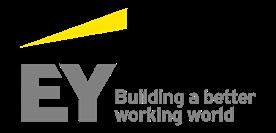
1700 One Williams Ctr. Tulsa, OK 74172
To the Management of Helmerich & Payne, Inc.

We have reviewed Helmerich & Payne, Inc.’s (the “Company”) accompanying schedules of selected sustainability indicators included in Appendix A (the “Subject Matter”) for the year ended September 30, 2022, in accordance with the criteria also set forth in Appendix A (the “Criteria”). Helmerich & Payne, Inc.’s management is responsible for the Subject Matter in accordance with the Criteria. Our responsibility is to express a conclusion on the Subject Matter based on our review.
Our review was conducted in accordance with attestation standards established by the American Institute of Certified Public Accountants (AICPA) AT-C section 105, Concepts Common to All Attestation Engagements, and AT-C section 210, Review Engagements. Those standards require that we plan and perform our review to obtain limited assurance about whether any material modifications should be made to the Subject Matter in order for it to be in accordance with the Criteria. The procedures performed in a review vary in nature and timing from and are substantially less in extent than, an examination, the objective of which is to obtain reasonable assurance about whether the Subject Matter is in accordance with the Criteria, in all material respects, in order to express an opinion. Accordingly, we do not express such an opinion. Because of the limited nature of the engagement, the level of assurance obtained in a review is substantially lower than the assurance that would have been obtained had an examination been performed. As such, a review does not provide assurance that we became aware of all significant matters that would be disclosed in an examination. We believe that the review evidence obtained is sufficient and appropriate to provide a reasonable basis for our conclusion.
We are required to be independent of Helmerich & Payne, Inc. and to meet our other ethical responsibilities, in accordance with the relevant ethical requirements related to our review engagement. Additionally, we have
Tel: +1 918 560 3600
Fax: +1 918 560 3691 ey.com
complied with the other ethical requirements set forth in the Code of Professional Conduct and applied the Statements on Quality Control Standards established by the AICPA.
The procedures we performed were based on our professional judgment. Our review consisted principally of applying analytical procedures, making inquiries of persons responsible for the subject matter, obtaining an understanding of the data management systems and processes used to generate, aggregate and report the Subject Matter and performing such other procedures as we considered necessary in the circumstances.
As described in Appendix A, the Subject Matter is subject to measurement uncertainties resulting from limitations inherent in the nature and the methods used for determining such data. The selection of different but acceptable measurement techniques can result in materially different measurements. The precision of different measurement techniques may also vary.
The information included in the Helmerich & Payne, Inc. 2022 Sustainability Report and the Helmerich & Payne, Inc. 2022 Sustainability Performance Data Sheet, other than the Subject Matter, has not been subjected to the procedures applied in our review and, accordingly, we express no conclusion on it.
Based on our review, we are not aware of any material modifications that should be made to the accompanying schedules of selected sustainability indicators included in Appendix A for the year ended September 30, 2022, in order for the schedules to be in accordance with the Criteria. December 8, 2022
Full-time equivalent (FTE) fatality rate2, 3, 9 0.01 Fatalities per 100 employees
Global Reporting Initiative (GRI) Standard 403-9 (a)(i): Work- related injuries Fatalities as a result of work-related injuries 1 Fatality
FTE total recordable incident rate (TRIR)4, 5, 6, 9 2.16
Recordable incidents per 100 employees GRI Standard 403-9 (a)(iii): Work- related injuries
Recordable work-related injuries5, 6 164 Recordable Incidents
FTE lost-time incident rate (LTIR) 0.57 Lost-time incidents per 100 employees FTE lost-time incident rate is defined as the number of lost-time incidents8 multiplied by 200,000 and divided by the number of employee hours worked.
Lost-time work-related incidents 43 Lost-time incidents
Reporting boundary: H&P includes employees (salaried and hourly) and contractors that H&P directly supervises in its calculation.
H&P’s Reported Value for Select Safety Metrics were determined as of November 4, 2022 for the fiscal year ended September 30, 2022.
2 H&P calculates its fatality rate by dividing the number of work-related fatalities by the number of total hours worked and multiplying the quotient by 200,000.
3 H&P defines a “fatality” as any occupational injury or illness that results in a death.
4 H&P calculates its TRIR by dividing the number of recordable work-related incidents by the number of total hours worked and multiplying the quotient by 200,000.
5 H&P defines a “recordable incident” as any occupational injury or illness that results in the following:
• Fatalities, regardless of the time between the injury and death, or the length of the illness; or Days away from work cases, other than fatalities; or Non-fatal cases without days away from work that: – Result in transfer to another job or termination of employment
– Require medical treatment (other than first aid)
– Involve loss of consciousness
– Result in restriction of work or motion
6 The number of recordable incidents is based upon employees self-reporting work-related injuries or illnesses which may be affected by culture, societal norms, and/or regulations. To the extent a recordable incident is not self-reported, it would not be included in the TRIR calculation.
7 The number of lost-time incidents is based upon employees self-reporting work-related injuries or illnesses which may be affected by culture, societal norms, and/or regulations. To the extent a recordable incident is not self-reported, it would not be included in the recordable incident rate calculation.
8 H&P defines a “lost-time incident” as a work-related injury or illness that results in an attending physician or other licensed health care professional recommending that the employee stay at home for a period of one or more days due to the work-related illness or injury, or that restricts work for a period of one or more days and the Company is unable to accommodate the restriction. Note that injuries and illnesses are not considered lost time incidents unless they affect the employee beyond the day of injury or onset of illness.
9 H&P records employee hours worked using two methods. For US Land and Offshore personnel, actual hours worked are captured through the Company’s Employee Management System. For international employees, hours are manually calculated based on the number of people assigned per work location and the expected number of hours worked per shift. Hours worked by international employees represent approximately 9% of total hours worked for the Company in the fiscal year ended September 30, 2022.
All Employees11 94.2% 4.4% 1.4%
Employees in Corporate Office12 69.5% 30.3% 0.2%
All Management Position13 94.1% 5.9% 0.0%
Senior Management Position14 79.5% 20.5% 0.0%
All Employees11 59.7% 0.6% 26.2% 7.6% 3.7% 2.2%
Employees in Field Positions16 58.1% 0.1% 28.1% 8.1% 3.3% 2.3%
Employees in Corporate Office12 75.0% 5.7% 7.2% 2.7% 8.3% 1.1%
All Management Positions13 77.3% 0.3% 15.4% 1.9% 2.9% 2.2%
Senior Management Positions14 80.7% 1.9% 5.4% 0.0% 8.5% 3.5%
GRI Standard 405-1 (b)(i): Diversity of governance bodies and employees
Scope 1 greenhouse gas (GHG) emissions17, 20 1,080 Thousands Metric tonnes carbon dioxide equivalents (tMT CO2e)
Scope 2 GHG emissions, location- based method (LBM)18, 19, 20 37 tMT CO2e
30, 2022
The GHG Protocol: A Corporate Accounting and Reporting Standard
The GHG Protocol: A Corporate Accounting and Reporting Standard, GHG Protocol Scope 2 Guidance Scope 2 GHG emissions, Market- based method (MBM)18, 19, 20 37 tMT CO2e
Total fuel consumed21 15,291,574 Gigajoules (GJ)
Percentage of fuel consumed that is renewable22 0.1% Percentage
Sustainability Accounting Standards Board (SASB) EM-SV-110a.1
GRI Standard 405-1 (b)(iii): Diversity of governance bodies and employees
Percentage of fuel consumed used in on-road, mobile equipment and vehicles23 1.3% Percentage
Percentage of fuel consumed used in off-road equipment24 98.7% Percentage
Reporting boundary:
H&P uses the operational control approach to define its boundary for Scope 1 emissions, Scope 2 LBM and MBM emissions, and total fuel consumed, consistent with the approaches outlined by the GHG Protocol Corporate Standard, the GHG Protocol Scope 2 Guidance, and SASB EM- SV-110a.1.
Diversity metrics are reported for United States (U.S.) employees (excluding contingent workers12), except where otherwise noted. This includes U.S.-based employees on international rotation or assignment.
10 Diversity metrics are calculated by averaging the demographic data as of each month-end within the fiscal year, in order to reflect the changes in workforce throughout the year. The metrics are calculated using self-reported data by the employees. To the extent that the employees do not self-report, the data is noted as “Undisclosed” category.
11 This metric includes all employees globally (excluding contingent workers). H&P defines contingent workers as non-H&P employees who work within the organization as contractors, consultants, managed service providers, or international third-country nationals (TCNs).
12 Includes employees working in corporate and technology offices as well as employees in professional positions (as defined by H&P’s human resources structure) who work from home.
13 Includes employees with a job level of “M1” or above as defined by H&P’s human resources structure, which includes supervisors,managers, senior managers, directors, vice presidents, senior vice presidents, and president.
14 Includes employees with a job level of “M3” or above as defined by H&P’s human resources structure, which includes senior managers, directors, vice presidents, senior vice presidents, and president.
15 Includes two or more races, American Indian or Alaska Native, and Native Hawaiian or Pacific Islander.
16 Includes employees working on rigs, in field and district offices, yards, or remotely as part of field operations.
17 H&P applies the GHG Protocol: A Corporate Accounting and Reporting Standard for Scope 1 emissions by multiplying fuel consumption by the emissions factors indicated in the table in the notes to schedules section titled “Sources of emissions factors and global warming potentials.” Scope 1 GHG emissions are primarily generated from the consumption of diesel fuel by US Land, Offshore, and International rig engines during drilling activities. Additional Scope emission generating activities include the consumption of diesel and gasoline by the US and international vehicle fleet.
18 H&P applies the GHG Protocol Scope 2 Guidance for location-based and market-based emissions by multiplying purchased electricity and heating fuels by the emissions factors indicated in the table in the notes to schedules section titled “Sources of emissions factors and global warming potentials.” Scope 2 emissions generating activities include the consumption of electricity and heating fuels at facilities under H&Ps operational control.
19 H&P performs a calculation over their Scope 2 GHG Emissions based on the GHG Protocol Scope 2 Guidance for market-based emissions. In this calculation, H&P identifies the availability of energy attribute certificates, contracts including power purchase agreements, supplier and utility emission rates, and residual mix factors. It was identified that for H&P’s operations, the use of both the market-based emissions and location-based emissions calculation methodology resulted in calculated emissions with no material difference.
20 H&P considers a variety of greenhouse gasses in their calculation of Scope 1 and Scope 2 GHG emissions, including CO CH4 N2O, HFCs, PFCs, SF6 and NF3 All material greenhouse gasses are included in the calculation of CO2e with over 95% of Scope 1 and Scope 2 emissions relating to CO2
21 Total fuel consumed is comprised of the fuel streams that fall within H&P’s operational control, including diesel, gasoline, ethanol, corporate jet fuel, propane, and acetylene. Fuel consumption data is captured from fuel purchases made during the reporting period, daily fuel tank readings on offshore rigs, and one-second engine activity and fuel consumption data captured by digital transmitters installed on US Land rig engines.
22 H&P measures the percentage of fuel consumed that is renewable based on the ethanol content of gasoline purchased for US- based light-duty trucks. Ethanol meets the SASB standard for a renewable fuel as it is produced from renewable biomass, replaces the quantity of fossil fuel present in fuel, and has lifecycle GHG emissions that are at least 20% less than baseline gasoline lifecycle emissions.
23 H&P considers all light duty vehicles (i.e., gasoline and diesel power light duty vehicles) as being "on-road."
24 H&P considers any fuel consumed that does not fall into the "on-road" category as "off-road."
WHITE ASIAN HISPANIC / LATINO BLACK / AFRICAN AMERICAN OTHER ETHNICITIES15 UNDISCLOSEDGHG emissions – Scope 1
GHG emissions – Scope 2 (location-based and market- based)
Environmental Protection Agency (EPA) Center for Corporate Climate Leadership GHG Emission Factors Hub
The Climate Registry 2020 Default Emission Factors
The Emissions & Generation Resource Integrated Database (eGRID) 2020
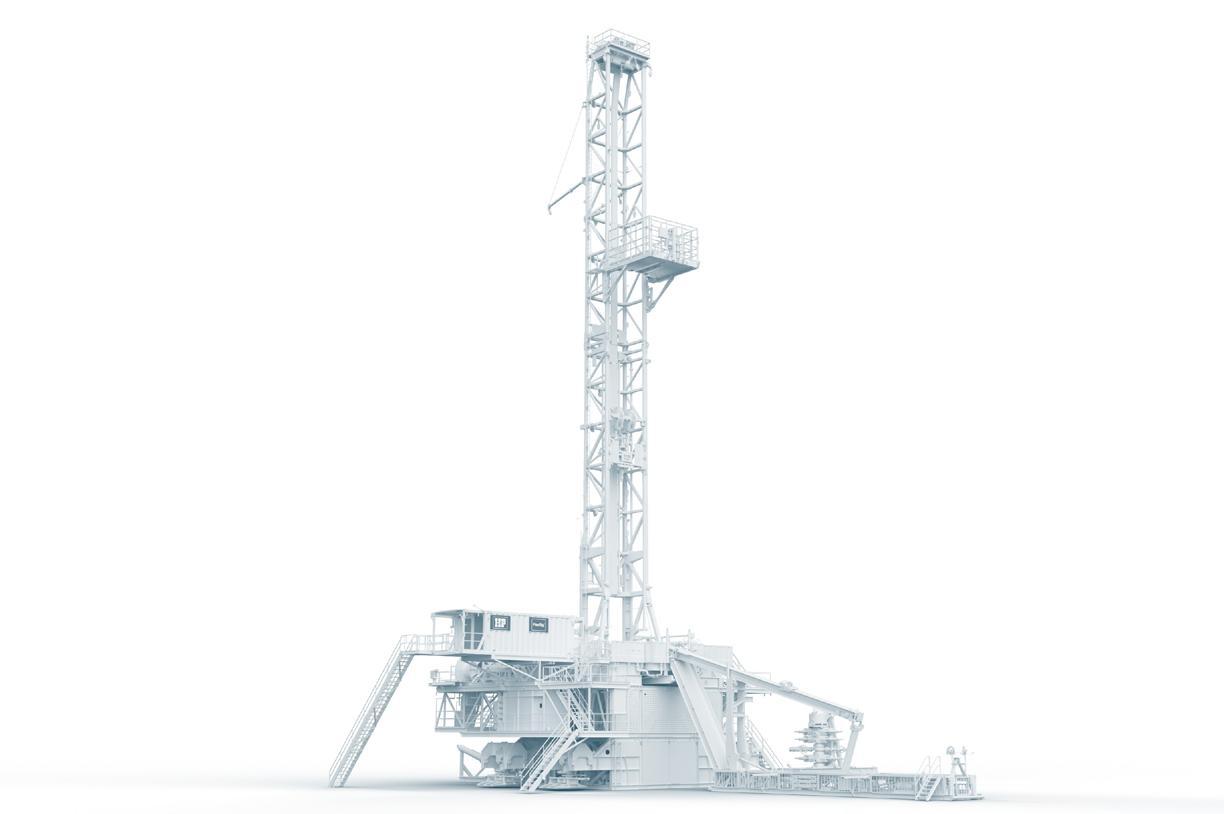

Climate Transparency 2019 Report
Dubai Electricity and Water Authority 2019 Emission Factors
2019 CO2 Emission Factors of the Interconnected System of Ecuador
The Climate Registry 2020 Default Emission Factors
2007 IPCC Fourth Assessment Report
Non-financial information is subject to measurement uncertainties resulting from limitations inherent in the nature and the methods used for determining such data. The selection of different but acceptable measurement techniques can result in materially different measurements. The precision of different measurements techniques may also vary.
The information and opinions contained in this report are provided as of the date of this report and are subject to change without notice. We do not undertake to update or revise any such statements. This report represents our current policy and intent and is not intended to create legal rights or obligations. This report may contain or incorporate by reference public information not separately reviewed, approved, or endorsed by us and no representation, warranty, or undertaking is made by us as to the accuracy, reasonableness, or completeness of such information. Inclusion of information in this report is not an indication that the subject or information is material to our business, results of operations, or financial position or required to be disclosed in our filings with the U.S. Securities and Exchange Commission (the “SEC”).
Statements in this report, as well as other statements that are cross-referenced, that are not historical facts, contain forward-looking statements within the meaning of Section 27A of the Securities Act of 1933, as amended, Section 21E of the Securities and Exchange Act of 1934, as amended and the Private Securities Litigation Reform Act of 1995. Forward-looking statements generally can be identified by the use of forward-looking terminology such as “may,” “will,” “expect,” “intend,” “estimate,” “anticipate,” “believe,” “predict”, “project,” “target,” “continue,” “commits,” or the negative thereof or similar terminology. Forwardlooking statements are based upon our plans, strategies, projections, and goals related to corporate responsibility, sustainability and environmental matters, improvements in operating procedures and technology, financial and performance targets and other forecasts or expectations related to, or dependent on, our business outlook and other aspects of our operations.
Such statements are based on certain assumptions and analyses we make in light of our perception of historical trends, current conditions, and available information, expected future developments, as well as standards for measuring progress that are still developing. These forward-looking statements are subject to certain risks, uncertainties and assumptions that may cause actual results to vary materially from those indicated. These risks and uncertainties include those detailed in our most recent reports on forms 10-K, 10-Q and 8-K filed with or furnished to the SEC, as well as, among others, risks and uncertainties related to: future results of operations and liquidity; our inability to reduce our environmental impact and meet emissions reduction goals; and our inability to meet workforce expectations or otherwise perform at desired ESG standards. The inclusion of these forward-looking statements should not be regarded as a representation that such plans, estimates, or expectations will be achieved. The forward-looking statements in this report speak only as of 2022, and we disclaim any intention or obligation to update publicly or revise such statements, whether as a result of new information, future events, or otherwise.
Website references are provided for convenience only. The content on the referenced websites is not incorporated by reference into this report, nor does it constitute a part of this report. We assume no liability for any third-party content contained on the referenced websites.